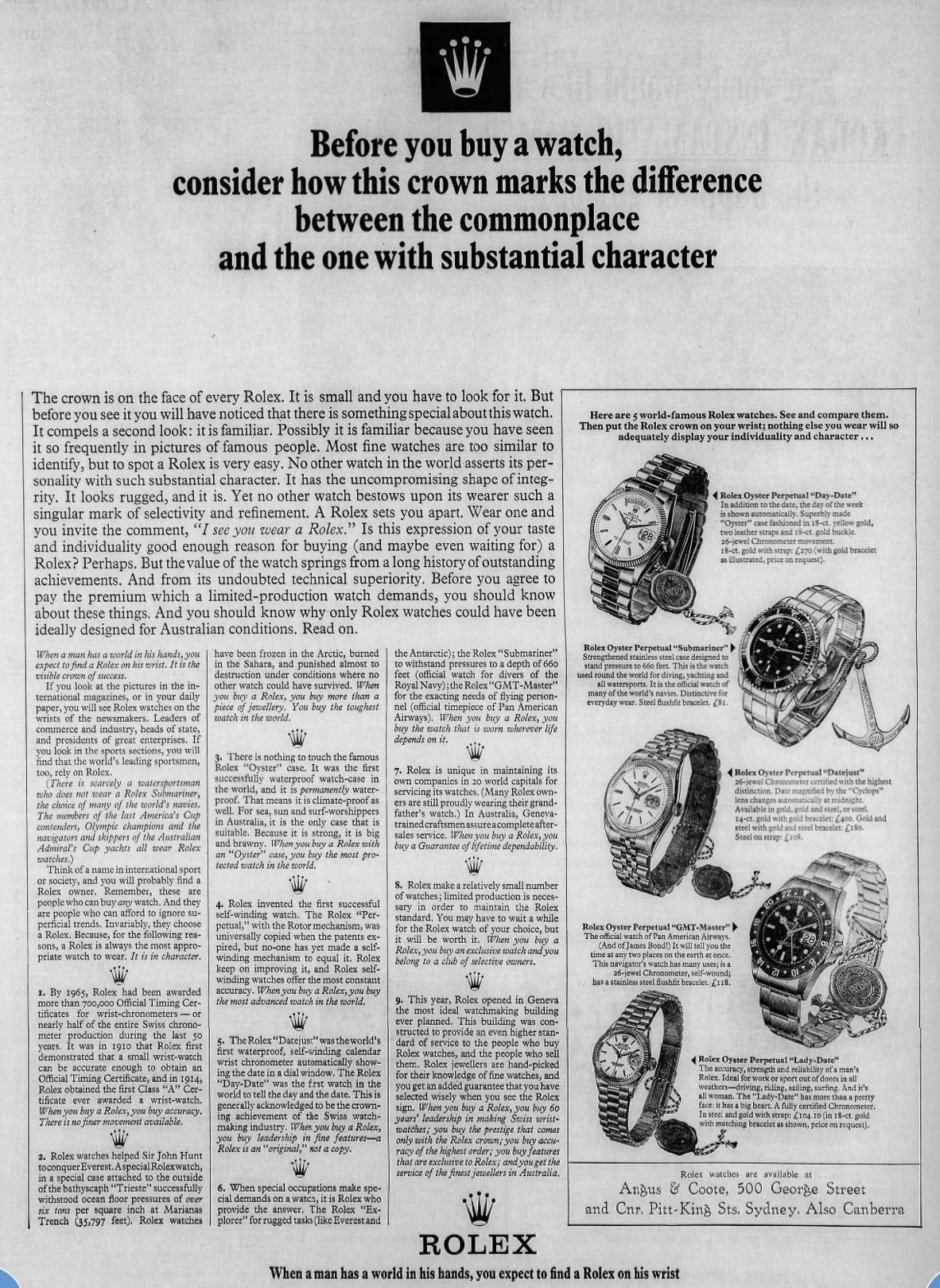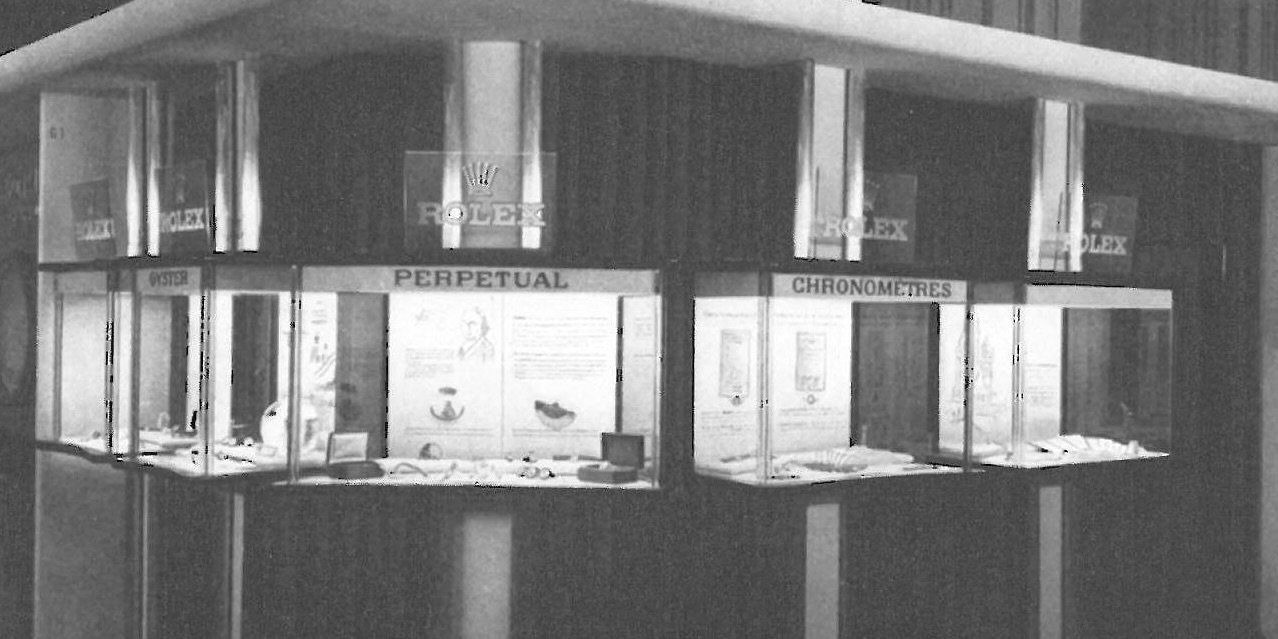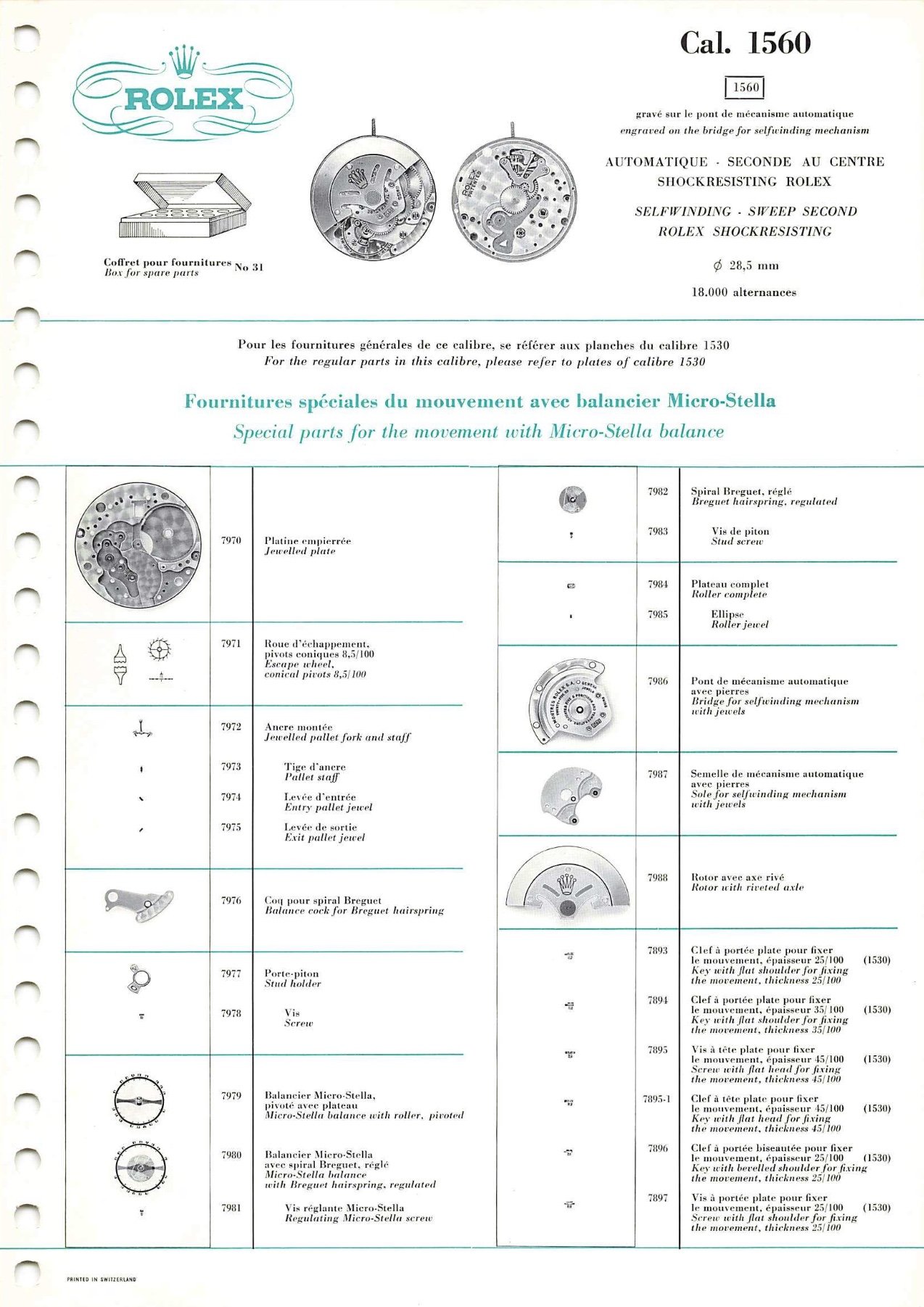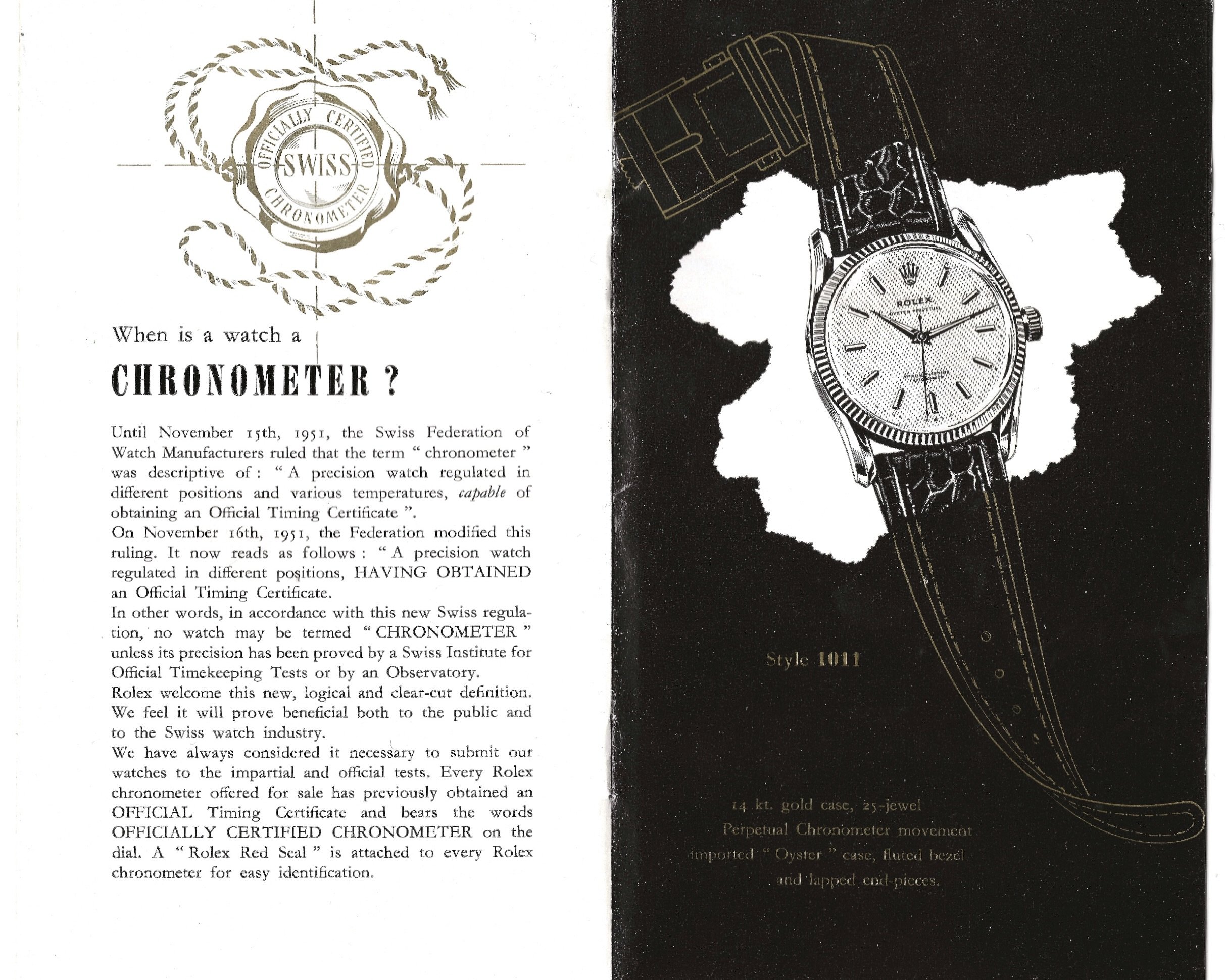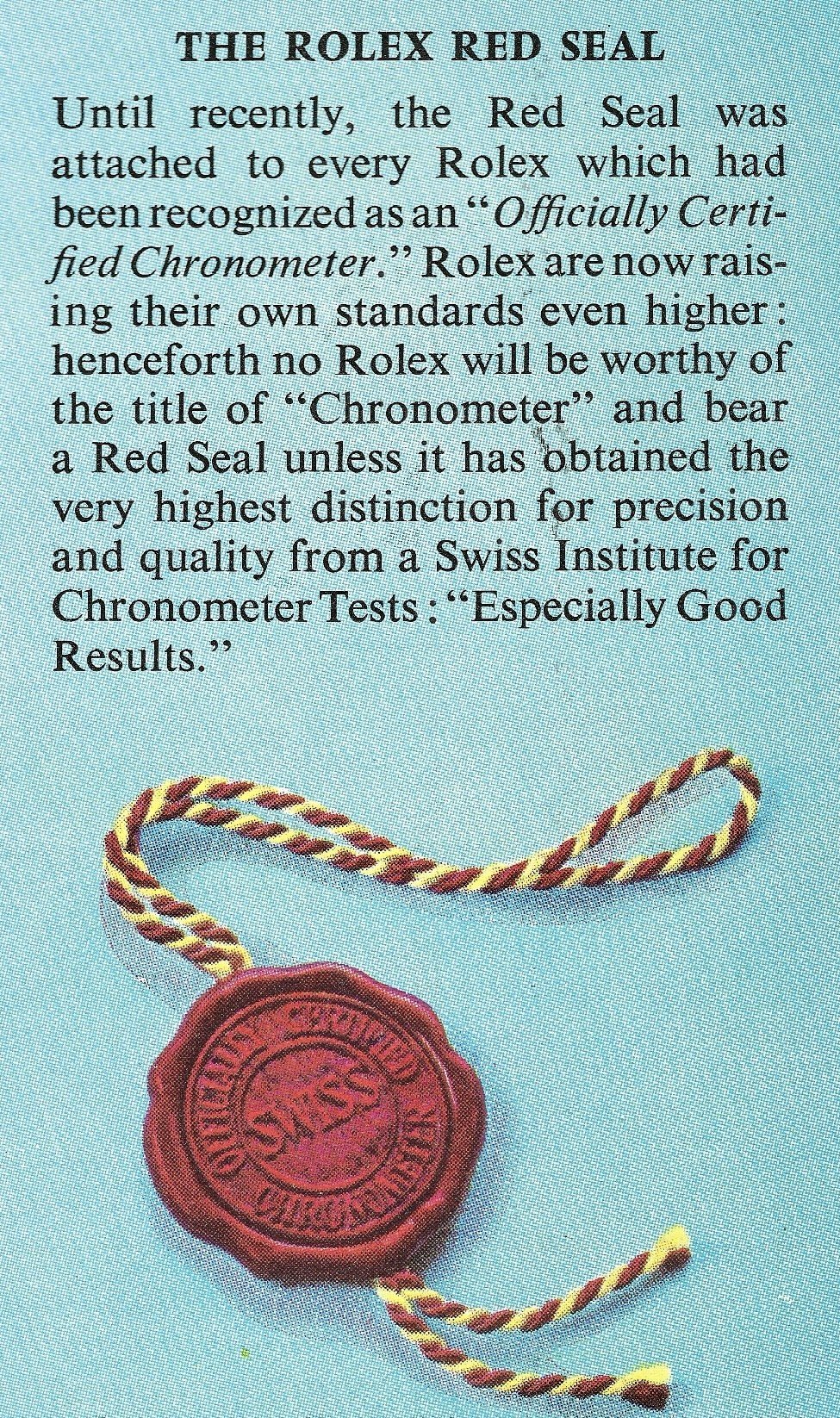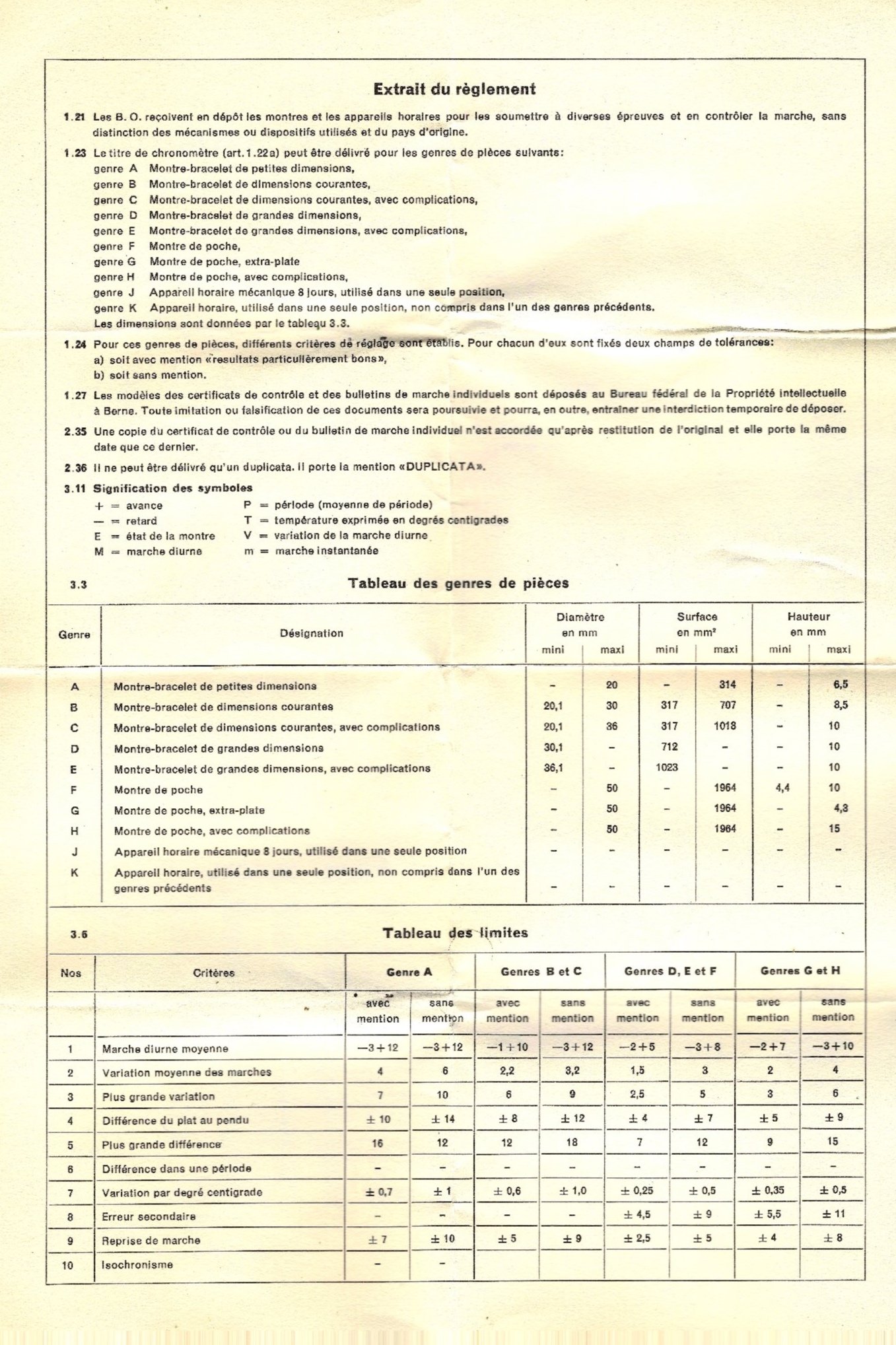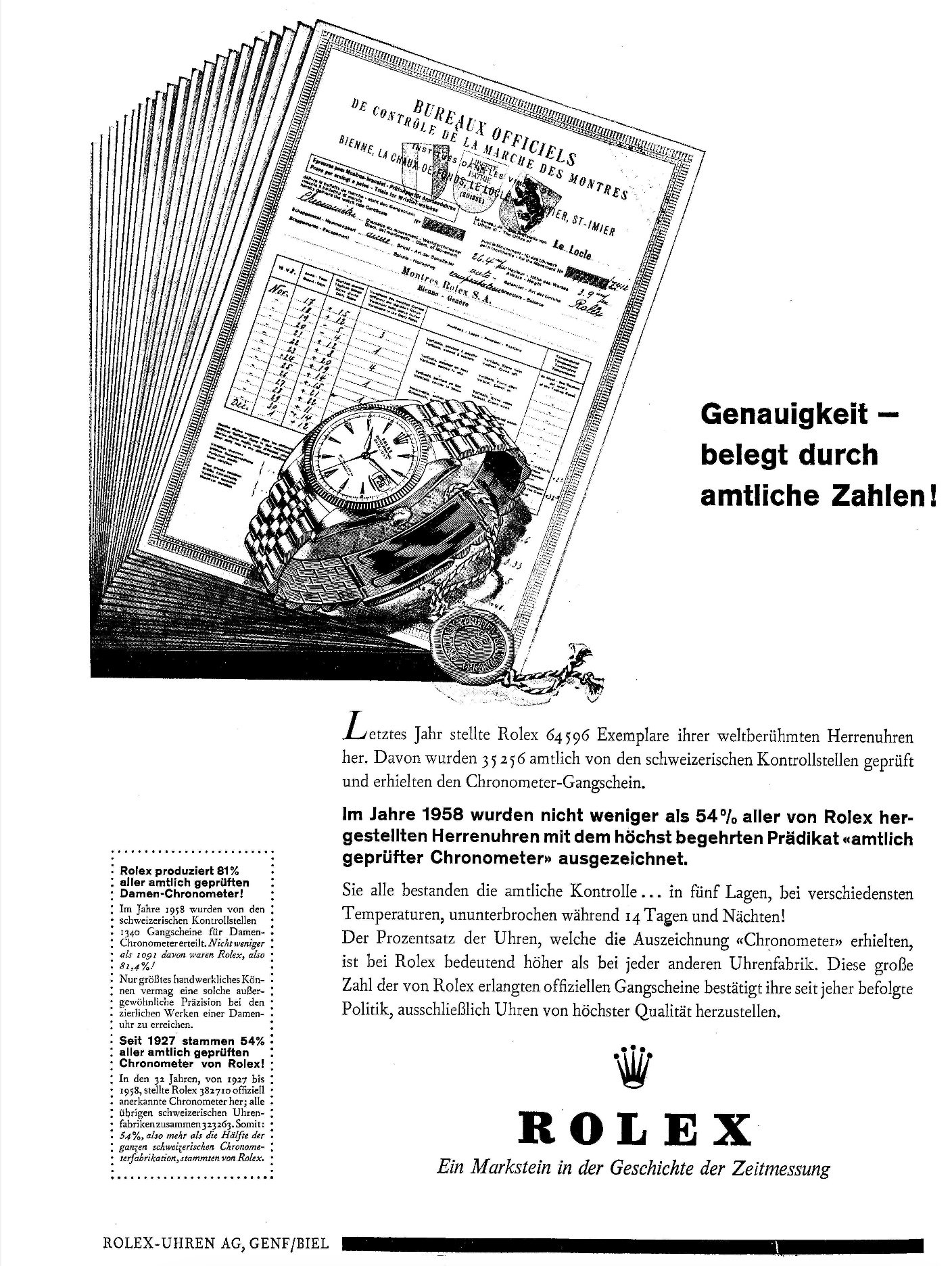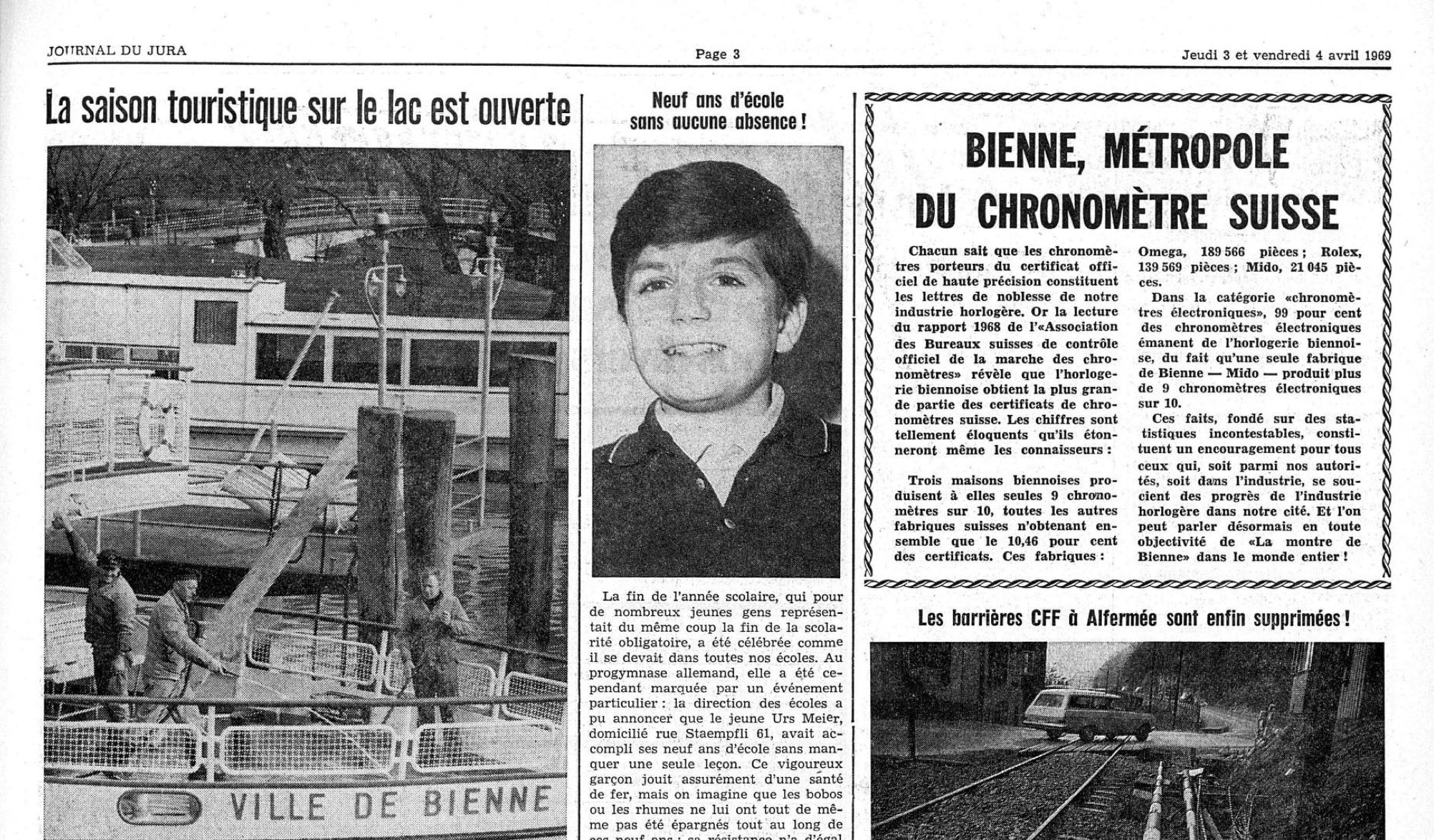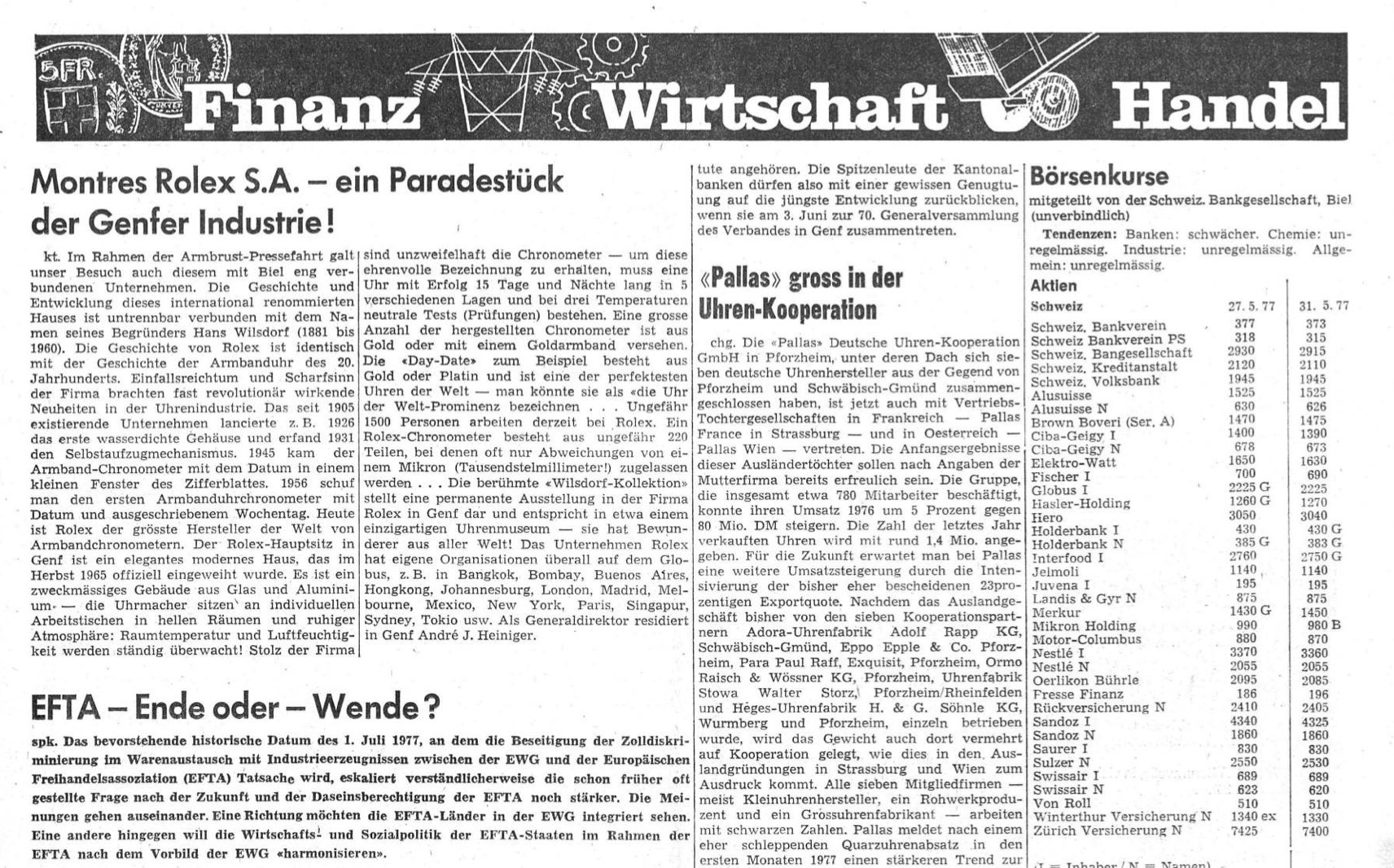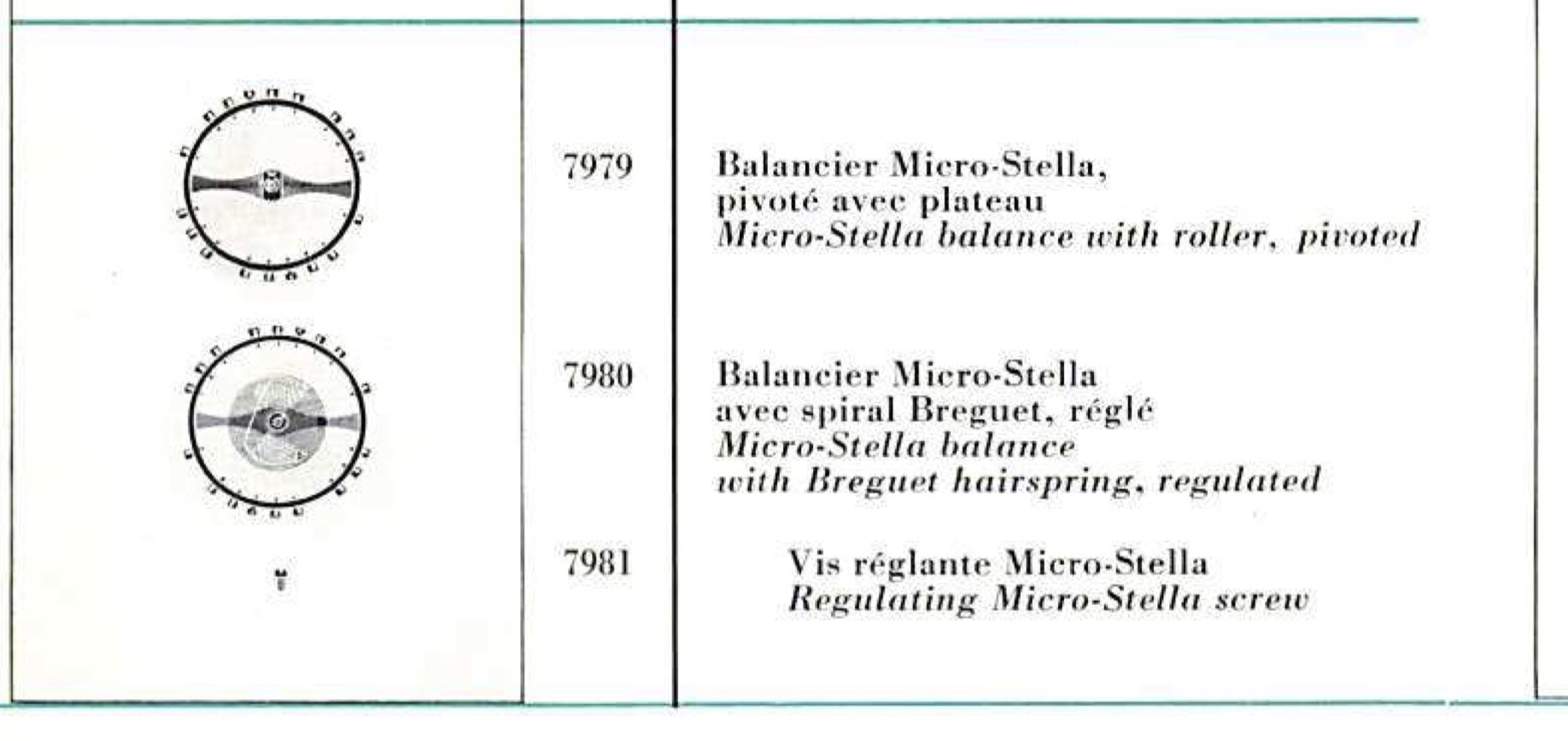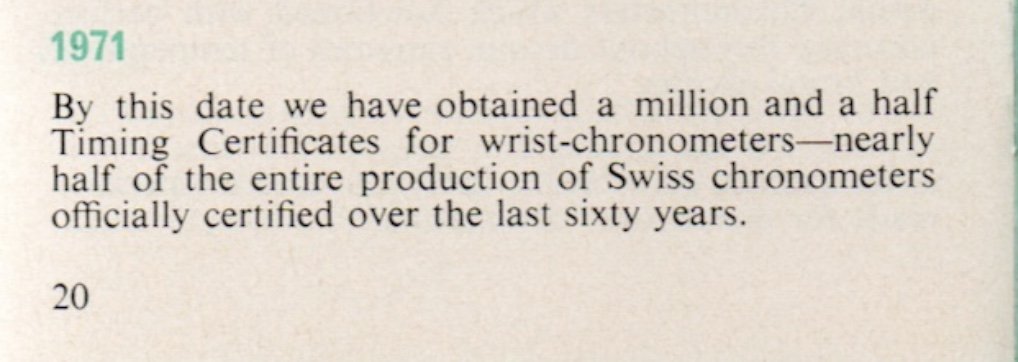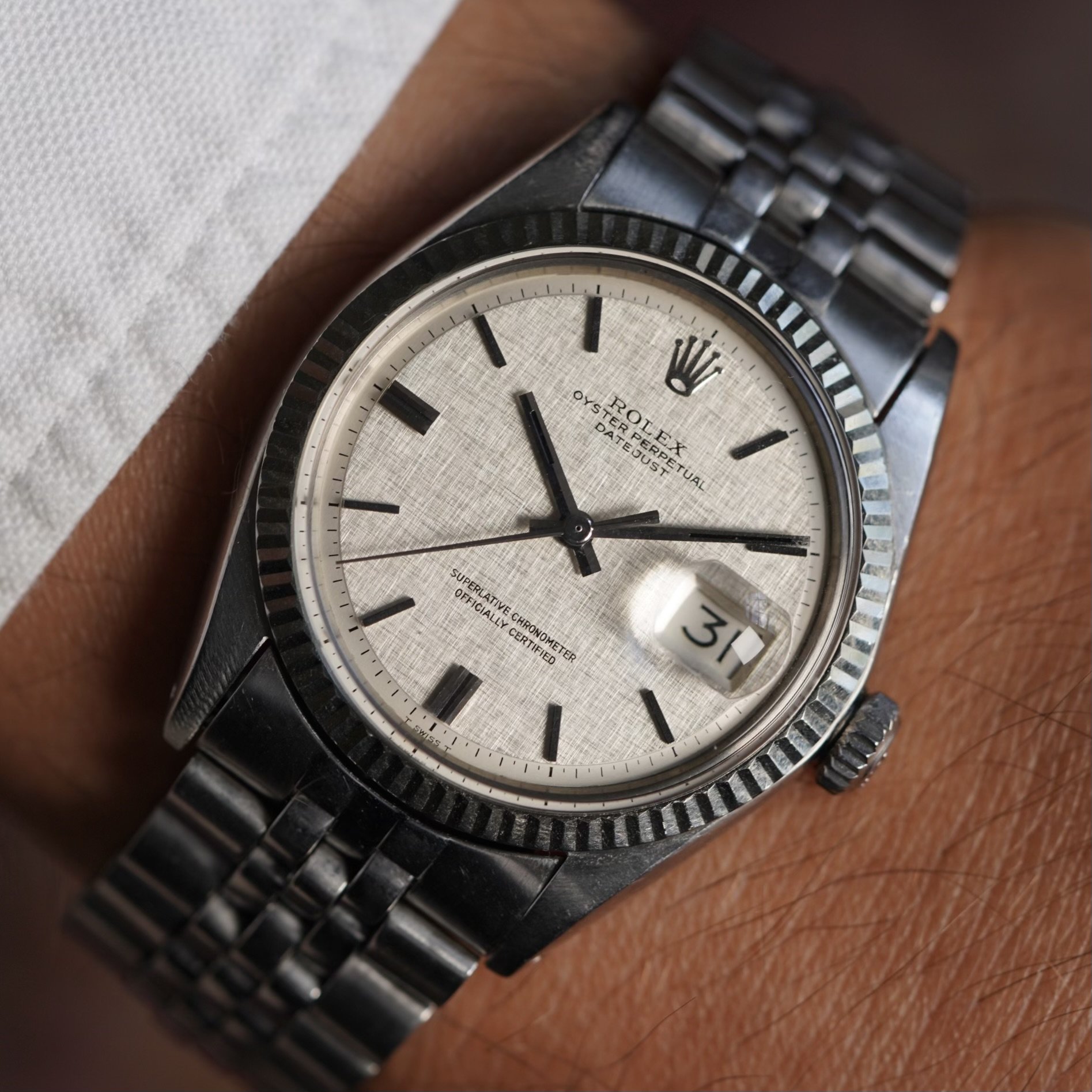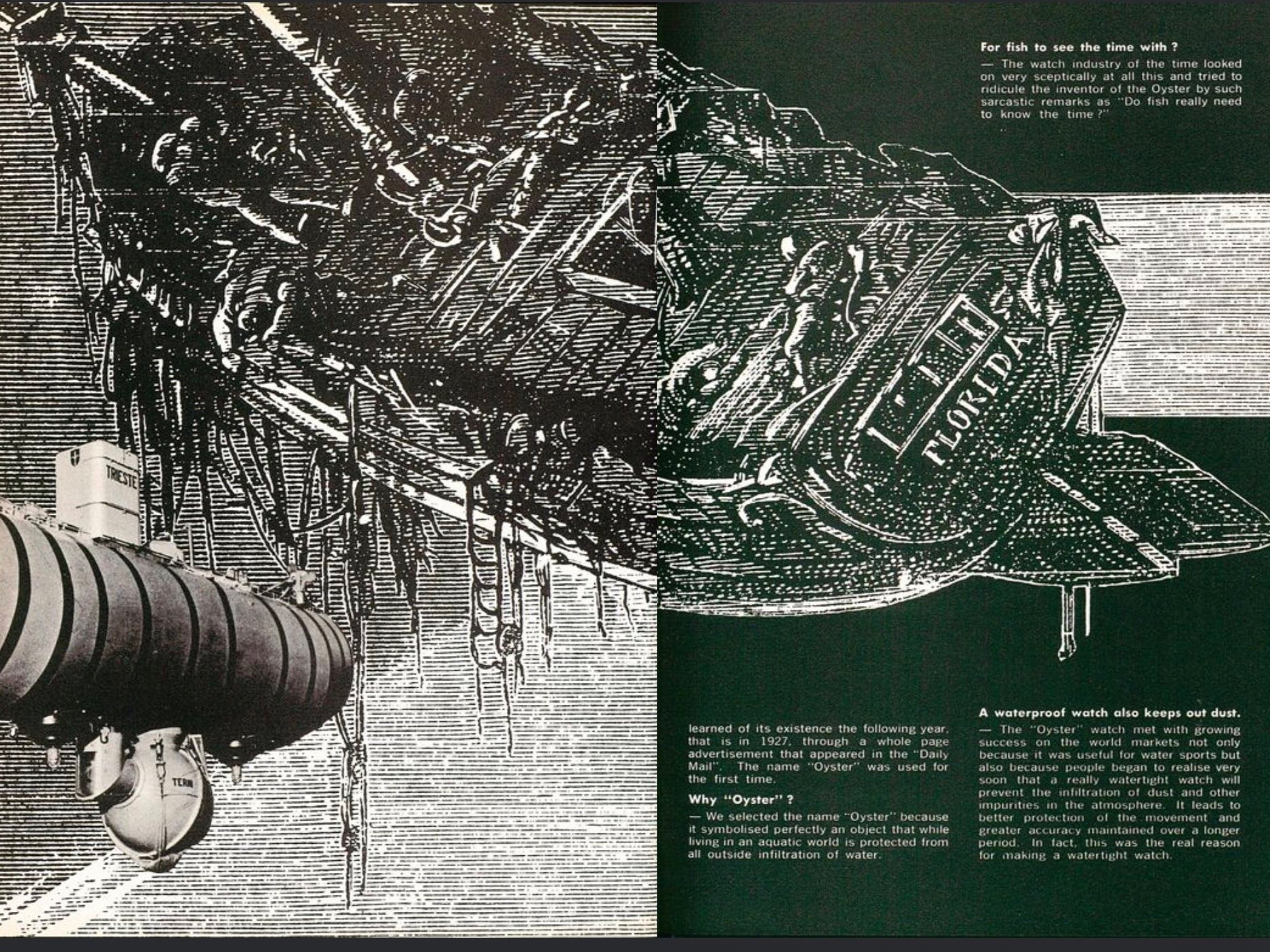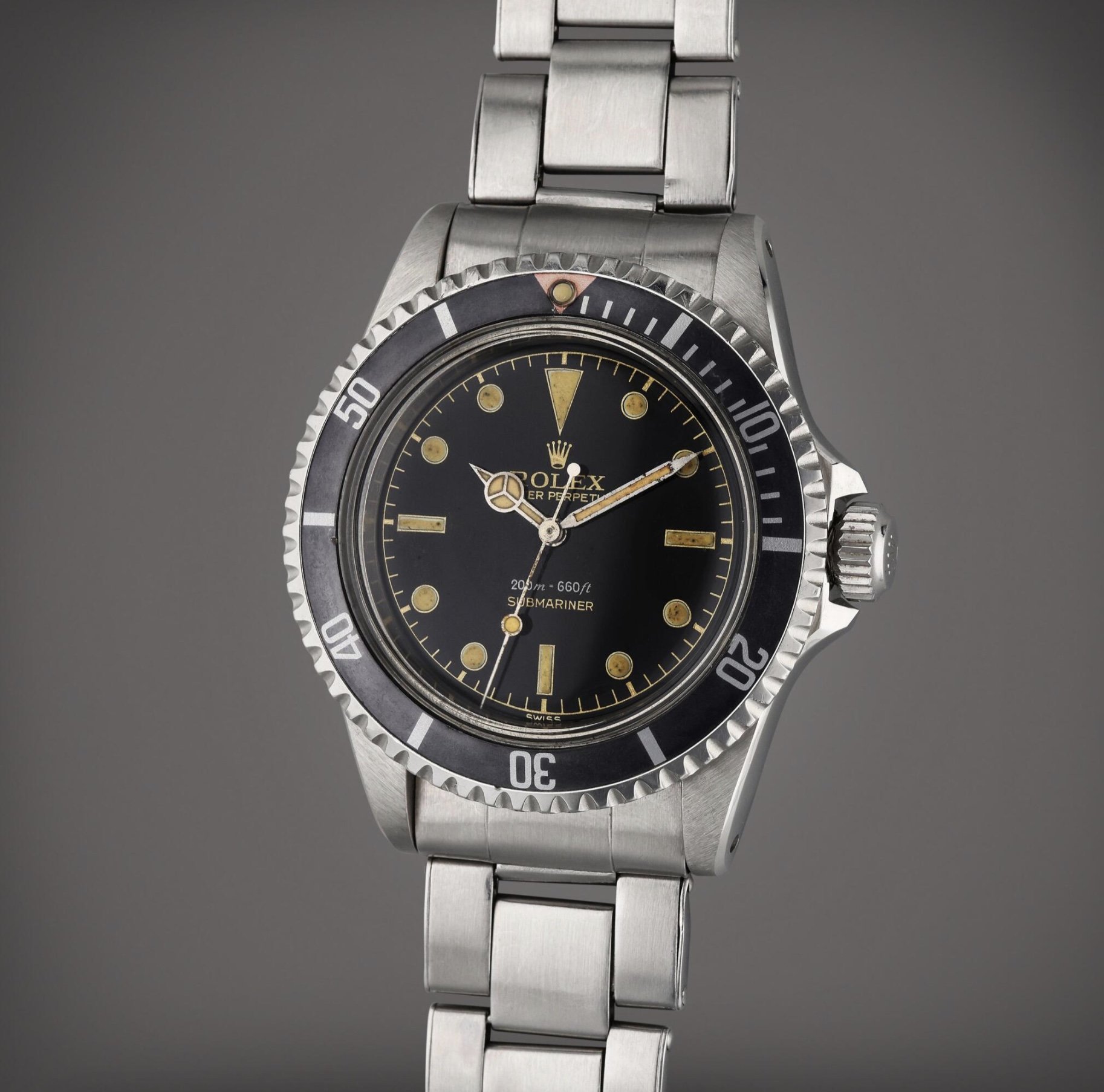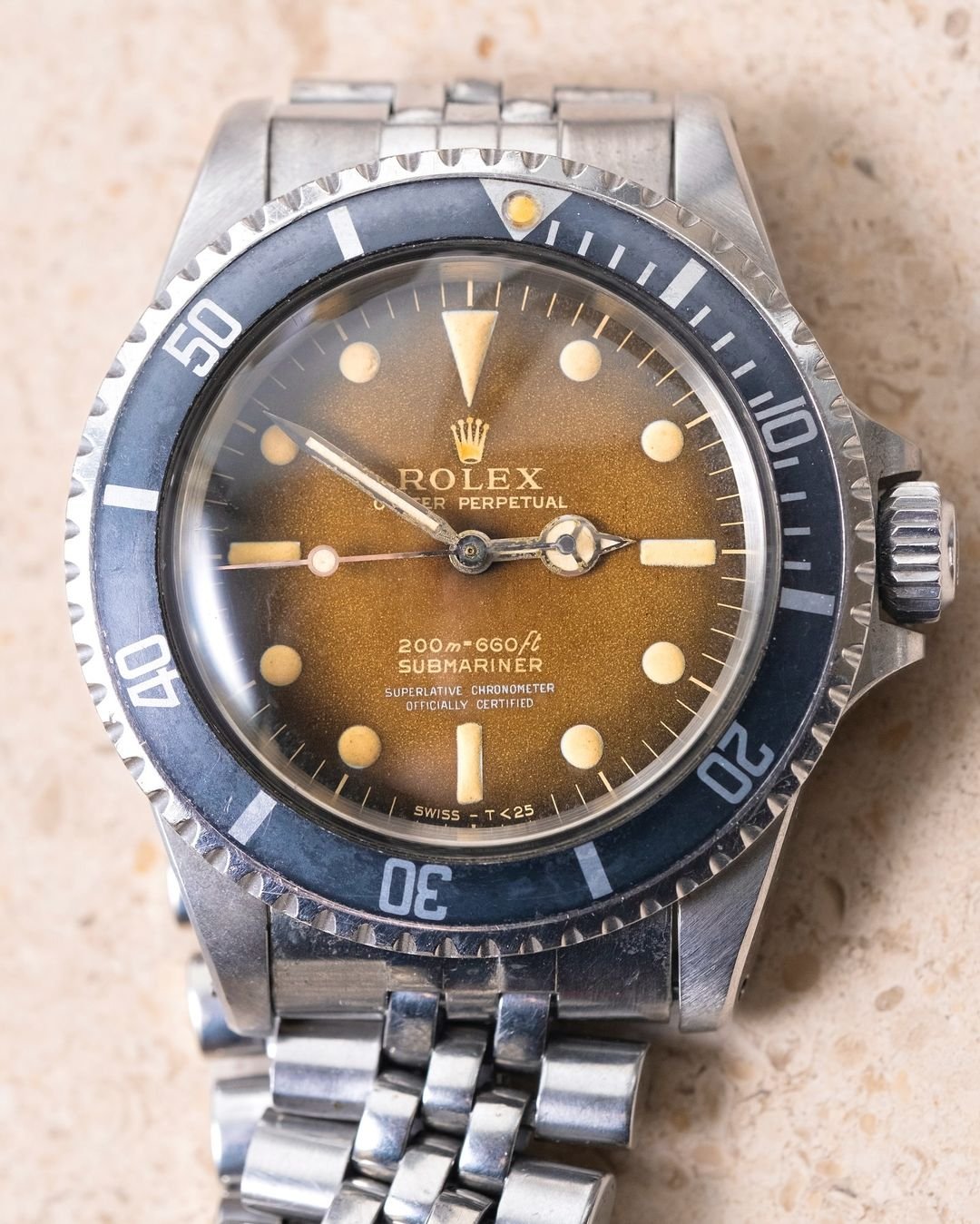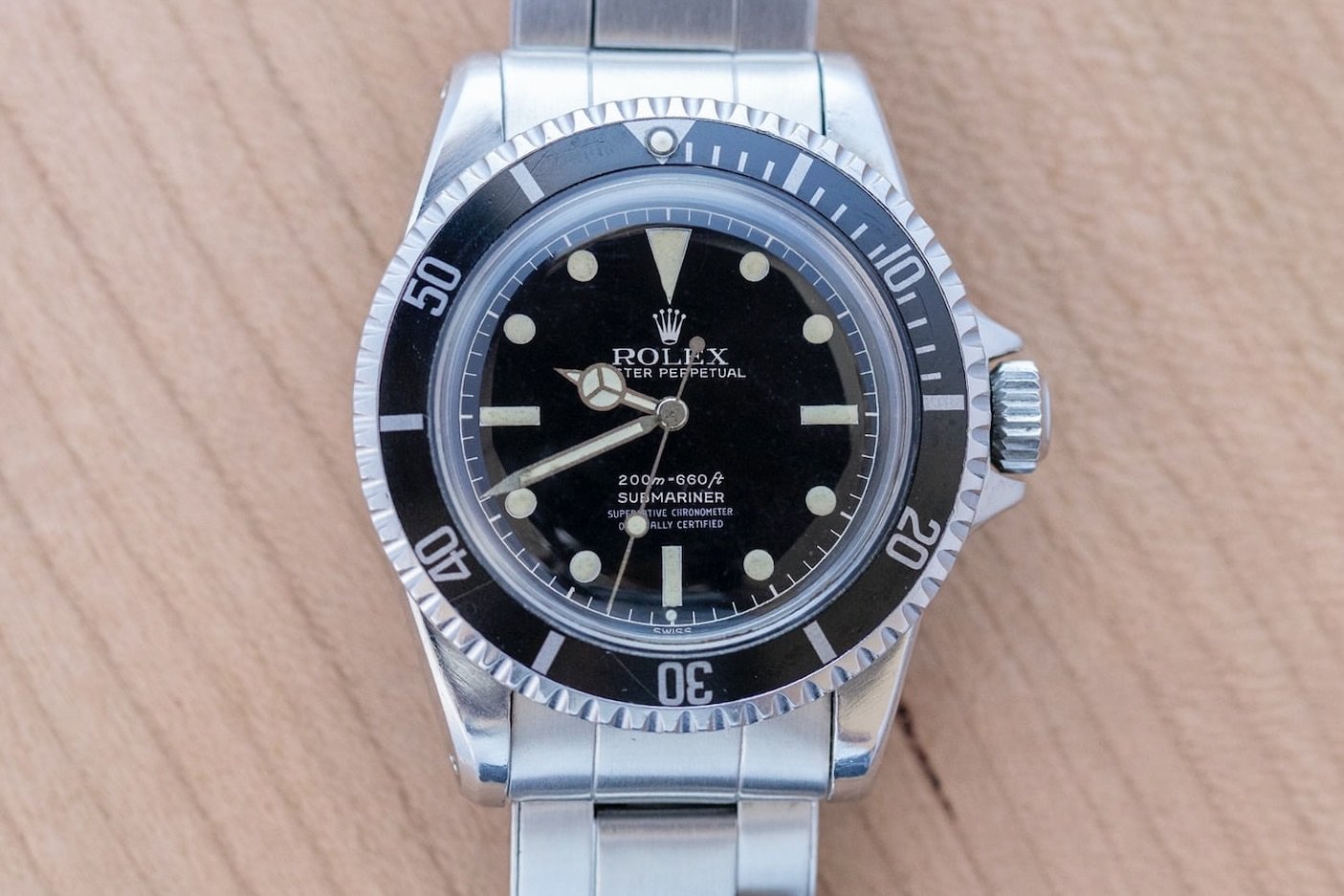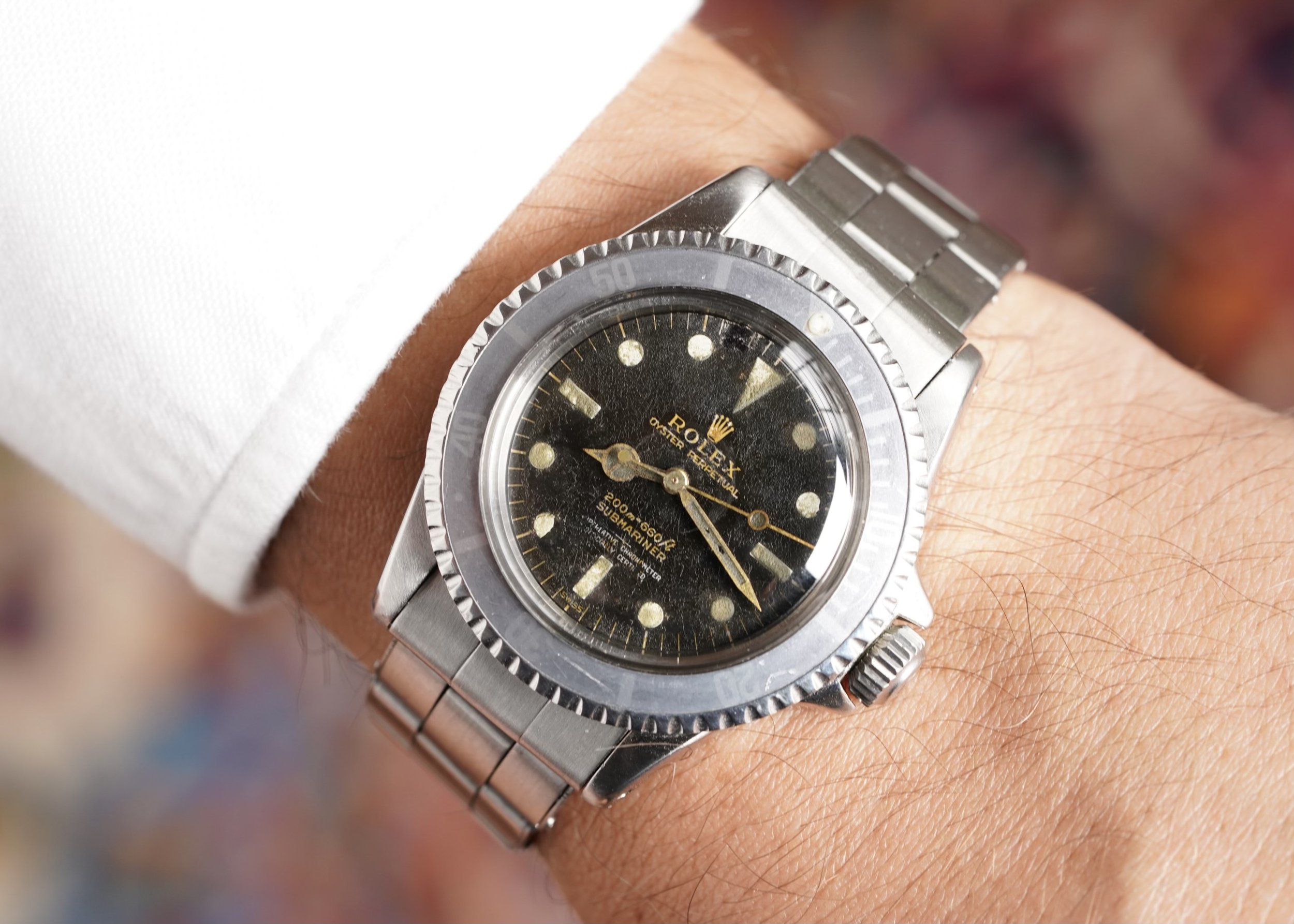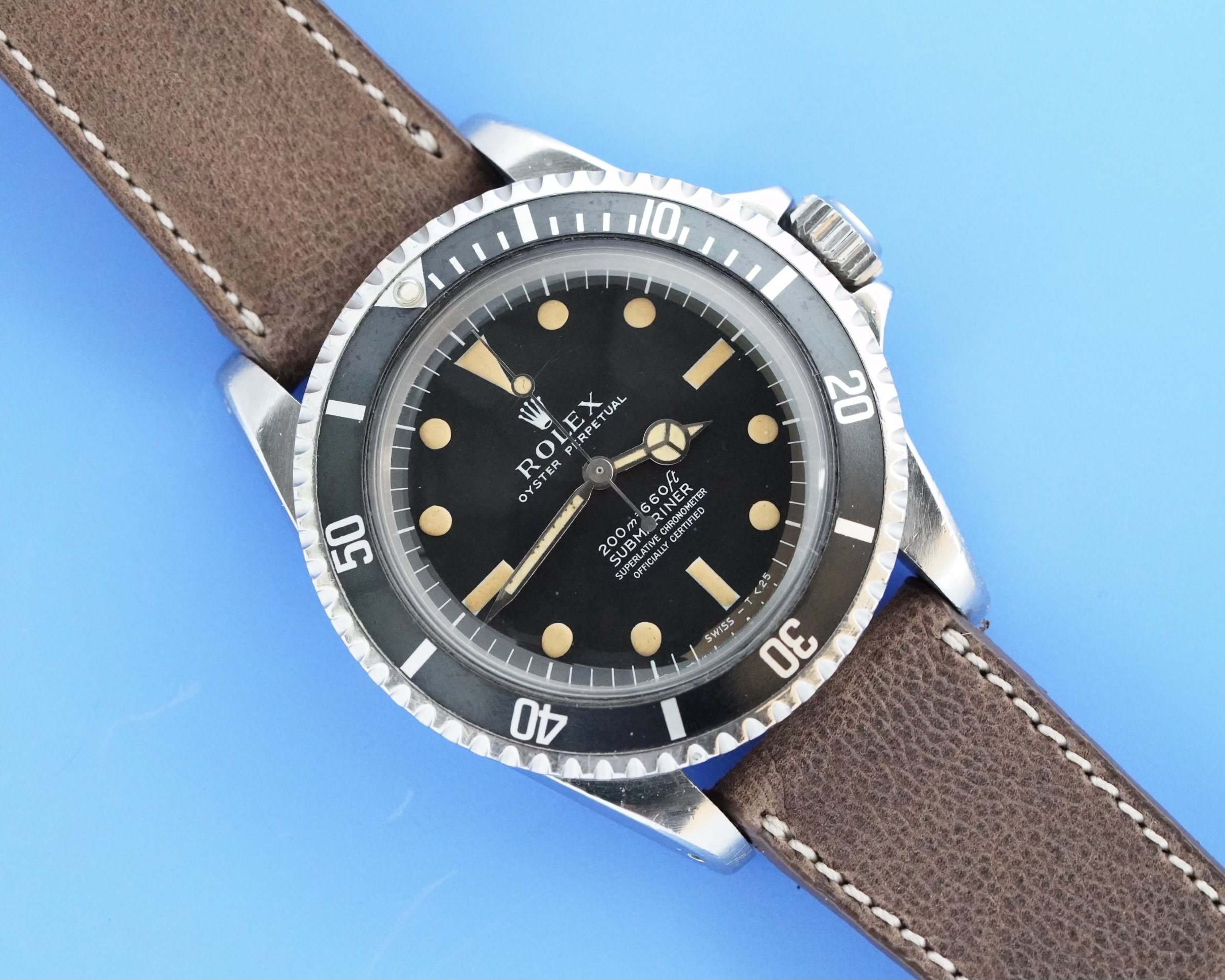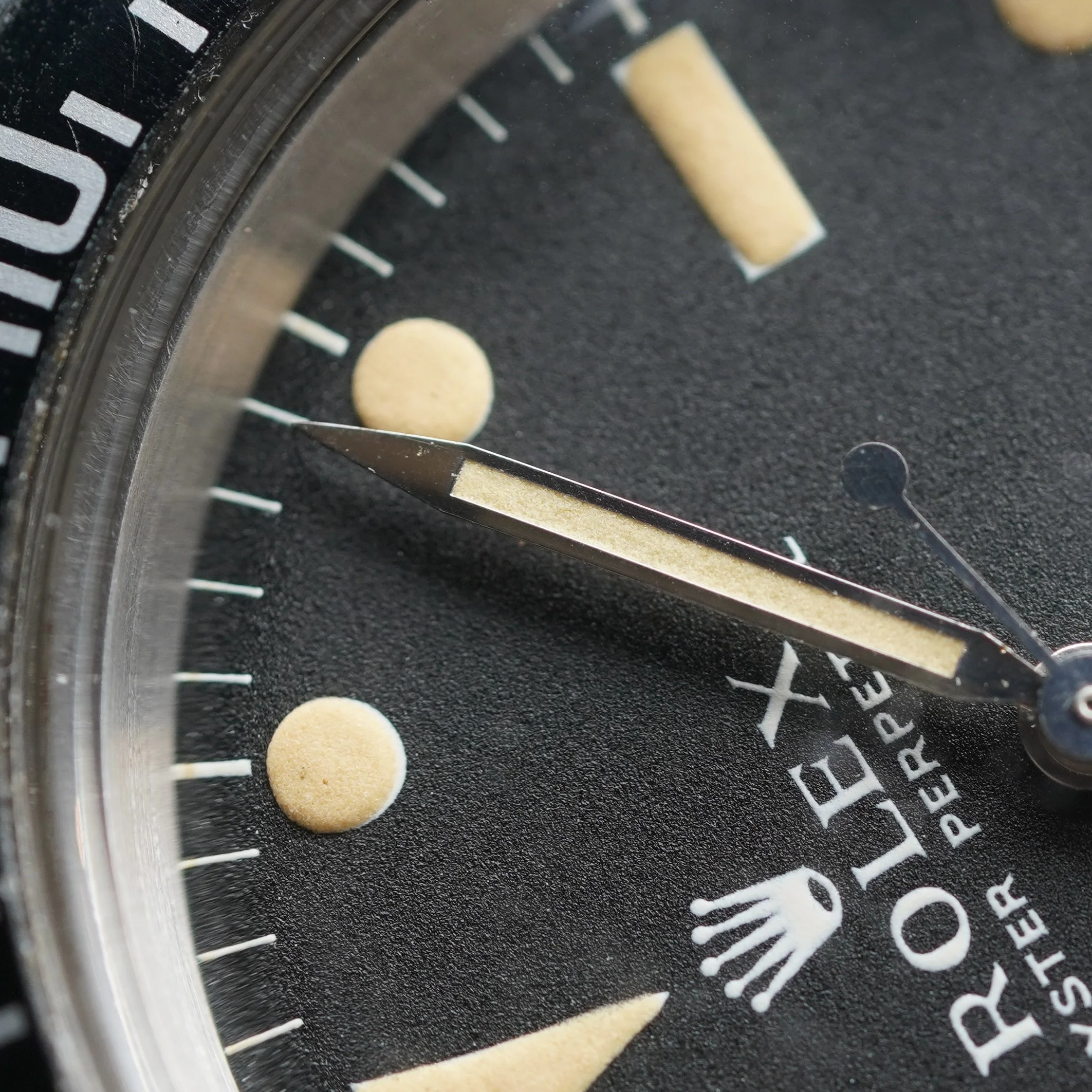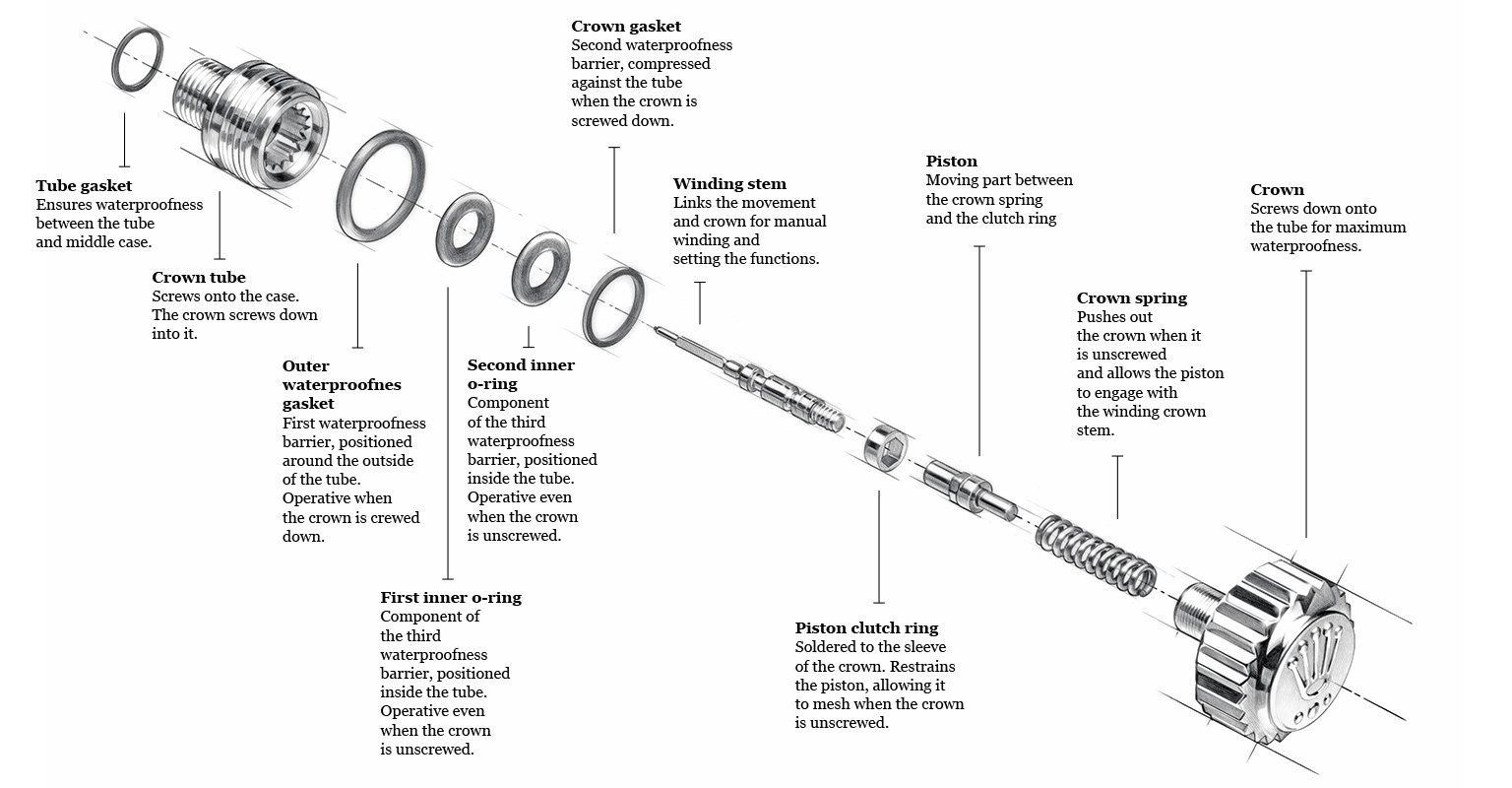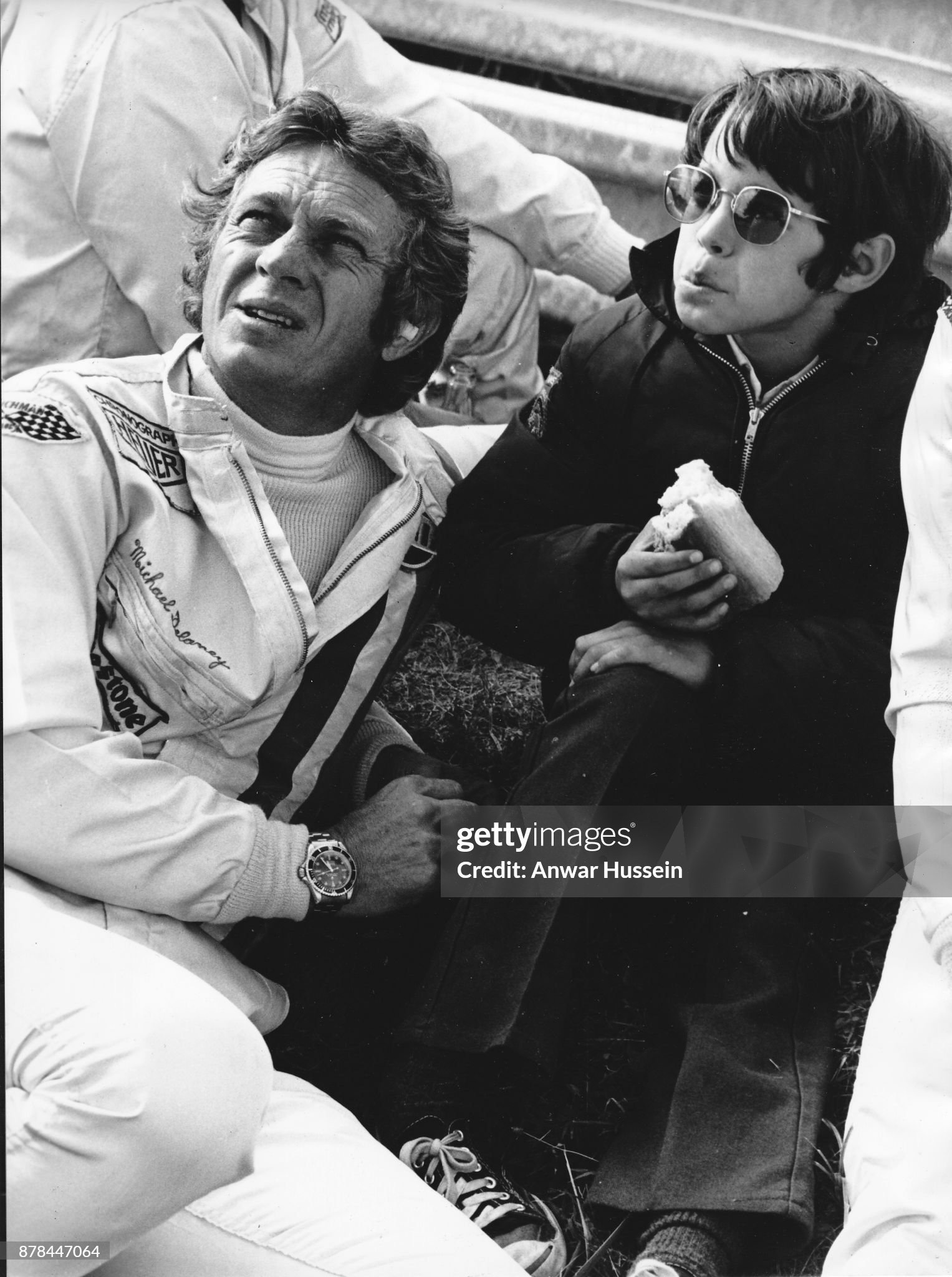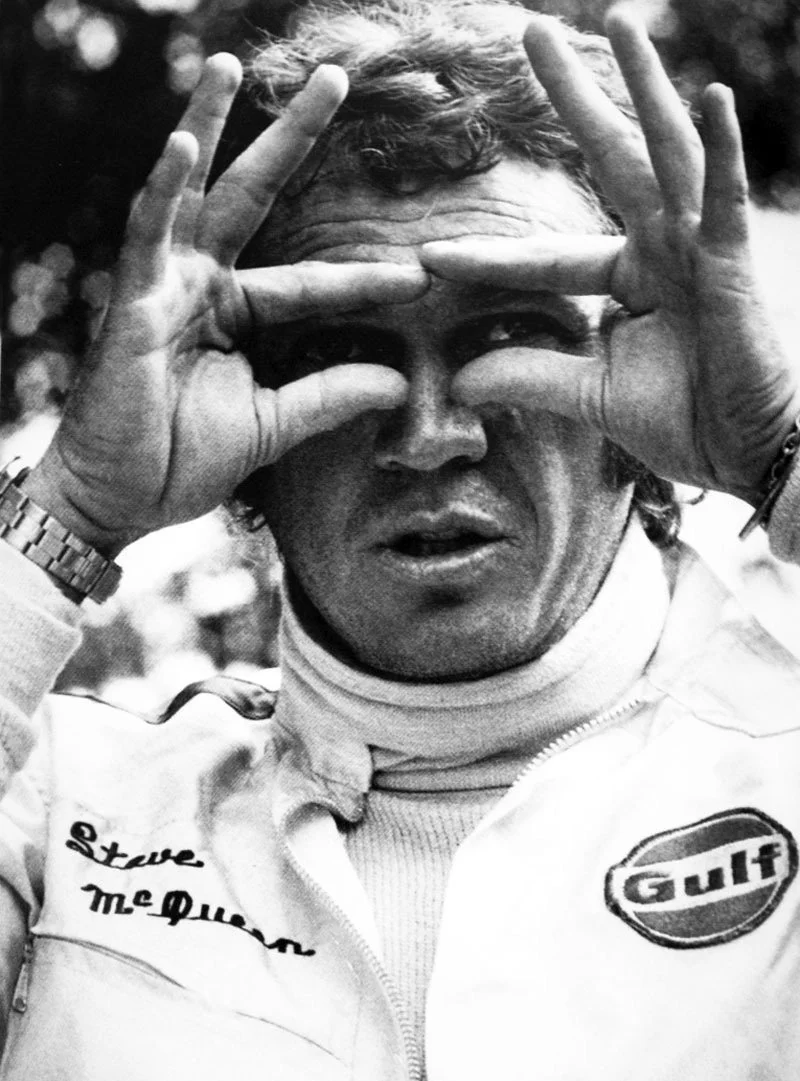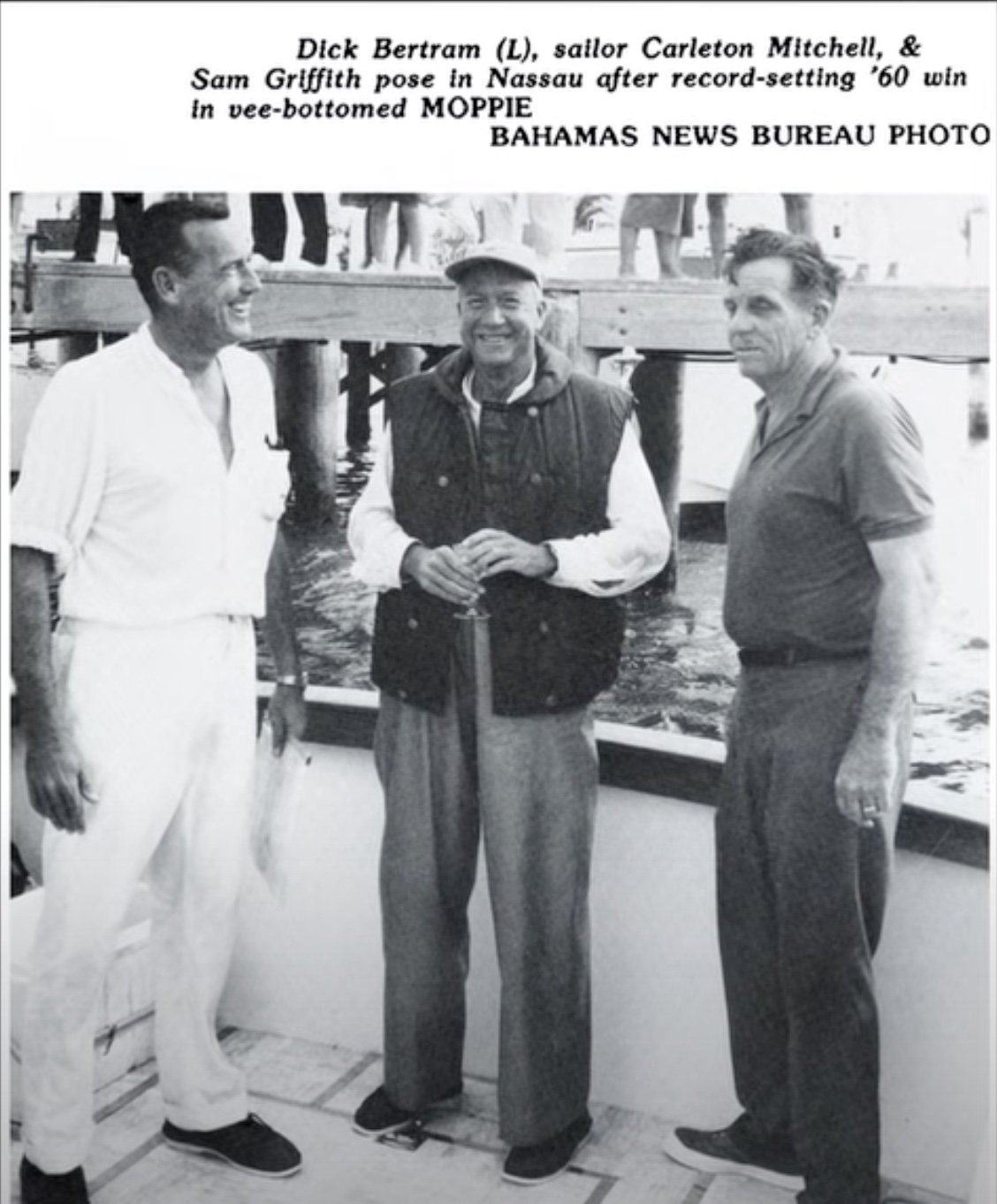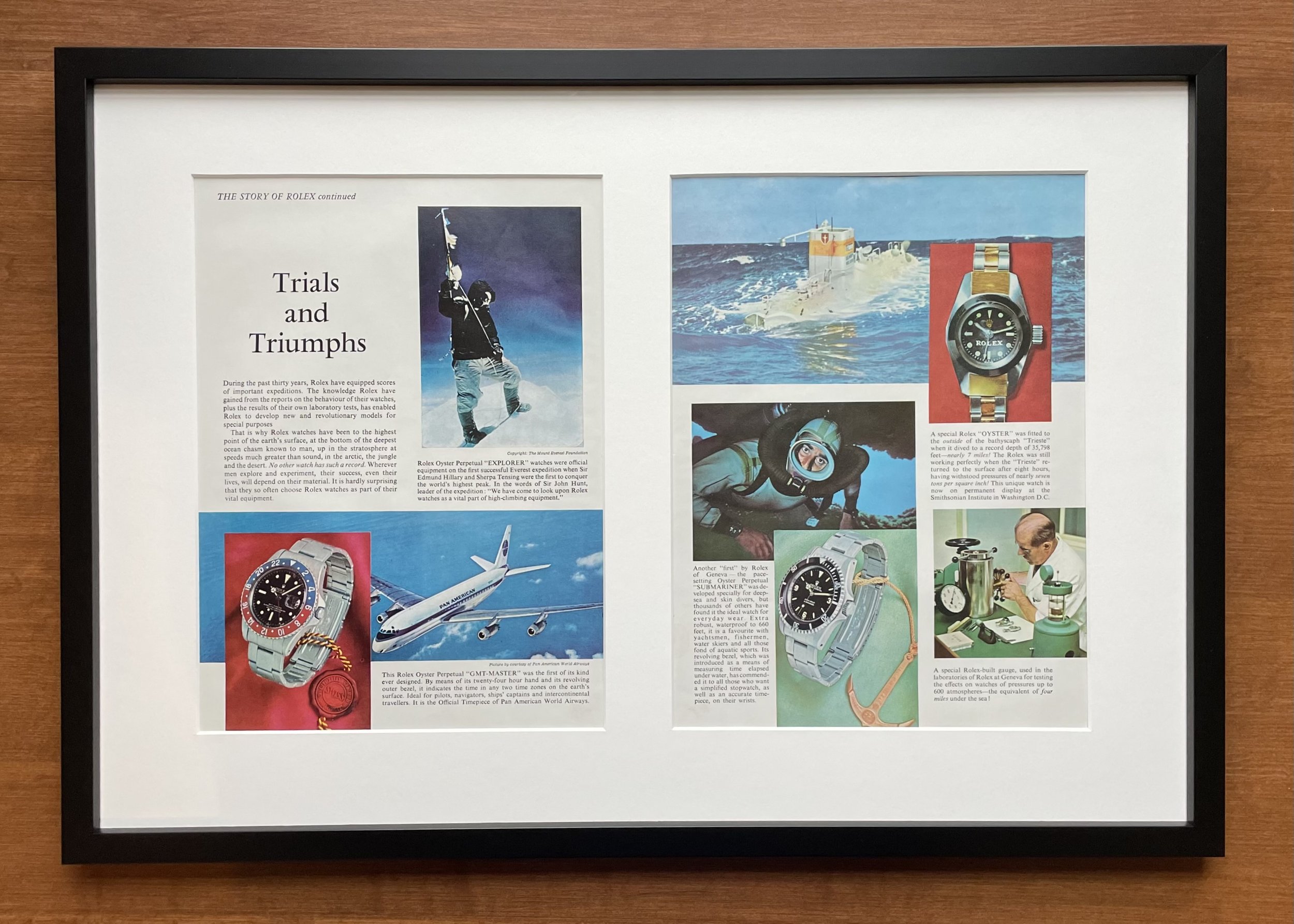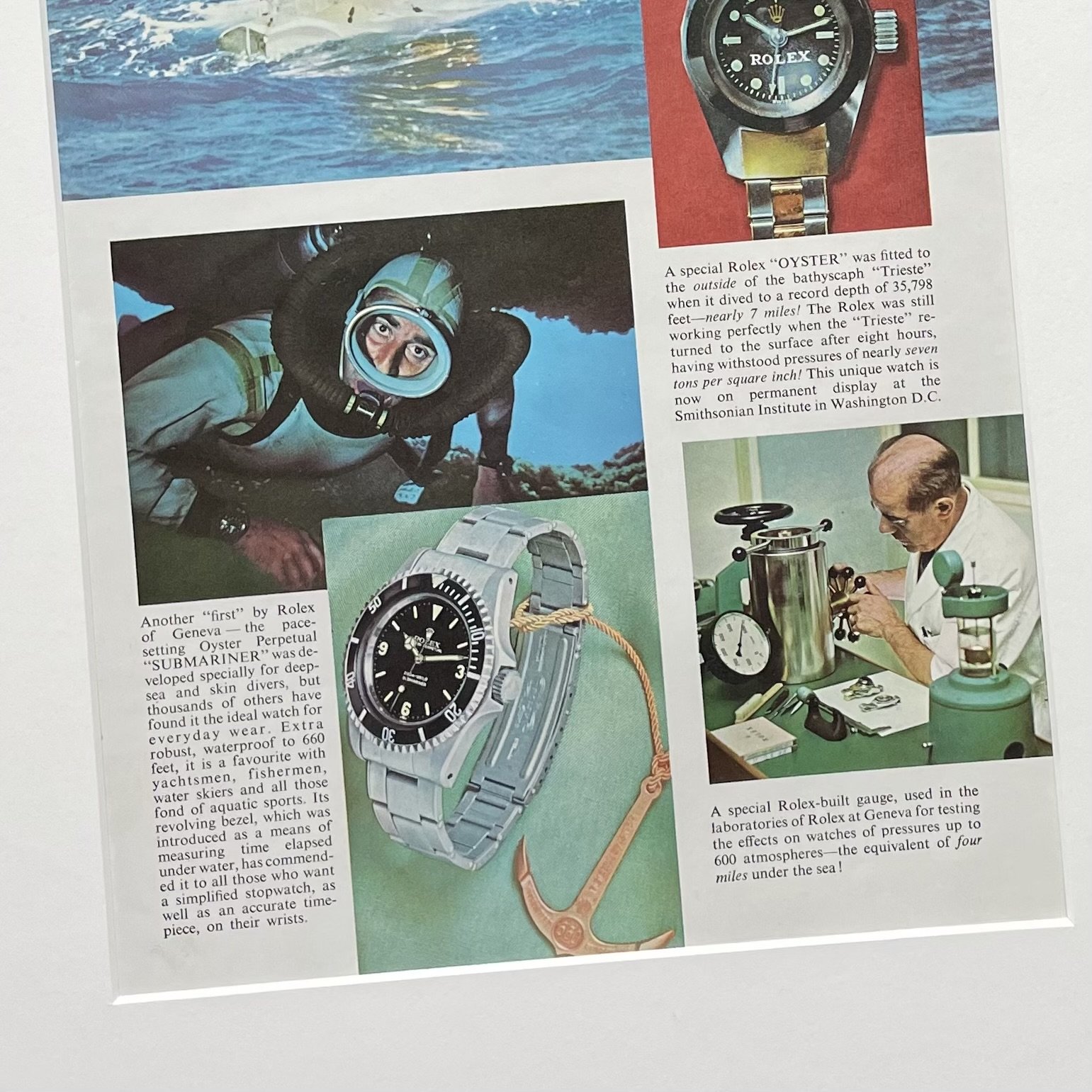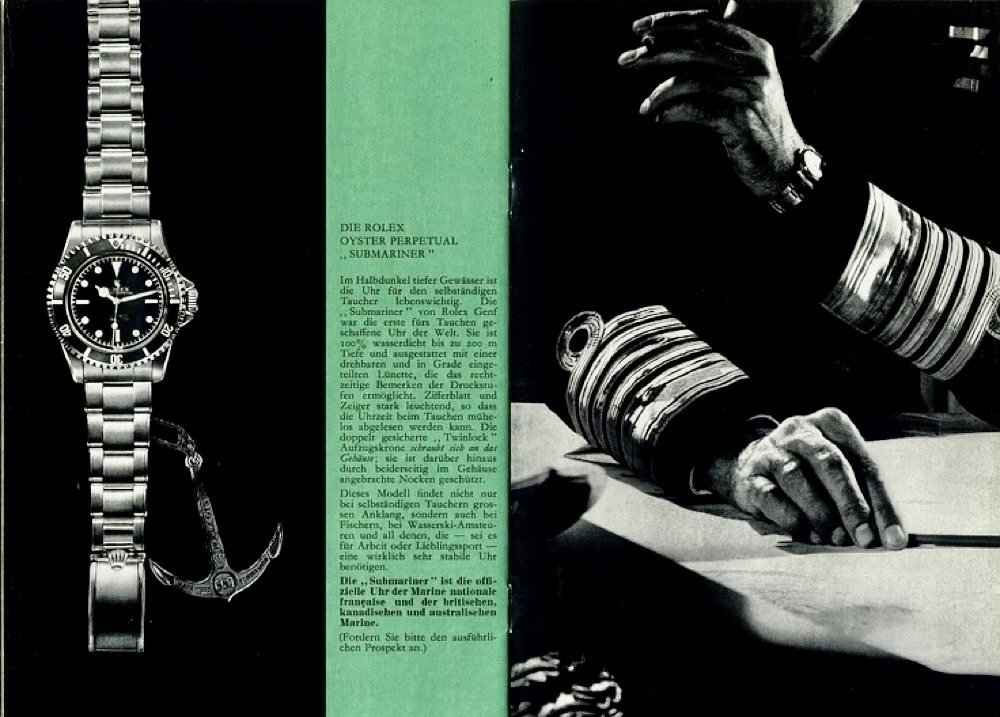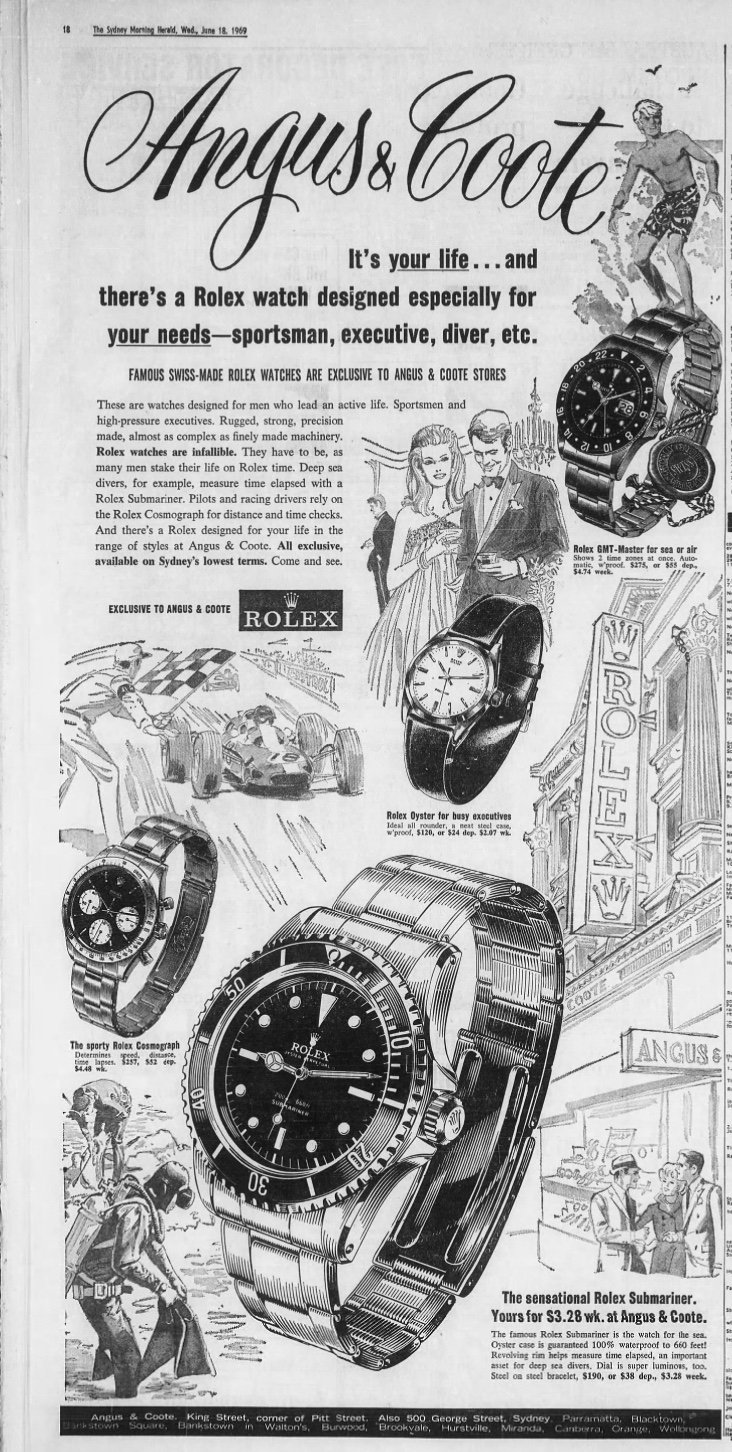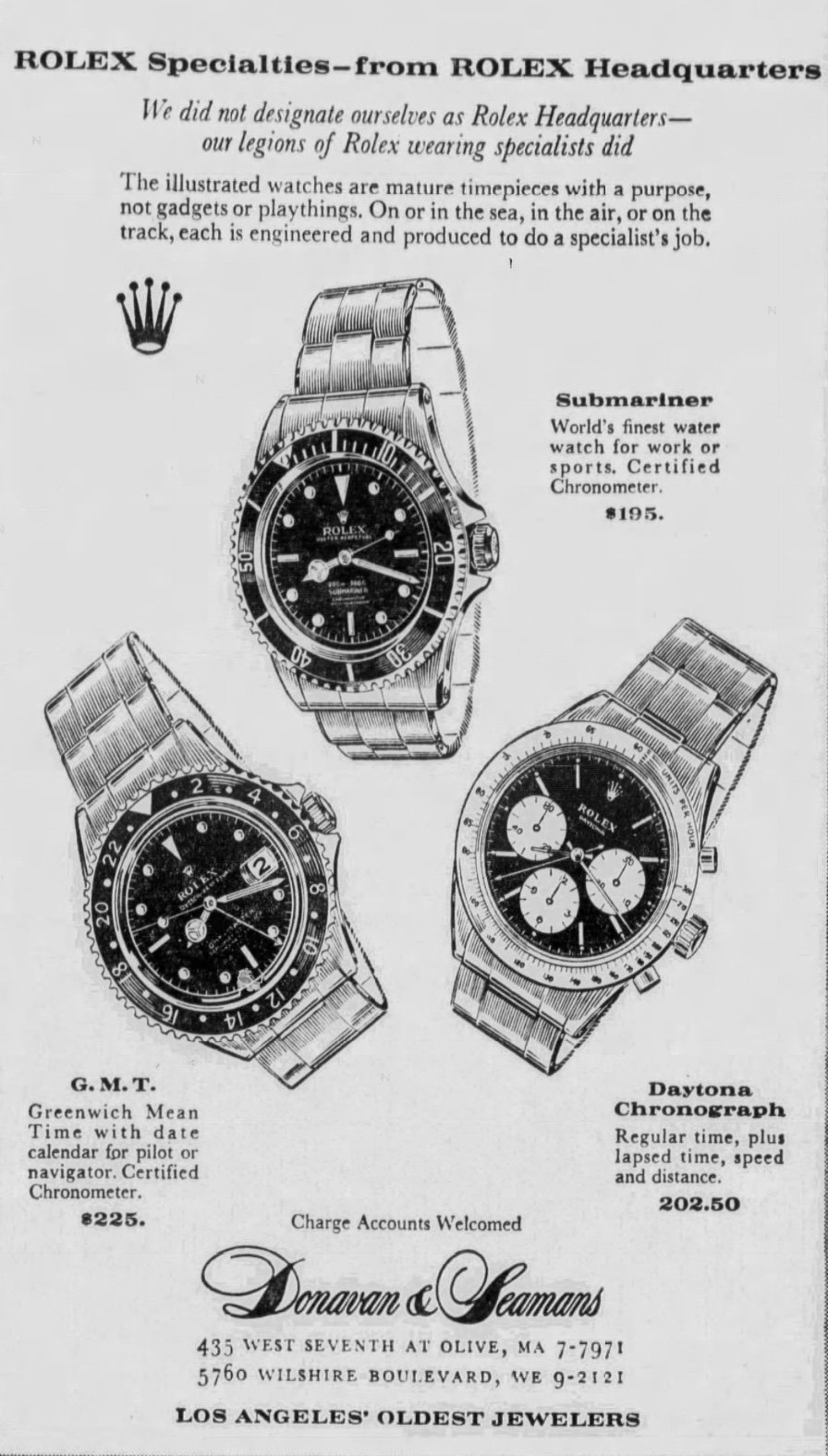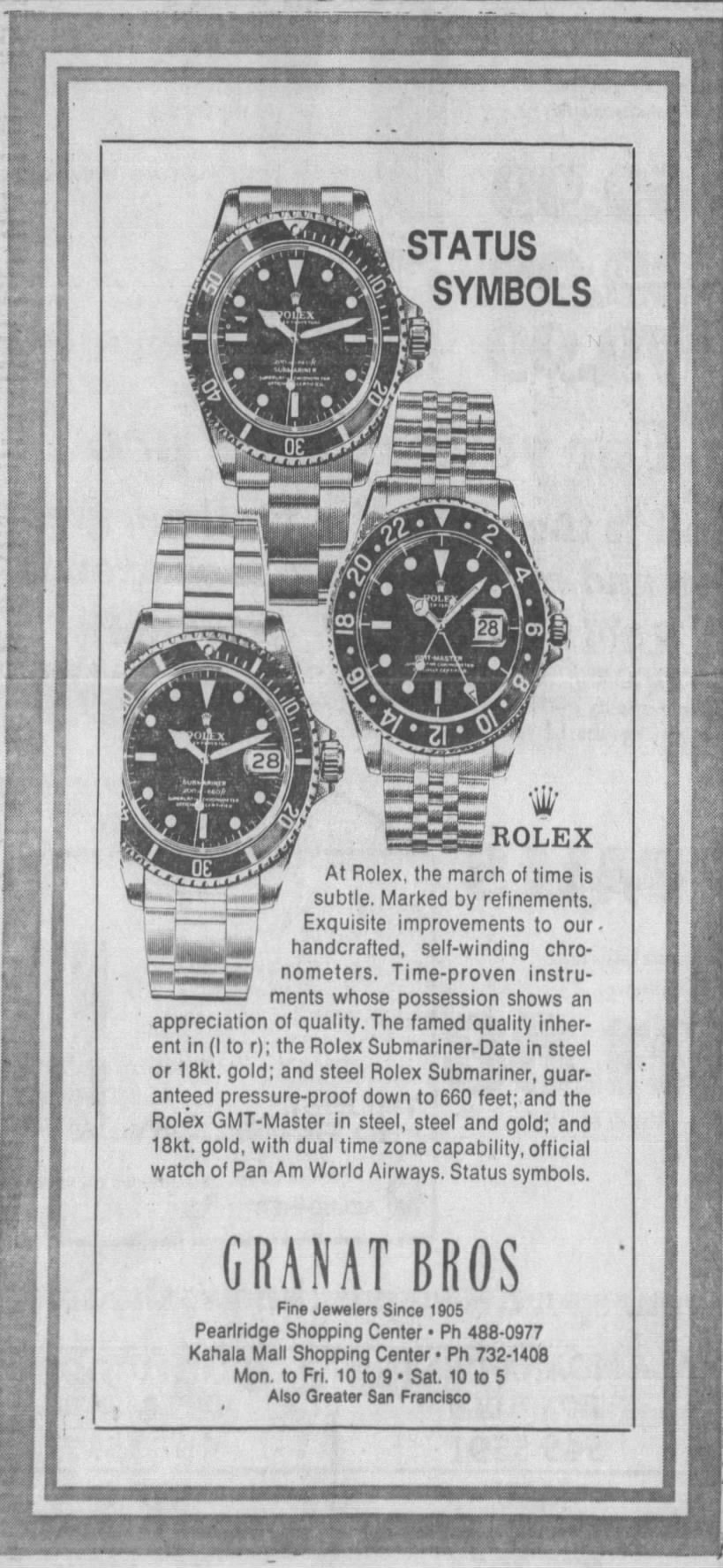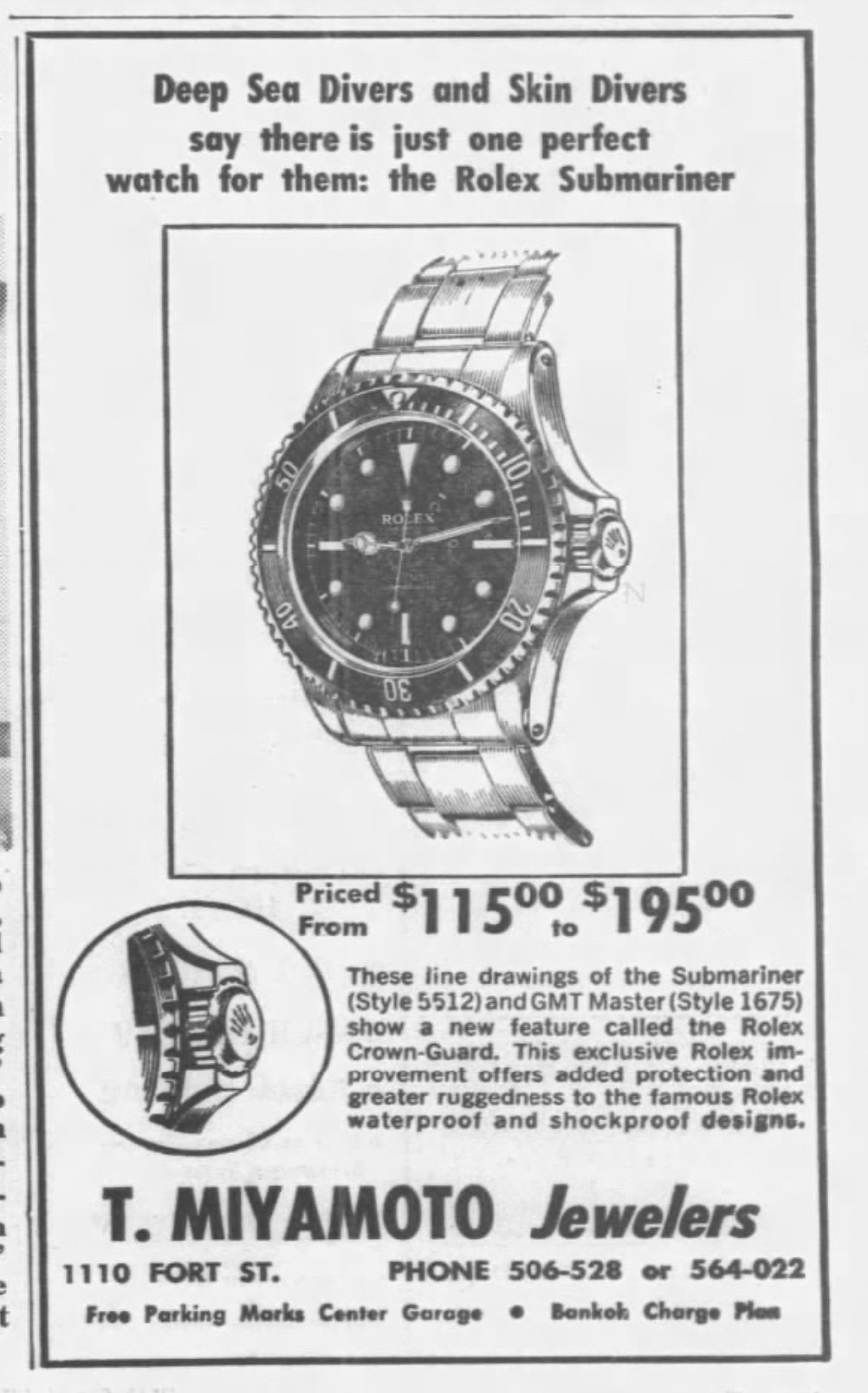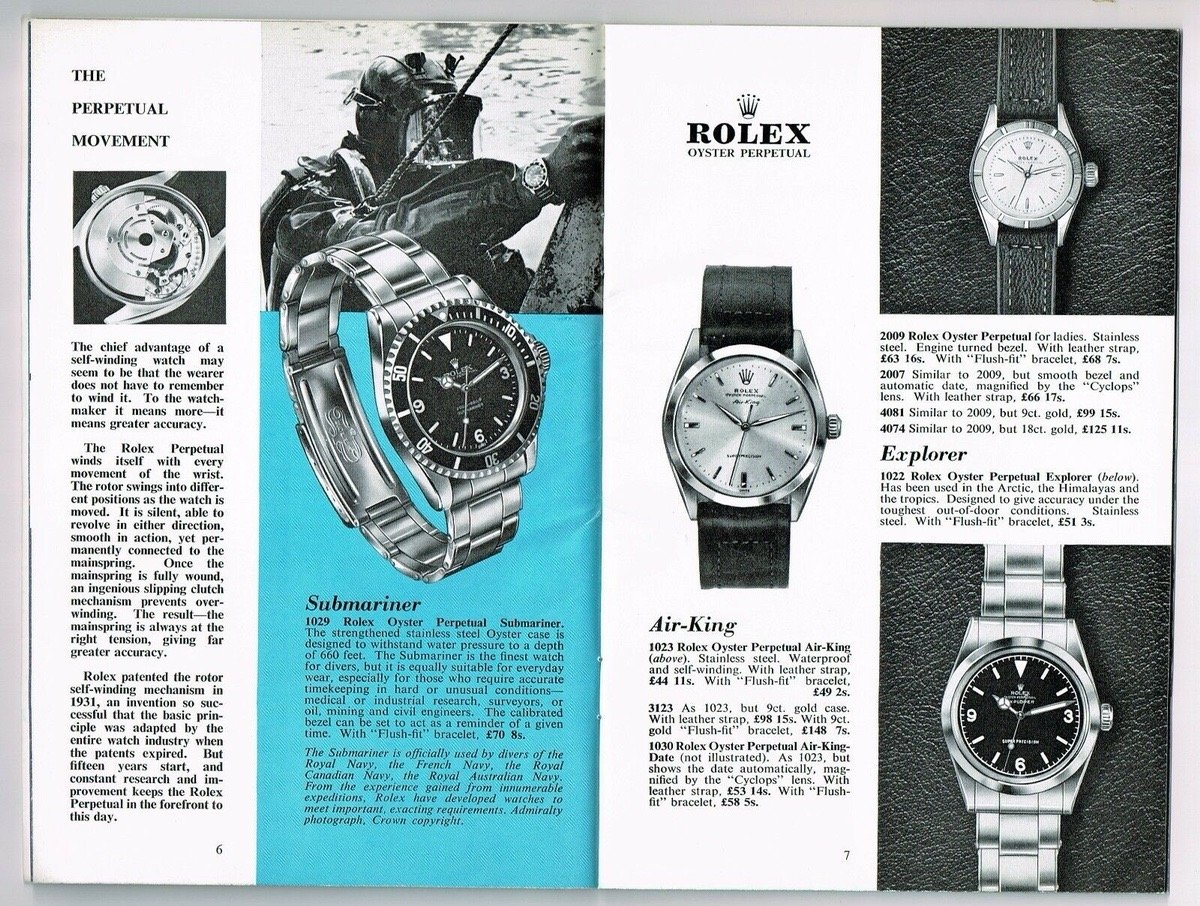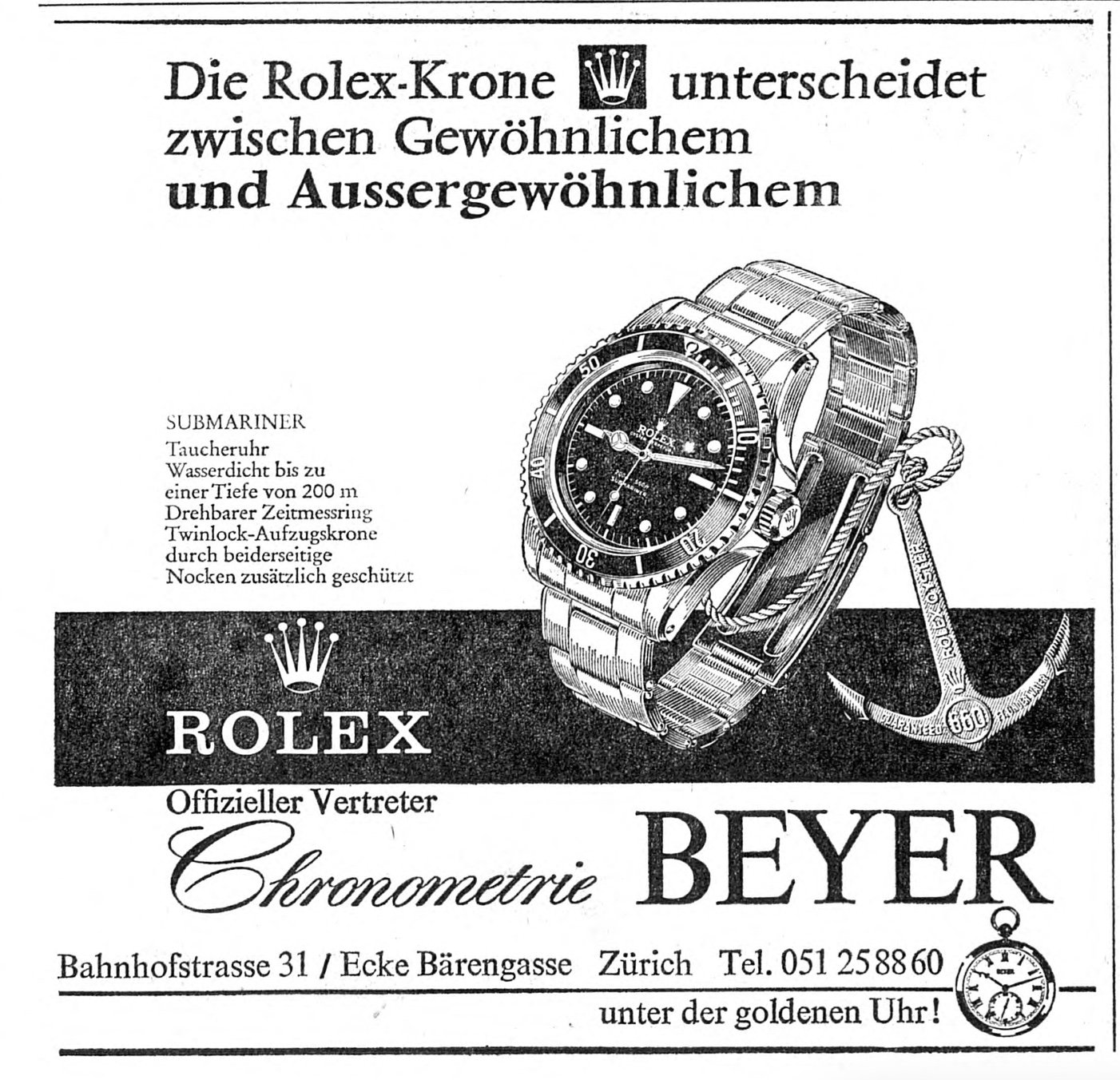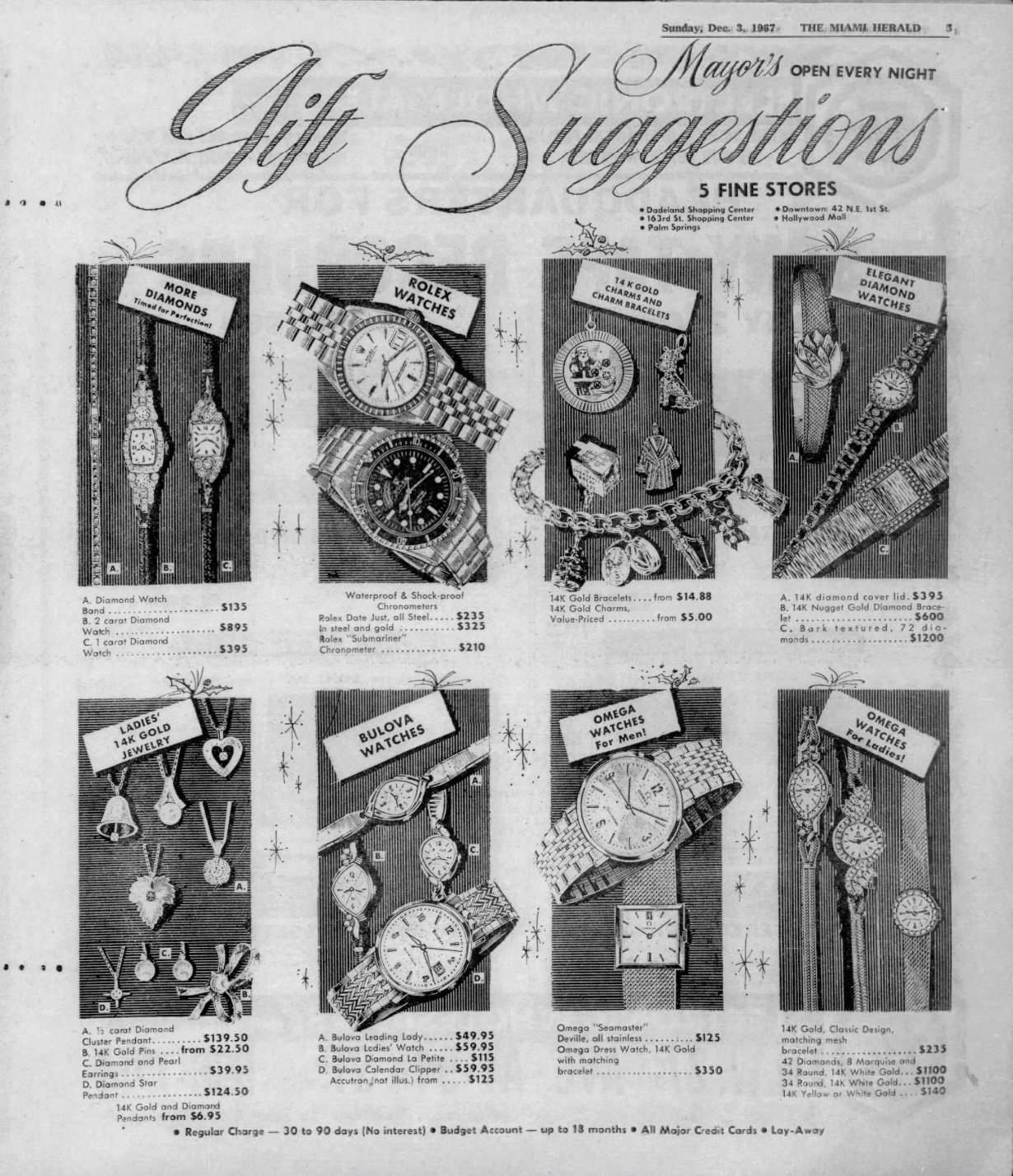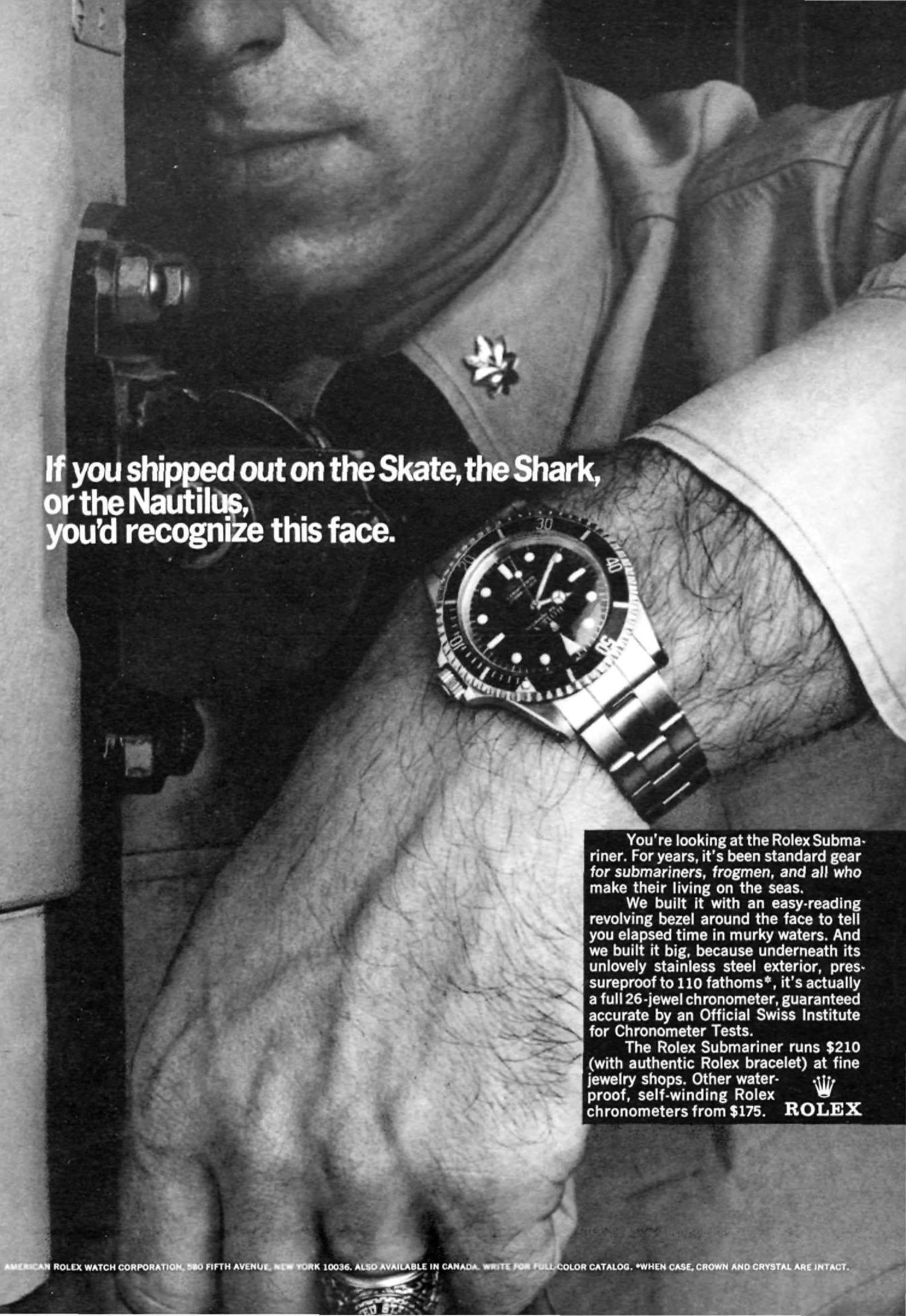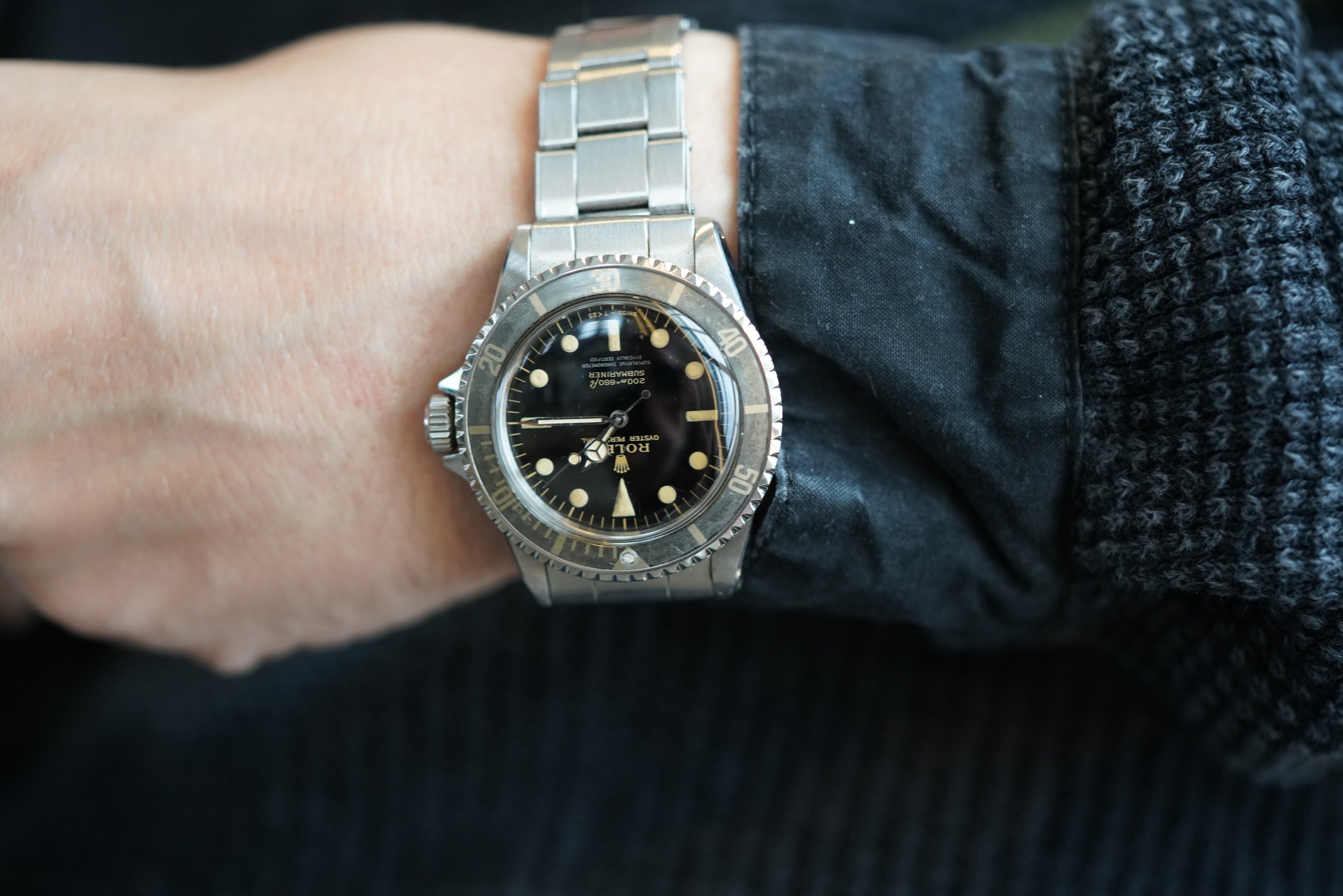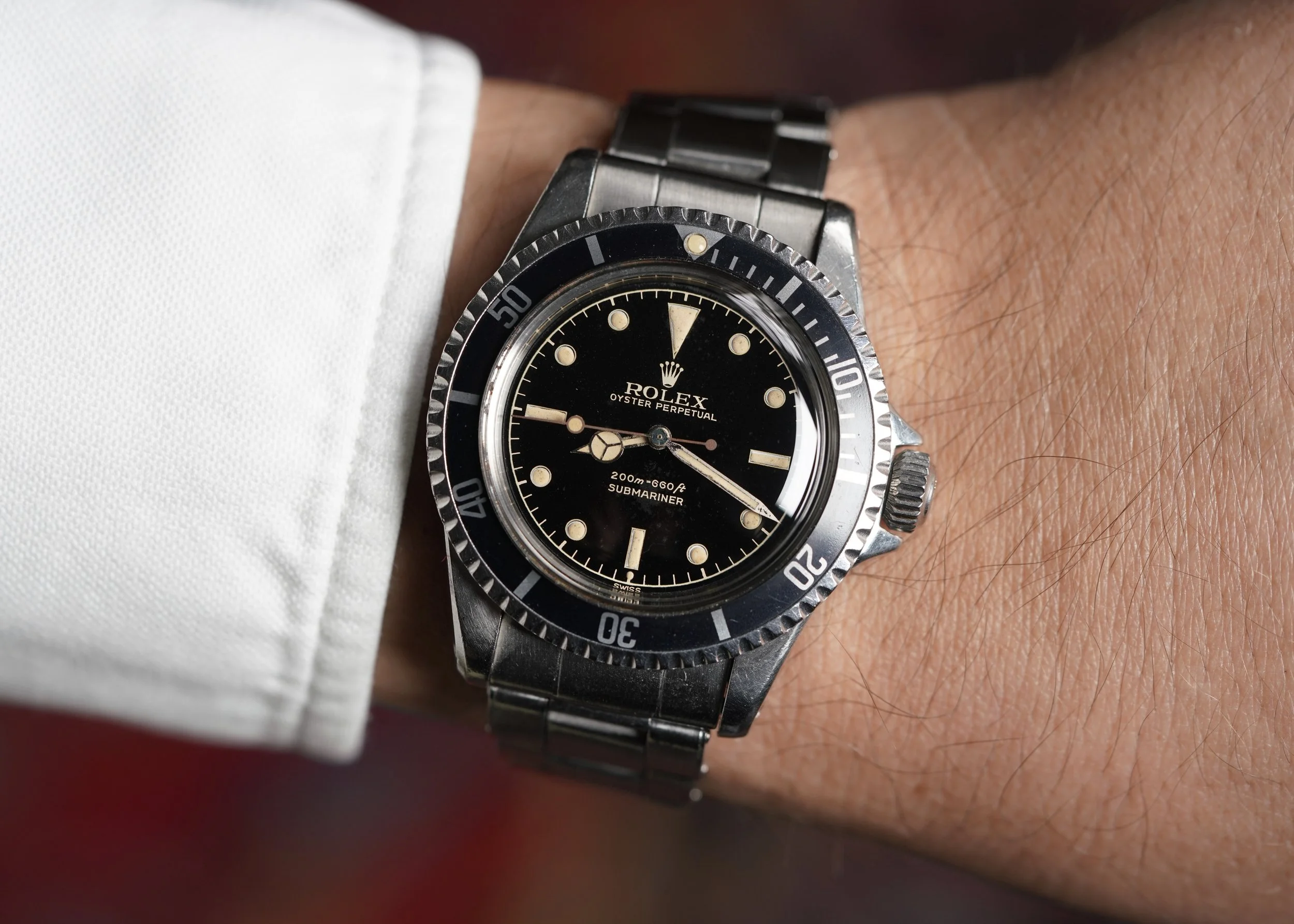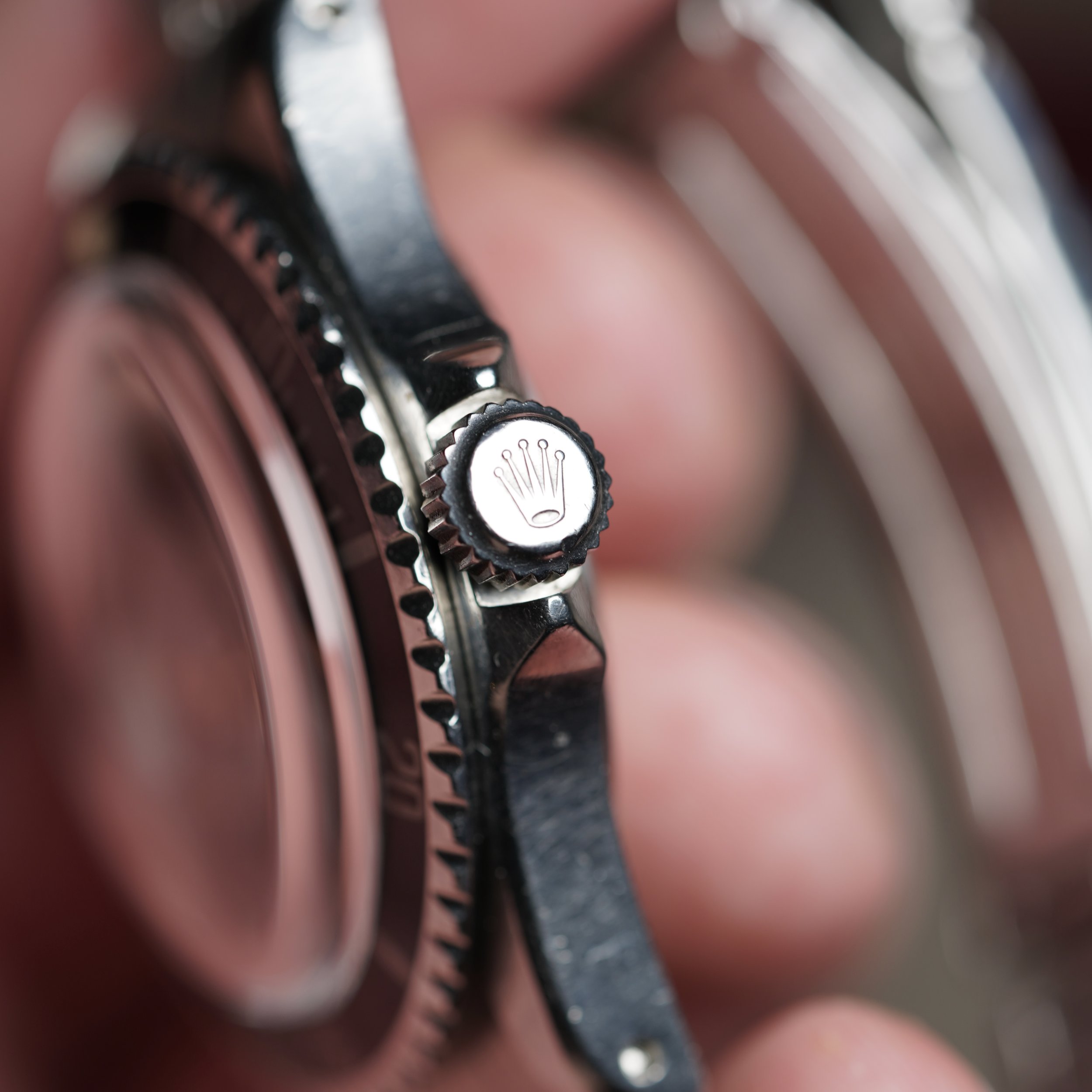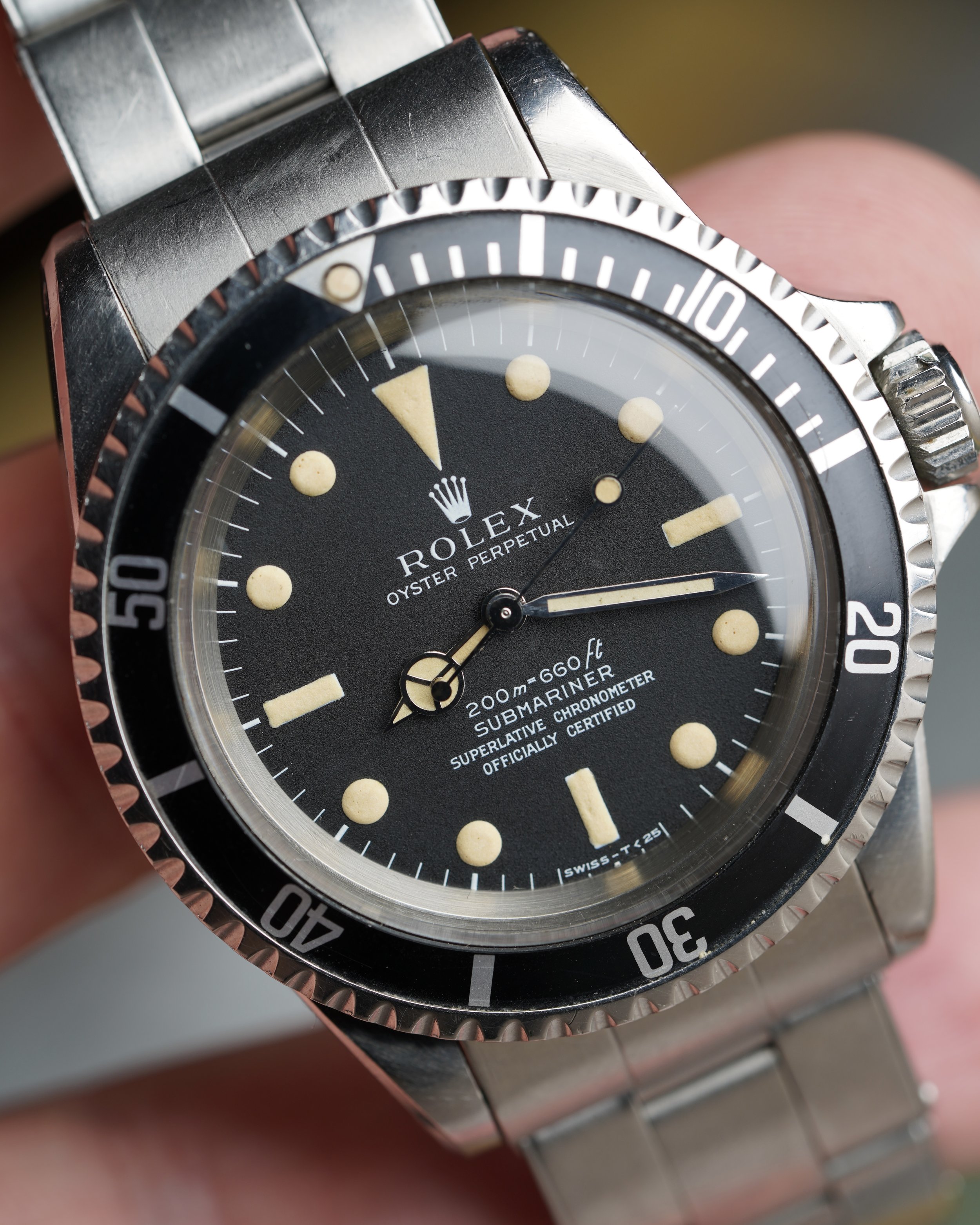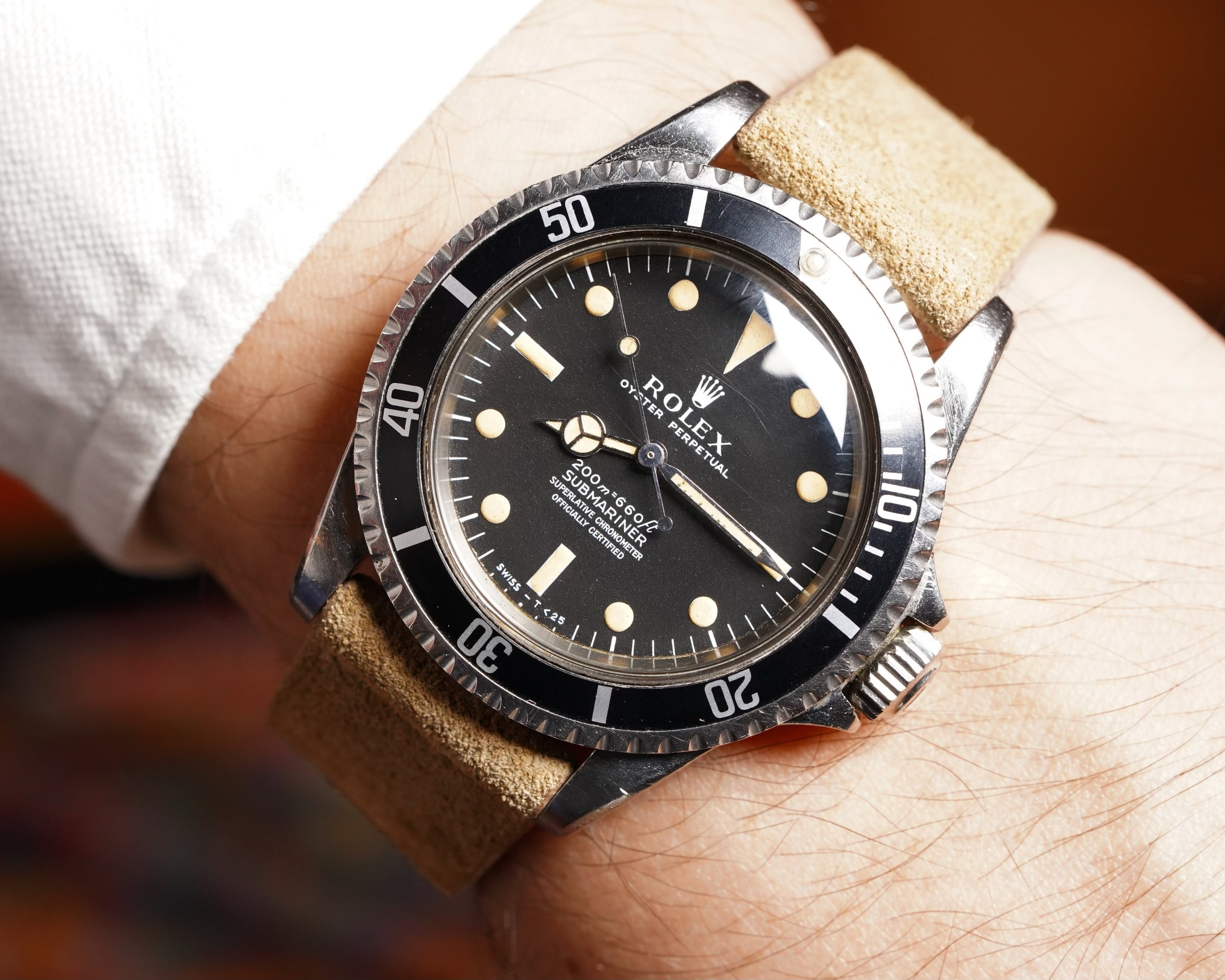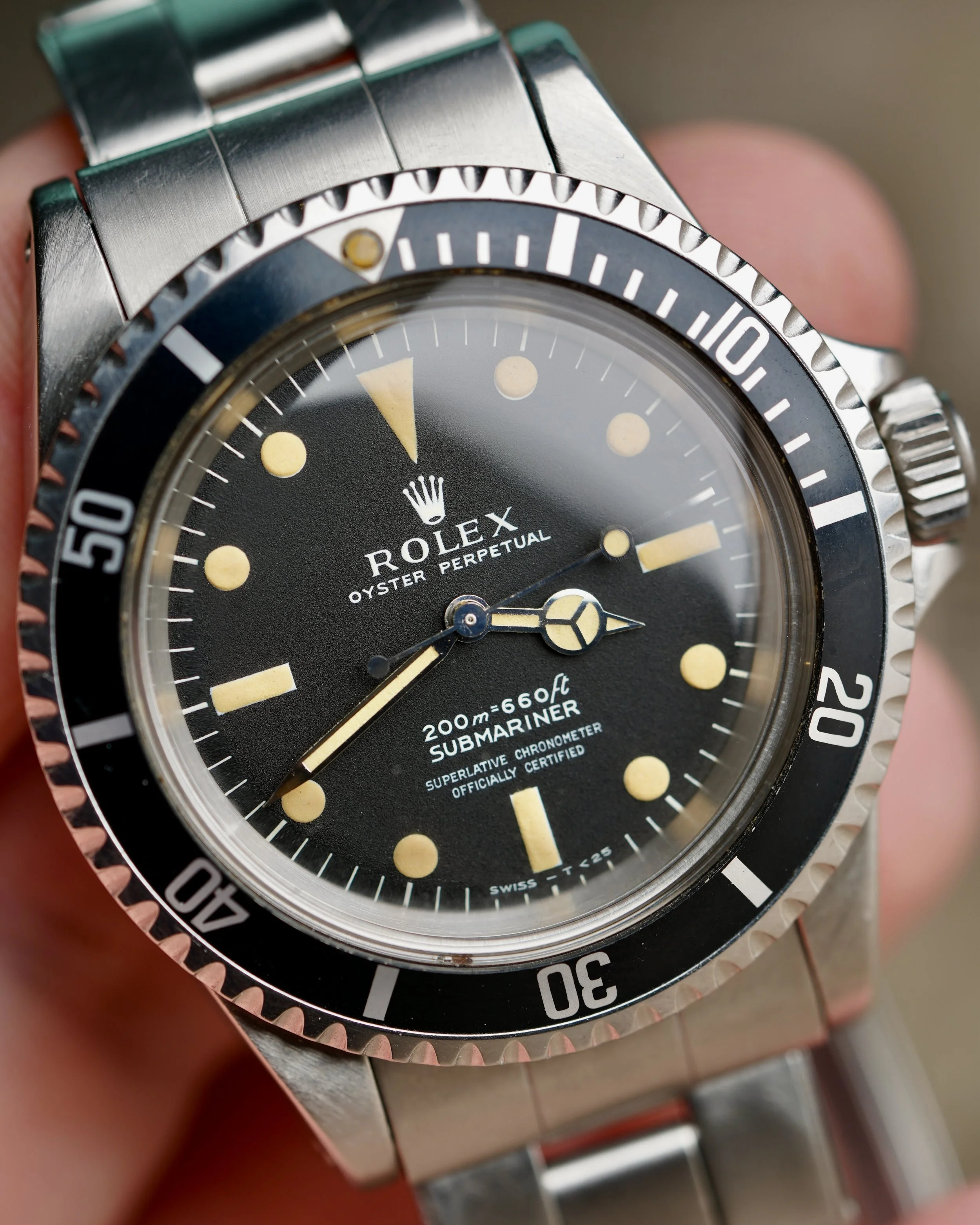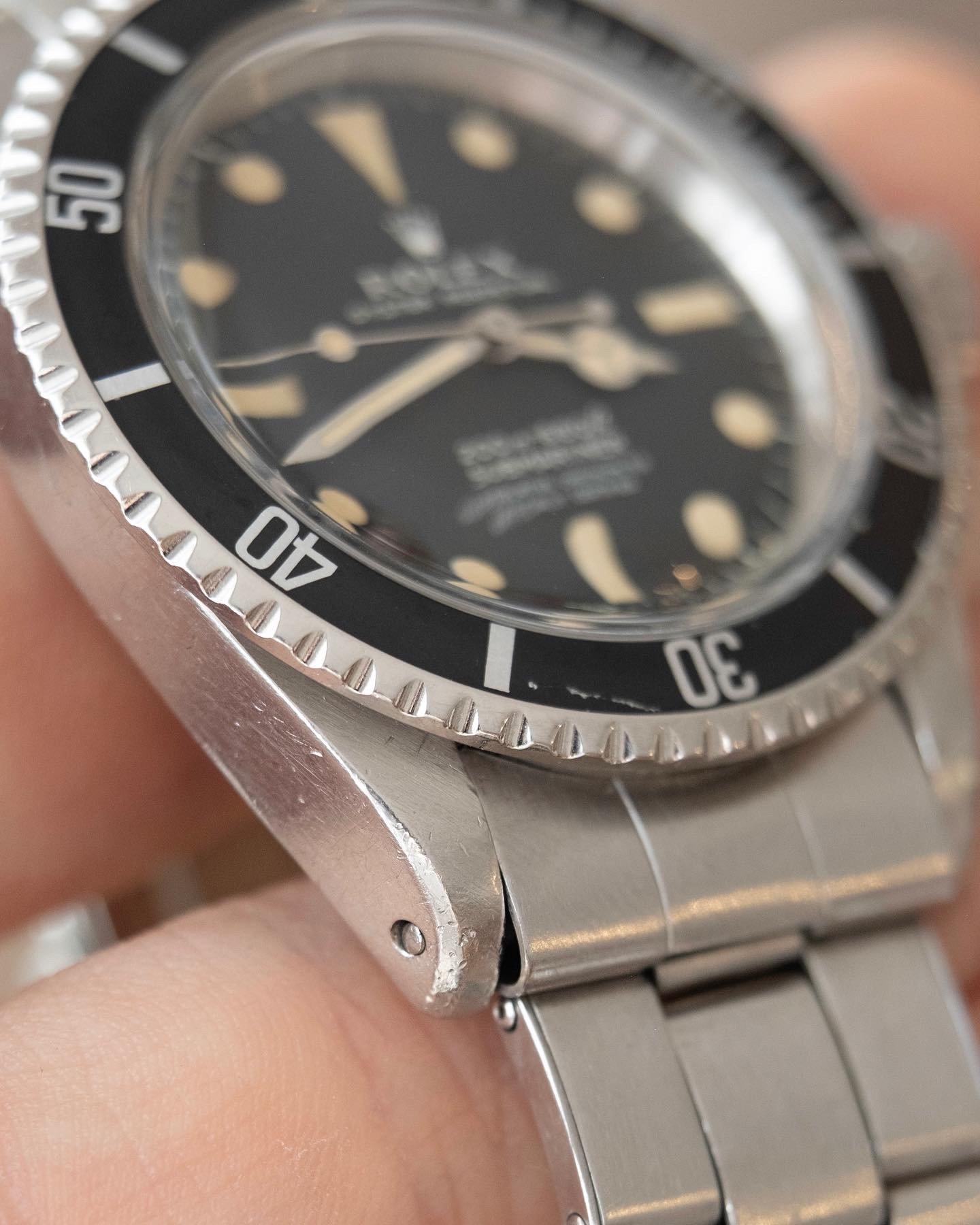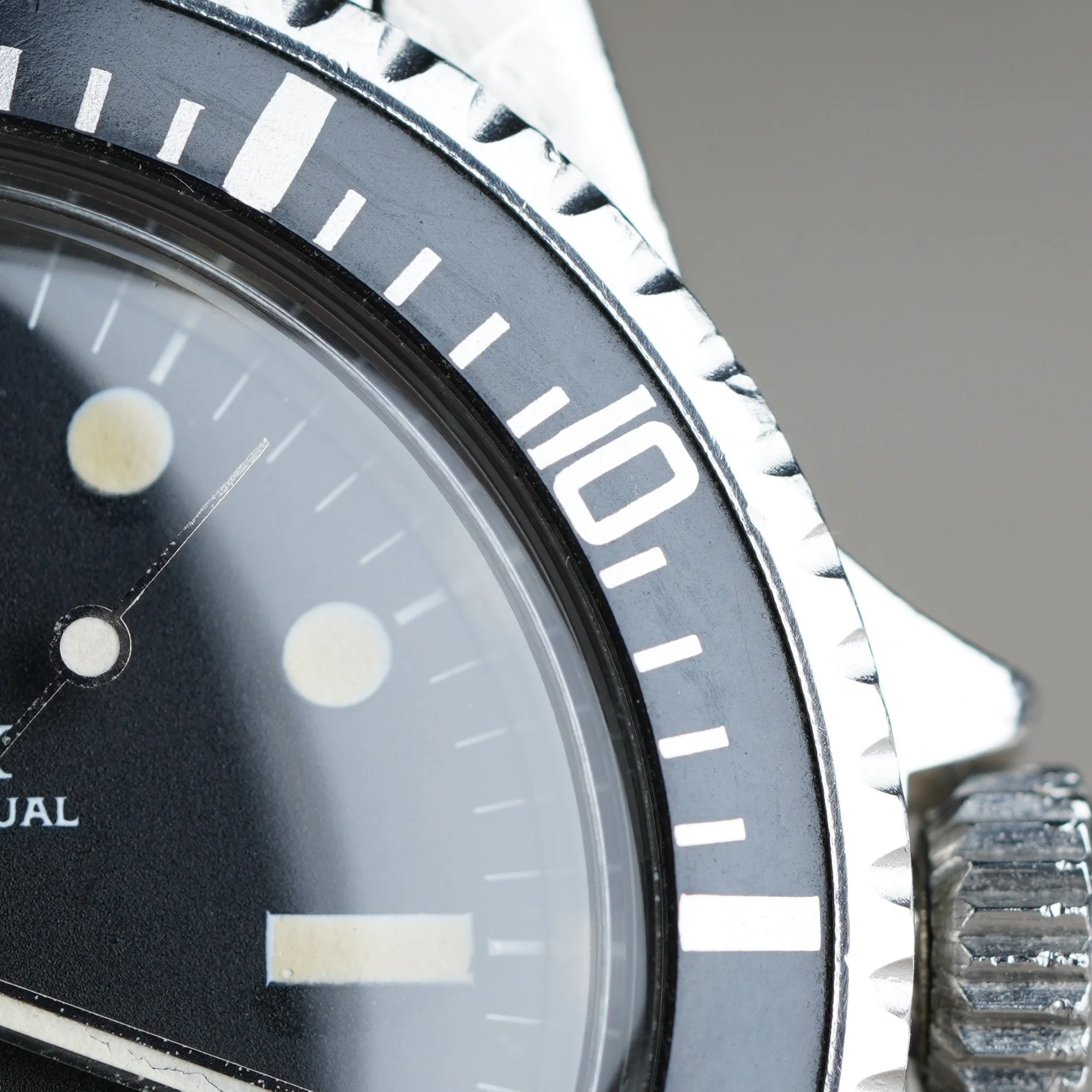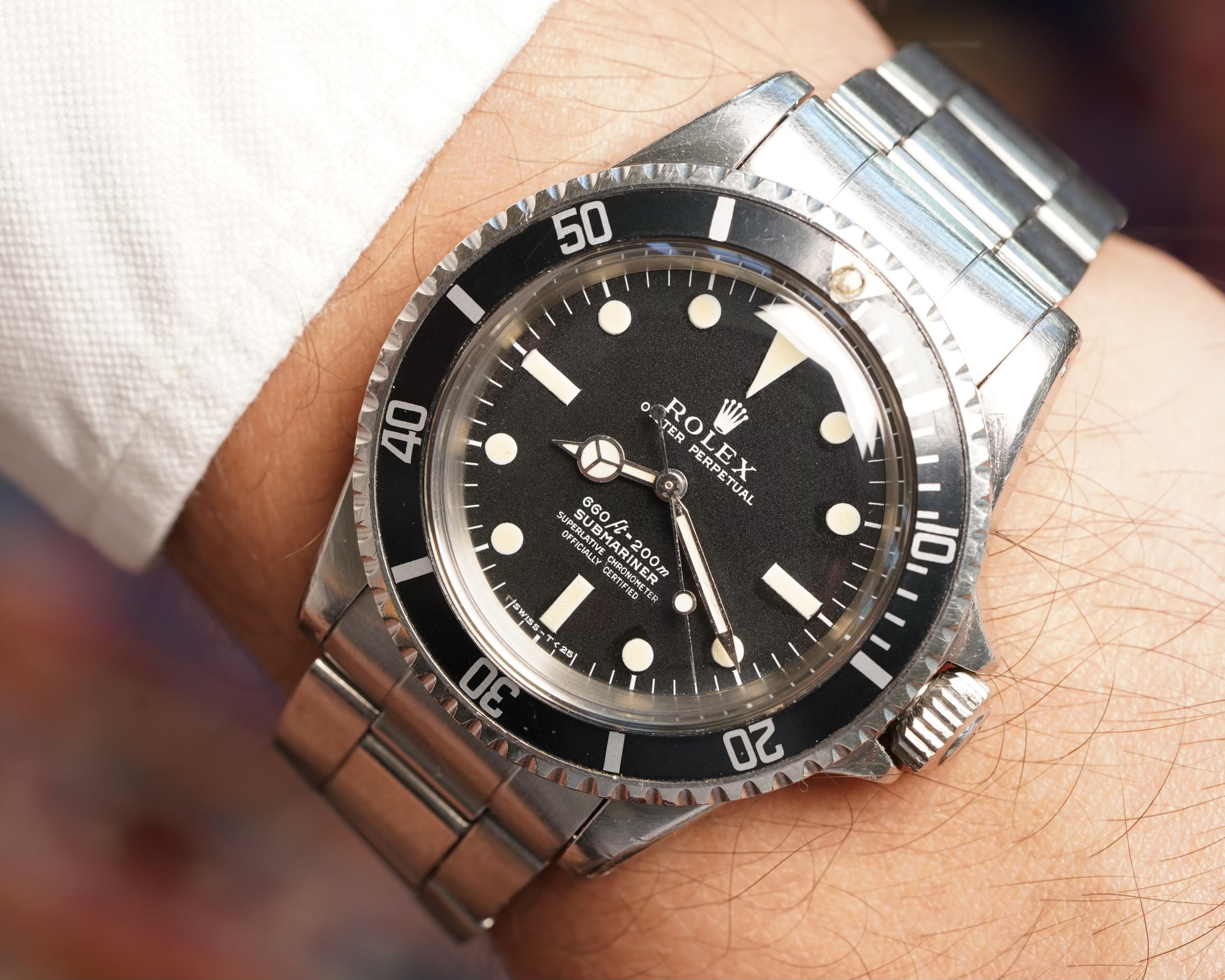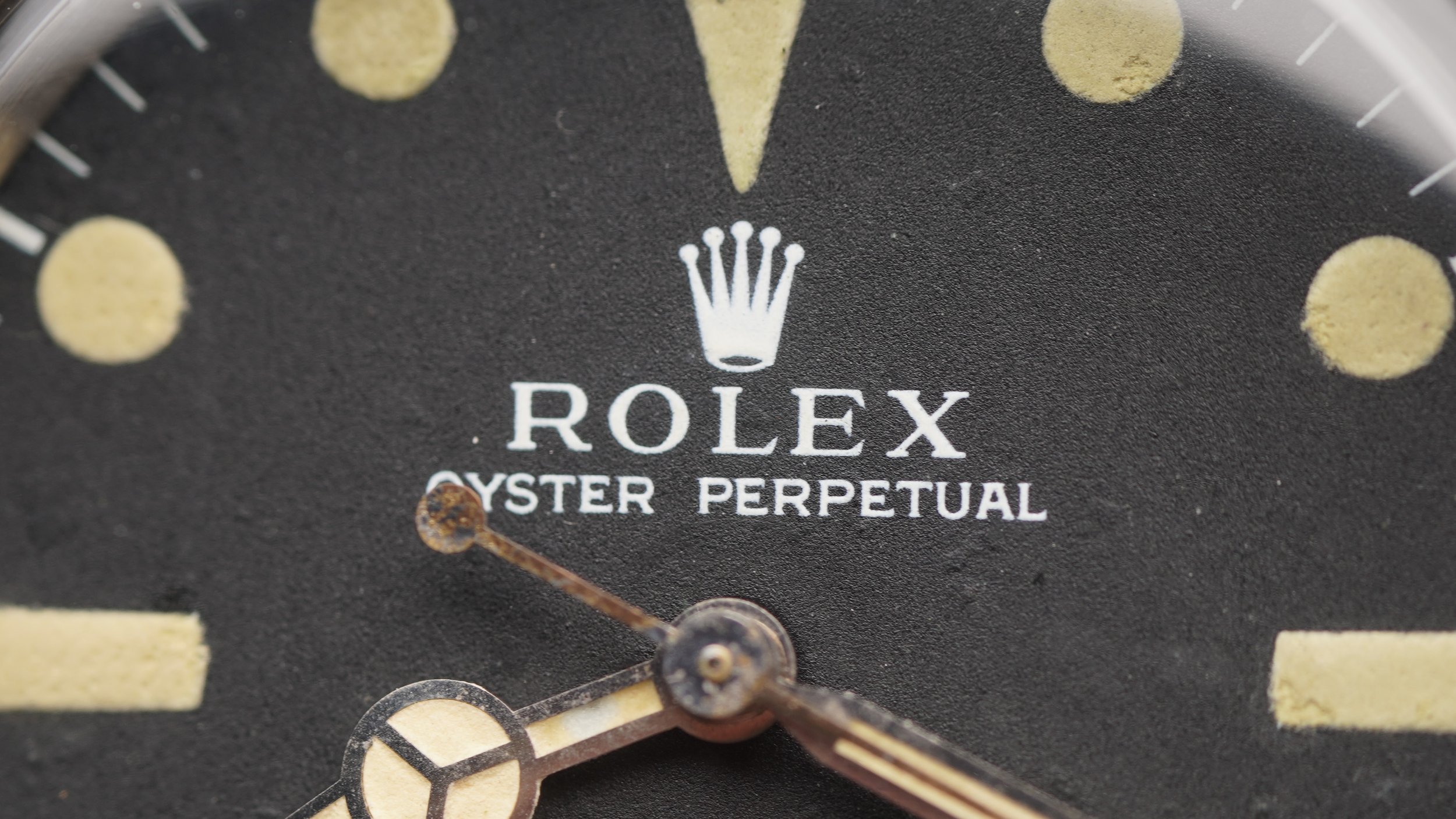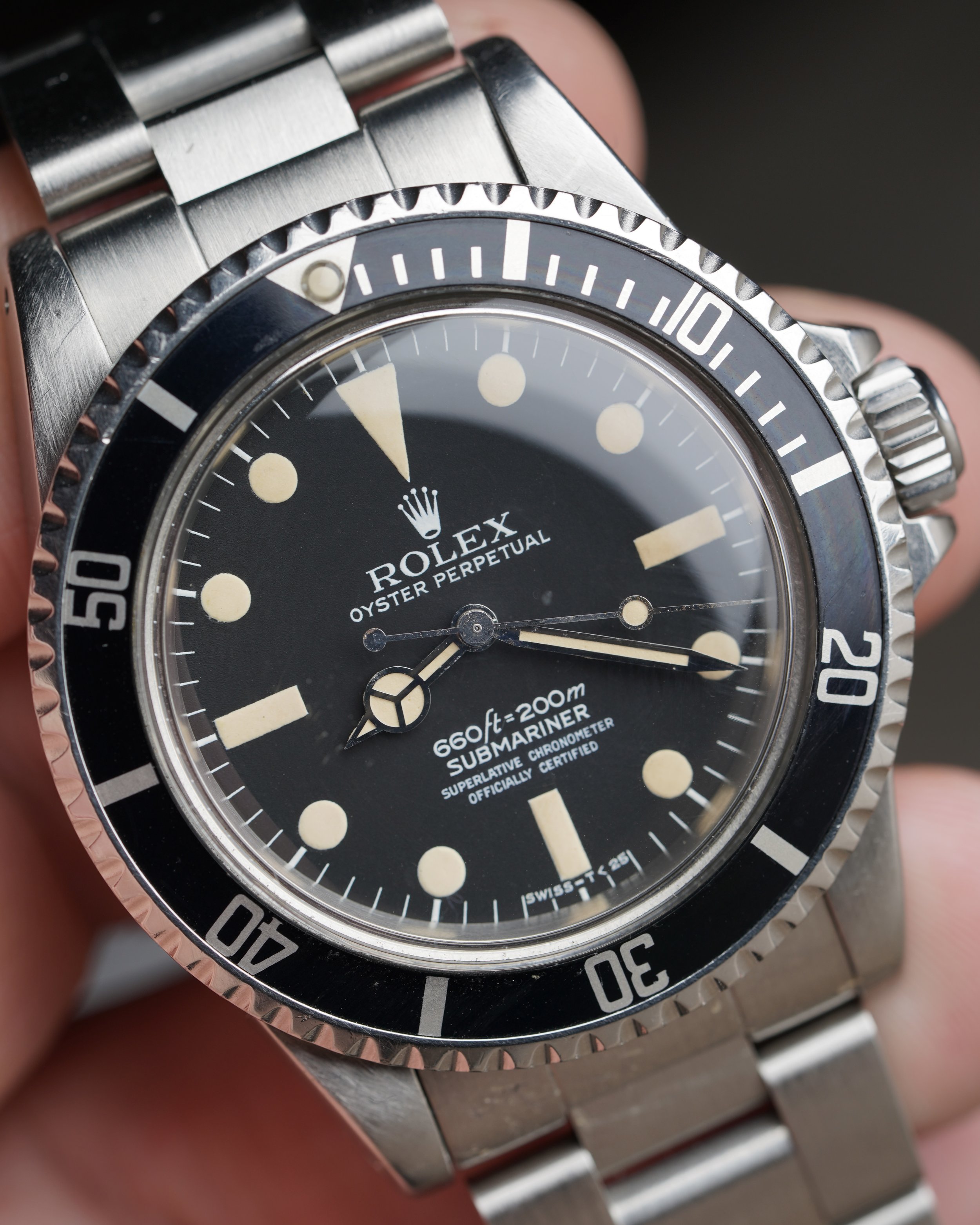Collector's Guide: What To Know About The Rolex Submariner Reference 5512
By Charlie Dunne
If you were to tell me five years ago that my favorite watch to wear would be a vintage Rolex Submariner I would have laughed! “That is way too obvious of a watch!” would have likely been my response. Yet from late 2023 to now in 2024, I fell in love with the simple, no-date Submariner. Eric Wind and I have spent countless hours regaling others on the joys of owning and wearing vintage Rolex watches. There is no other product like them on the planet, and rather than owning something unique or rare, I find this somewhat obvious watch to be the most compelling on the wrist for daily use. Rolex’s quality control and continuous improvements have resulted in the simple fact that if taken care of properly, these watches will last a lifetime and beyond for many future generations. The faithful (and unrivaled) production of hermetically-sealed, chronometer-grade timepieces over the decades has resulted in one of the most recognized and appreciated products on the planet. There is one poignant quote from a 1965 Rolex advertisement that rings home:
“The value of the watch springs from a long history of outstanding achievements. And from its undoubted technical superiority. Before you agree to pay the premium which a limited-production watch demands, you should know about these things.”
“The crown is on the face of every Rolex. It is small and you have to look for it. But before you see it you will have noticed that there is something special about this watch. It compels a second look: it is familiar. Possibly it is familiar because you have seen it so frequently in pictures of famous people. Most fine watches are too similar to identify, but to spot a Rolex is very easy. No other watch in the world asserts its personality with such substantial character. It has the uncompromising shape of integrity. It looks rugged, and it is. Yet no other watch bestows upon its wearer such a singular mark of selectivity and refinement. A Rolex sets you apart. Wear one and you invite the comment, "I see you wear a Rolex." Is this expression of your taste and individuality good enough reason for buying and maybe even waiting for) a Rolex? Perhaps. But the value of the watch springs from a long history of outstanding achievements. And from its undoubted technical superiority. Before you agree to pay the premium which a limited-production watch demands, you should know about these things.”
Rolex Headquarters Circa 1968
The Rolex booths segmented into Oyster, Perpetual and Chronometer sections at the 1946 Basel Fair. Source: Eric Wind’s 2015 Hodinkee article ‘Historical Perspectives A Look At Baselworld 1946”
When it comes to the category of dive watches, the Rolex Submariner is widely regarded as the most iconic watch. While Rolex Oyster models came before the Submariner - and the subsequent Sea-Dweller surpassed the standards/expectations of the model - it is the Submariner family which set the groundwork for most people when asked about the world’s prominent dive watch. The Submariner is undoubtedly the model that solidified the Oyster’s identity with consumers, and in turn was a major factor in the brand’s success. Certain watches like those from Panerai (Luminor and Radiomir), Jaeger-Lecoultre (Polaris), Enicar Sherpa (Ultradive), Vulcain (Cricket Nautical), and Blancpain (Fifty Fathoms, Aqua-Lung, and Tornek-Rayville) are highly admired. Yet, the Submariner has a mass appeal as the dive watch of choice. One important and differentiating factor as to why vintage-sports Rolex watches are so collectible - beyond the wide recognition of the brand - is that they are one of the few vintage watch models that can still be made water resistant.
When you look at the 1950s, it is clear that Rolex was heavily invested in the development and marketing of the Submariner family with eight different references introduced (6204, 6205, 6200, 6536, 6538, 5510, 5508, and the 5512) from 1953-1959 - more models than years! Comparatively, the 5512/5513 case references would remain in continuous production over three decades. Sadly, Hans Wilsdorf’s passing in 1960 would prevent him from seeing the legacy of what would become two of the company’s most prolific models (the reference 5512 and reference 1675).
These watches are significant in that the reference 5512 would not only be the first Submariner reference to institute crown guards (or “shoulders” as Rolex initially called them), but it is the first Rolex watch to have crown guards. This case evolution helped protect the crown and stem against harmful impacts and proved to be quite influential for Rolex and other companies in the future. It could be surmised that Rolex influenced OMEGA to transition to crown guards and the asymmetrical case for the Speedmaster Professional starting with the reference 105.012 in 1963. The dimensions of the Submariner reference 5512 (and reference 5513) measure 40mm in diameter (42.5mm including crown) and 47mm lug-to-lug, It is approximately 14mm in thickness/height. These watches wear extremely well, whether you have a large or small wrist.
While the GMT-Master reference 1675 is a highly collectible sports watch with vibrant and beautiful bezel inserts, the Rolex Submariner reference 5512/5513 is a monochromatic watch with each bezel insert beginning its life in black. As an American hero and retired Navy Seal (and passionate watch collector) told me, “The GMT-Master is a flashy watch while the Submariner is optimal for those who need to be a bit stealthy. We wore Subs.” The less loud and universal look is perhaps part of the reason many collectors gravitate to the watch as a conservative choice for everyday use.
And for decades, the Submariner has been the watch purchased by young guys on Wall Street or in the world of hedge funds in Connecticut spending their first bonus check. Perhaps this has been part of the reason there has been less interest in Submariners in recent years - the same way people don’t choose to wear fleece vests by Patagonia unless they are “hedgies” as Eric’s Oxford MBA classmates would call them.
5512 vs. 5513
Left: A gilt dial reference 5513. Right: A matte dial reference 5512
(Note: Both the calibre 1560 and 1570 were used respectively in the Explorer reference 1016).
At first glance, the Submariner reference 5512 and reference 5513 appear identical. This is because these two references are siblings in the Rolex sports catalog. The reference 5512 was introduced in 1959 and was the debut Submariner with crown guards. It would remain in production for two decades until around 1980. The Submariner reference 5513 was not necessarily the successor to the 5512, but instead sold alongside the model. The reference 5513 was introduced in circa 1962 as the more economical alternative to the 5512. This is due to the fact the 5512 was a chronometer certified model, while the 5513 featured the same attributes with non-chronometer movements.
From circa 1959 to 1962, 5512s feature two-line dials and were almost always not certified as chronometers. There are only a few early 5512s with chronometer text known and the earliest ones only state “Officially Certified Chronometer” or OCC below SUBMARINER. Funnily enough, there was at least one dealer who tried to coax a watchmaker into modifying the dial feet location on the back of the dial of one of these to put it in an earlier “Big Crown” Submariner. Post 1962, the 5512 was updated to the chronometer-grade calibre 1560 which was used in 5512s until circa 1965 and they featured “Superlative Chronometer Officially Certified” or “SCOC” text. Starting circa 1965, the chronometer-grade calibre 1570 began to be used in the 5512.
Where it gets a little confusing is that the earliest 5512 models were not chronometers and were powered by the calibre 1530s - so it’s not so simple to say 5512s are chronometers and 5513s are not, but that is the case for all 5512s after 1962 when the 5512 was essentially upgraded by Rolex to be the chronometer Submariner.
Reference 5512: 1959-1980
Calibre 1530 (1959-1962)
Calibre 1560 (Circa 1962-1965)
Calibre 1570 (Circa 1965-1979)
Reference 5513: 1962-1989
Calibre 1530, Calibre 1520
When approaching vintage Submariners and deciding whether to choose the reference 5512 or reference 5513, it is not necessarily black and white. Simply speaking, condition is paramount so a great 5513 would always beat a poor condition 5512 of the same iteration. But also, some people prefer the simplicity of only two lines above 6:00 (the depth rating and Submariner). On the other hand, the superior movement characteristics and chronometer testing made the 5512 significantly more expensive than a 5513 (as we will see below) and perhaps more in line with the Rolex ethos of the time. As one collector stated, it is like buying a vintage Porsche 912 versus a 911S from the 1960s - there is a difference in engine and performance, but both are exceptional cars. Like the 5513s and 5512s, there were more 912 examples than 911S models made, and there is a difference in value for collectors today for those cars.
I would not outright recommend that the 5512 is the superior option to choose over the reference 5513. Yes, the 5512 is far less common (we will explore that below). Perhaps one could argue paying a premium for rarity is justified. From my perspective, it would come down to the overall condition and attributes (dial, lume, bezel insert, and bracelet) when deciding between the 5512 and 5513.
To appreciate the Submariner reference 5512, as well as better understand what makes it special beyond the simple two lines of text, it is worth highlighting the Rolex chronometer and why it is an important feature within Rolex watches.
By 1960, Rolex had become a force in the watch industry by producing more chronometer-grade movements than all manufacturers in Switzerland combined. While the Rolex standard was to produce chronometer-grade watches, many manufacturers were cutting corners - even going as far as to misrepresent their movements as chronometers by using alternative words/phrases. As a company, Rolex was not impressed with these parties and would frequently emphasize their timepieces were submitted to Swiss governmental entities for certification and would raise their standards even higher stating”no Rolex will be worthy of the title of "Chronometer" and bear a Red Seal unless it has obtained the very highest distinction for precision and quality from a Swiss Institute for Chronometer Tests: "Especially Good Results.””
Speaking with Eric Wind, we discussed the potential production differences between 5512s vs 5513s. We had no idea what the ratio would be, yet we knew it had to be somewhere in the ballpark of 10x reference 5513s.
Interestingly, Rolex would go on to cite production numbers for their Submariners within their 2024 Submariner publication (an act I would have never anticipated).
According to Rolex, the Submariner reference 5512’s production consisted of 17,338 examples. The Submariner reference 5513’s production consisted of a much larger amount, 151,449 examples! Both Eric and I were quite astonished at the number of 5512 Submariners produced being a mere 17,338, as we assumed it was much larger - in the tens of thousands. In simplified terms, there was only just about one 5512 produced for every ten 5513s produced (or 11.4% specifically).
We always knew they were much rarer than 5513s, but it was nice to get a confirmation on this in the new book about the Rolex Submariner by Nicholas Foulkes that was commissioned with the blessing of Rolex.
What Is A Chronometer?
The chronometer is in many ways synonymous with Rolex. This is mostly due to the fact that in the late 1950s Rolex became heavily invested in qualifying the majority of their product catalog as chronometer-grade movements. Traditionally, a chronometer is defined as a timepiece that has qualified through fifteen days and nights of testing within a variation of -4 to +6 seconds per day. They were tested in up to five different positions and three different temperatures. For Rolex (and most Swiss watch brands) these watches are certified by the government of Switzerland. Rolex remains especially proud to have been the first wristwatch to be certified as a chronometer and even highlighted this in a video the company produced explaining their history and the life of Hans Wilsdorf, which you can see here:
It was in November 1951 when the Swiss Federation of Watch Manufacturers defined the term of a chronometer to be “a precision watch regulated in different positions and various temperatures, having obtained an Official Timing Certificate”. Rolex catalog material states: “A watch earns the title of chronometer when it has been submitted to one of the Swiss Institutes for Official Timekeeping Tests and, after is days rigorous testing in five different positions and in three separate temperatures (normal, oven heat and refrigerator), has proved itself capable of the exacting standards of accuracy laid down, and has been awarded an Official Timing Certificate.”
For some Rolex chronometers, you will notice the accompanying certification papers from the Bureaux Officiels de Contrôle de la Marche des Montres. These are seen on Rolex watches until circa 1968 with the specific test results of a given watch (filled out day by day with the variation) and the papers are very cool for collectors. Most often these papers were thrown away, along with the box, by the original owner as there was no perceived value. At least one Rolex retailer had amassed over a thousand Rolex boxes and papers stuck in a back room as purchasers would say they didn’t want to take the box and papers with them when leaving the store. Nevertheless, they still represent a very cool piece of ephemera for those that appreciate the accessories and add-ons beyond wearing a nice sports watch. Be careful of fake papers - some unfilled chronometer papers have been filled out along with other materials to make watches into “full sets” worth 20-25% more than as a watch only. There have been various scandals including “Papergate” where collectors tracked watches being sold “naked” or watch only and then reappearing a month later with box and papers added. Around 1968, Rolex discontinued including the specific chronometer certificate for a given watch showing the testing date and results and went to a general paper certificate talking about chronometers and typically with a stamped serial number. Since 1973, Rolex has used Contrôle Officiel Suisse des Chronomètres (COSC) for certification.
As far as the performance of a vintage chronometer, vintage Rolex watches still perform extremely well when taken care of and serviced by excellent watchmakers - even in comparison to modern chronometers from other brands. We would not suggest constant regulation or unnecessary servicing when a vintage Submariner is performing within less than 1 minute per day.
Bureaux Officiels de Contrôle de la Marche des Montres Chronometer certification papers (for a Rolex Datejust).
Der Bund, Volume 110, Number 162, 18 April 1959
“Last year, Rolex manufactured 64,596 examples of their world-famous men's watches. Of these, 35,256 were officially tested by the Swiss inspection authorities and received the chronometer certificate.
In 1958, no less than 54% of all men's watches manufactured by Rolex were given the highly coveted “official” designation “certified chronometer” award.
They all passed the official inspection... in five layers, at various temperatures, continuously for 14 days and nights! The percentage of watches that have received the “Chronometer” designation is significantly higher at Rolex than at any other watch manufacturer. This large number of official certificates obtained by Rolex confirms its long-standing policy of producing only watches of the highest quality.”
“Three companies in Bienne alone produce 9 out of 10 chronometers, all the other Swiss manufacturers together obtaining only 10.46 percent of the certificates. These factories:
Omega, 189566 pieces; Rolex, 139569 pieces; Mido, 21045 pieces. In the “electronic chronometers” category, 99 percent of electronic chronometers come from the Biel watchmaking industry, due to the fact that only one factory in Biel — Mido — produces more than 9 out of 10 electronic chronometers.”
“…Rolex S.A. continued to produce 217,000 chronometers, of course all with the legal certificate and award. This result - the largest number of chronometers manufactured by a company in Switzerland in 1972…” Image credit: Bieler Tagblatt, Number 104, 5 May 1973
Interestingly, Rolex sent two important chronometers to Dwight D. Eisenhower and Sir Winston Churchill that marked significant chronometer production. Churchill received the 100,000th Rolex chronometer (with his coat of arms in enamel on the case back) and Eisenhower received the 150,000th Rolex chronometer (which has since had its dial terribly reprinted).
With the additional efforts undergone by Rolex to have these movements transported to undergo testing then certification, the chronometer-grade Submariner models would be considerably more expensive (approximately 25% higher) than the non-chronometer Submariner reference 5513. The qualification certainly resonated and was a symbol of pride to many customers, but the majority of clientele would need to be educated on why this additional two lines of text were so important. Rolex would go to great lengths in their marketing over the following decades to emphasize the importance of superlative chronometers. These numbers are highlighted by the manufacturer in catalogs as well as cited in Swiss newspapers:
From 1927 to 1951, Rolex produced 500,000 chronometers.
In 1958, Rolex manufactured 64,596 examples of their world-famous men's watches. Of these, 35,256 were officially tested by the Swiss inspection authorities and received the chronometer.
By 1965, Rolex had been awarded more than 700,000 Official Timing Certificates for wrist-chronometers — or nearly half of the entire Swiss chronometer production during the last 50 years.
By 1971 Rolex had produced 1.5 million chronometer wristwatches.
“A watch earns the title of chronometer when it has been submitted to one of the Swiss Institutes for Official Timekeeping Tests and, after 15 days rigorous testing in five different positions and in three separate temperatures (normal, oven heat and refrigerator), has proved itself capable of the exacting standards of accuracy laid down, and has been awarded an Official Timing Certificate,
The Rolex Superlative Chronometer has no regulator. Normal chronometers, like most watches of non-chronometer grade, contain a regulator, which can be moved to counteract any slight tendency to run fast or slow. This is a very simple method of regulation, but it has a disadvantage in that its very existence impairs the constancy of the accuracy obtained. A watch movement which has no regulator can maintain its precision very much longer. But, obviously, only a watch whose initial accuracy is quite exceptional can afford to be without a regulator.
Having no regulator, the standard of accuracy of a Superlative Chronometer must be exceptionally high. The absence of a regulator ensures that this standard of accuracy, once attained, is maintained much longer and with far greater reliability.”
HOW TO REGULATE THIS ROLEX SUPERLATIVE CHRONOMETER
“Thanks to the Rolex-invented and patented MICRO-STELLA system, with which this Superlative Chronometer is equipped, the movement may be regulated accurately and speedily without taking it out of the case or lifting the balance wheel. For example, if the watch is losing six seconds per day: Unscrew the back of the case and place the watch on a support. Stop the balance wheel and turn it so that a MICRO-STELLA screw falls opposite the open end of the jewelled plate (the open end corresponds with the reamed-out part of the case rim). Maintain the balance wheel in this position by means of a pair of tweezers. The balance wheel should be held by the outer rim at a spot near the cock so that the tweezers are supported by the cock and the balance wheel sinking.
With the pendulum pointer of the MICRO-STELLA PRECISION REGULATOR facing you, engage the ring spanner at the tip of the Regulator on the MICRO-STELLA regulating screw.
Take note of the division indicated by the pointer and tighten the screw until the pointer has covered six divisions (one division for each second).”
“1959: By this date Rolex produced over 400,000 Official Timing Certificates for wrist-chronometers - more than half of the entire Swiss chronometer production.”
What is a chronometer? What does the audience understand by the word chronometer? It means a particularly accurate [watch].
Until 1951, every manufacturer could sell their watches under the name “chronometer”, although a real chronometer required four times more man-hours than an ordinary watch.
In 1951, the “Fédération Horlogere” decreed that no watch could bear the title “Chronometer” unless it had acquired the official chronometer certificate.
However, Rolex never and at no time released a single watch into the world as a chronometer that had not passed the extremely difficult tests at an observatory or at one of the seven “Swiss institutes for chronometer testing”.
Obtaining this chronometer certification requires great technical skill, as the watch must pass a series of strict checks over a full 15 days and nights at three different temperatures and in five different positions.
Does a clock move more than 12 seconds ahead or more than the astronomically precise time every day?
3 seconds after - there are 86400 seconds in a day! - so she is denied the chronometer certificate.
If the watch is not more than 10 seconds ahead or more than 1 second behind, it receives the chronometer certificate with the rating “particularly good results”.
Since 1951, less than 0.25% of the watches manufactured in Switzerland have been received - around 40 million pieces a year! - the official chronometer certificate.
As the document shown above shows you, Rolex has received no fewer than 500,000 chronometer certificates since 1927: half of all wrist chronometers manufactured and officially controlled in Switzerland since 1927 come from Rolex!
Add to this the fact that Rolex achieved a number of pioneering achievements in the field of watches, and you will understand why in so many countries so many men in high and highest positions wear a Rolex!
The ROLEX seal: Until recently, those Rolex watches that had managed to obtain the official license as a chronometer bore the Rolex seal. Now Rolex is going further and is applying even stricter standards to itself.
In the future, Rolex will only designate those of its watches as chronometers and will be seen with the Roler seal, those from official tests with the grade. Particularly good results keroorgingen - the highest quality of the one watch can be obtained at all.
Der Bund, Volume 114, Number 52, 5 February 1963
Chronometer papers for a Submariner reference 5512 circa 1973 (3.33M Serial).
Right: Submariner 5512 with 1967 case production. Left: The successor Chronometer Submariner reference 1680 with “Meters First” dial with 1969 case production.
In some ways, the successor chronometer-grade Submariner to the reference 5512 was the Submariner reference 1680. The Submariner 1680 was introduced in circa 1969 and incorporated the date/calendar complication to the model. Some prefer the classic “No-Date” Submariner, even in the contemporary offerings from Rolex. Others prefer the combination of four lines and the cyclops/date (and “Red Submariner” font seen in the above example) found in the reference 1680. Both models are excellent references to own and enjoy.
Comparable Offerings of The Era
Rolex Non-Luminous Linen Datejust Reference 1601 (2.39M serial dating to circa 1970).
Rolex Zephyr Oyster Perpetual Reference 1008 (0.66M serial dating to circa 1961).
It is interesting to look at the prices of the Submariner from a historical perspective. In 1966-1968 the reference 5512 was sold in the United States for around $210 - $235, while the non-chronometer reference 5513 would be sold around $160 - $175. The Rolex Datejust would be in the $235 range, while the “Zephyr” Oyster Perpetual reference 1008 was quite the luxe model at a much more expensive $300! The comparable sports models Rolex Explorer reference 1016 was around $205-$220, and the GMT-Master reference 1675 was offered as high as $245-$275. A Daytona reference 6241 (perhaps with a “Paul Newman” dial) could be purchased new in the $210 range!
At an even higher premium were the extravagant models. A Day-Date reference 1803 on a leather strap would be $600 and it would be $1,200 on bracelet. This is fascinating context from the modern perspective where vintage Zephyrs and vintage Day-Dates can be purchased for considerably less than a vintage Submariner 5512 in great condition. It could be argued that the Submariner was a superior product from on the performance front and inferior on the status front. All the while, gold and two-tone models were the lavish offerings and marketed as such. The Submariner and GMT-Master were also marketed for the professionals, albeit not to the same level of prestige as a sophisticated Day-Date.
Rolex Explorer I Gilt Dial Reference 1016 (1.3M serial dating to circa 1966).
Early “Pointed Crown Guard” Rolex GMT-Master Reference 1675 (0.505M serial dating to circa 1960).
Rolex Wide Boy Day-Date Reference 1803 (2.38M serial dating to 1970).
1968 Rolex Price Guide.
1964 Interview with a Director at Rolex
Throughout the 1950s, the Submariner earned its reputation as most qualified dive watch being worn by legends of the field like Jacques Cousteau. Just two years after the Submariner’s introduction, the depth rating had increased from 100 meters to 200 meters. These gradual improvements to the model - mainly via the alterations to the Oyster case and the twin-lock crown system of 1953 - made it the recognized name for diving professionals throughout the world. For context, sports models such as the slimmer and smaller 5mm crown GMT-Master reference 1675 featured a depth rating of 50 meters (165 feet). By the 1960s, it was the foremost waterproof wristwatch and the 5512 was the preeminent reference with the added confidence of crown guards. This sentiment of the Submariner’s influence is highlighted by Director at Rolex Watch Co. Geneva (René-Paul Jeanneret) within the interview ‘The Watch Industry Owes The Conquest of The Ocean Depths to Rolex’. This interview can be found in Europa Star ASIA | 1964 | Issue #81.
“One cannot start the publication on a series of articles on divers’ watches without rendering homage to the Rolex Watch Co. and its founder Hans Wilsforf. In 1926, when Hans Wilsdorf and his Rolex team designed the Oyster, a water resistant watch, they brought a first class improvement to the watch as it then stood and made a great contribution towards its later development. Rolex engineers further developed the ingenious idea of Hans Wilsdorf and were the first not only to protect the movement against dust and moisture but also to make it withstand pressure variations thousands of metres above and below sea-level. We feel sure that all our readers will join us in paying this tribute and will be interested in this exclusive interview which a director of Rolex who is himself a fervent underwater explorer, has been kind enough to grant us.
The Oyster paved the way shortly after the 1914-1918 war. Rolex tackled a problem that seemed insoluble at the time: that of making a watch resistant to water. After much arduous research undertaken mainly at the instigation of Hans Wilsdorf who was also the principal inventor, developed a watch case with the following Rolex characteristics: it had a plexiglass crystal that was kept in place by means of a special device, a screwback case and a new kind of winding crown also with screws. These improvements made Rolex watches sufficiently resistant to water for the ordinary needs of sportsmen practising sailing, swimming and skin diving.
Why "Oyster" ? - We selected the name Oyster" because it symbolised perfectly an object that while living in an aquatic world is protected from all outside infiltration of water…
A waterproof watch also keeps out dust. The Oyster’s success on the world was met with growing markets not only because it was useful for water sports but also because people began to realise very soon that a really watertight watch will prevent the infiltration of dust and other impurities in the atmosphere. It leads to better protection ot the movement and greater accuracy maintained over a longer period. In fact, this was the real reason or making a watertight watch.”
1965 Bucherer advertisement w/ prominent Rolex chronometers signs.
Gilt Vs Matte
Left: Matte dial reference 5512 from the late 1960s. Right: Gilt dial reference 5512 from circa 1962.
When searching for a Submariner reference 5512, there are two dial categories: Gilt and Matte dials. Gilt dials are the predecessor to matte, and were produced for a shorter period of time within this reference. By default, these are less common and typically command a premium. They are easily identified by their gold (or sometimes silver) foil-like font and typically glossy black surface. The glossy dials are highly appreciated by collectors, as the slick surface and striking font can be highly attractive and somewhat mesmerizing. Gilt dials would transition to matte in 1966, so the production date on gilt-dial Submariner reference 5512 models is approximately 7 years, while matte-dial Submariner reference 5512s is approximately 12 years (circa 1967 - 1979).
As Glenn Mariconda wrote in his articles on the Submariner reference 6204:
“From 1953 to 1966, all Rolex Submariner dials were printed galvanically. Also known as "gilt" dials, they're easily recognized by their intense gold text, which reflects light at all angles. This technique is achieved not with gold ink but is rather a metal treatment in which the gilt writing is an inverse print under the top black layer. (Examine it closely with a loupe and you'll see that the galvanically printed text is recessed.) A coat of protective lacquer was then applied; when new, this added a "gloss" to the dial surface.”
Early Matte dial 5512 vs gilt dial 5513.
Compared to gilt, matte dials are less intensive to produce - and this would become evident in the mid 1960s with the revolution in pad printing technology. While it is seldom discussed, a key figure in dial making is German master engraver, later turned industrialist, Wilfried Philipp. Philipp is the founder of TAMPOPRINT and is recognized for developing the modern interpretation of pad printers. Philipp introduced the technique of pad printing or tampography to wrist watch dials in circa 1965 with his prototype pad printing machine with gelatin pads. The gelatin pads were very resourceful, however proved to be low endurance. In 1968, Philip would invent silicone pad printing devices which allowed the process to evolve into an industrial level and is used within the watch industry to this day. Ironically, pad printing technology would go on to have a crucial role in the branding of countless products (including the likes of LEGO by the early 1970s), yet the inception centers around our beloved watch dials.
Wilfried Philipp’s prototype gelatin pad printer.
The TAMPOPRINT industrial pad printer with silicone.
The matte dials are easily identifiable from the gradient dial surface with applied printing. The base of these dials is a metal plate made of brass. These would be layered with a black paint. White paint for letters and hour markers would then be applied followed by hand-applied luminous material without metal surrounds (with the final 5513s from the later 1980s featuring white-gold surrounds).
Rolex’s production continued to grow in this period each year. With this in mind, the ratio of matte-dial 5512s is much higher as Rolex production increased with time and there was a longer window of production for matte dials. The gilt dials were made predominantly by Jean Singer & Cie (the prolific and independently owned dial manufacturer based in La Chaux-de-Fonds).
Factoring in “Gilt Sub” hype and the trends of collectors several years back optimizing the perceived “best” version of a Frankenstein Submariner, finding a gilt-dial 5512 with integrity can be a very difficult mission. It seems harder to find an honest gilt reference 5512 than an exceptional matte-dial 5512.
Wilfried Philipp. Image credit: tampoprint
Image credit: Dr. Greg Petronzi of True Patina
“You never know what’s on back of your dial until it’s off. Both of these amazing gilt dials recently in for service also happened to have a ton of oil on the back of them. (Likely migrated from over oiled mainsprings). Thankfully we were able to catch this and clean before any of it migrated to the surface of the dials.” - Greg Petronzi (@true_patina)
A late Submariner reference 5513 with white-metal surrounds.
“Two Liners”
Image credit: Bob’s Watches
Two-line dials are simply Submariner reference 5512s that have the model name and depth rating, and are void of the SCOC text. These are seen in 5512 models until circa 1962. There are a few variations. We see some without the meters designation (“200 - 660 ft”). Most will have “200m - 660 ft”. Some two-line gilt-dial 5512s will feature printed depth rating with gilt Submariner font. Others will feature gilt on gilt. We will also see gilt and printed SCOC font within the four line dials during the transition of two Submariner offerings with the reference 5513. Two-line 5512 dials will always be gilt and should also have a chapter ring.
A Submariner reference 5512 with square crown guards
The earliest 5512s featured square crown guards and are extremely rare. Eric Wind describes these in his Reference Points video as being “a very industrial and purpose built design which very few remain today.” This is due to the fact many were shaved down to the “Eagle Beak” crown guards. This style was short lived and would transition sometime after one year into the 5512’s production to the “Pointed Crown Guards” or PCG. It is uncommon to see these models with their original red triangle inserts.
Eagle Beak Submariner 5512 dating to 1959. Image credit: Sotheby’s
“Tulip” Submariner 5512 with Gilt Chapter Ring Dial. Image credit: Bob’s Watches
Like with the GMT-Master reference 1675, the PCG style would remain the standard until circa 1963/1964 when the rounded crown guards were introduced. Within PCG models, we see a variety of dial variants. These include coronets, chapter rings, Exclamation dials, double Swiss, “Explorer Dials“ and more. Interesting nicknames surrounding the coronet logos include the “Tulip” dial as well as the “Bart Simpson” style Wind was writing about back in 2011 for HODINKEE. There are even minutia within certain bezel inserts such as “thin 40” inserts seen in 1963 which resemble the bezel inserts of the 1970s upon first glance.
Rare Eagle Beak reference 5512. Photo by James Fisk
Photo by James Fisk
Bezels & Bezel Inserts
With exception to the earliest red-triangle inserts, the bezels on 5512s are relatively consistent throughout the production. The bezel assembly consists of a bezel (the rigged steel ring), the insert (the aluminum ring with 10 minute increments, 1-15 demarcations and 60 minute triangle), as well as the tension ring which is positioned between the bezel and case. These were quite the feature for dive watches of the era - serving as a “time recorder rim acting as a stop watch for timing dives”. The functionally of these bezels was a critical feature for the professional. Along with dive gauges, the bezel could be the determining factor between a diver’s safety and peril.
One element of the bezel insert that is worth mentioning is the luminous pip or pearl. These were frequently knocked out or worn out of the bezel inserts over the years. Both Eric and I are of the opinion that a replacement pearl is nothing to be concerned with on vintage Submariners. From an aesthetic point, I find that a missing pearl can detract from the appeal of a Submariner (with the personal exception of some 1950s Submariners such as Small Crown Submariners that can be very appealing in a raw state). Eric knows collectors who insisted upon having vintage pearls in their Submariners and would pay $300+ for examples that honestly might not have even been vintage. After one collector went through about four in a six-month period (they continually fell out), he was ready to commit hari kari until he realized he should just opt for an aftermarket one for $60 and he was much happier (and it didn’t fall out and is still in his bezel insert to this day!).
The bezel inserts are made from anodized aluminum and were black when they left the factory. It appears that the aluminum on many was treated with a coating for protection which gives the black surface a slight shine. It is not uncommon for the black to fade to a grey or “ghost” or sometimes even dark blue. This often occurs from overexposure to saltwater. I have heard of collectors and dealers bathing the inserts in bleach to expedite this aesthetic. Collectors sometimes want to see that the back of the insert is still black versus the front of the insert being faded to determine that the insert was not fully dipped in bleach. It also seems like the Tudor Submariner inserts from the 1960s are much more likely to fade to grey naturally than the Rolex versions based on comparing many original owner and family examples over the years, even though typographically the Long 5 inserts are the same. It could be surmised that the Tudor inserts might not have had a final layer of coating on them and were more likely to fade, but this is just our hypothesis.
What is a “Long 5” Insert?
Long 5 Bezel Insert.
The term “Long 5” refers to bezel inserts from the 1960s that feature an elongated 5 which are correct for Submariners. These should correspond with 0s with an oval interior as opposed to the Mk III rectangular 0s that appear in circa 1969. It is not uncommon to see 1960s Submariners with very well preserved bezel inserts, but it is also normal to see models with 1970s bezels which were changed during a service if they showed minimal wear. I do not mind a bezel insert with fade, scars or even slight punctures. I enjoy the character in these tool watches, although I can understand when clients and collectors are less excited by this.
1966 Submariner 5512 on stretched Jubilee bracelet with later bezel insert. Image credit: James Fisk
Long 5 Bezel Insert.
Long 5 Bezel Insert.
Mk III insert from the 1970s.
1960s Long 5 Insert with more of an oval 0 in 10
1970s Mark 3 insert with more of a boxy 0 in 10
Submariner reference 5512 from the 1970s with the later non-Long 5 bezel insert.
Rolex PCG Submariner “Two Line” Gilt Dial reference 5512 circa 1961 (Serial 0.693). Image credit: Christie's
Image credit: Hodinkee
“I used to think an Explorer-dial Submariner was my grail, but after owning, selling, and handling hundreds of Submariner 5512s, I realized the even luminous hour layout is the purest design.” - Eric Wind
Rolex Submariner reference 5512 with exclamation dial
“Four Liners”
“Underline” Submariner Gilt Dial reference 5512 circa 1963 (Serial 0.891M) with later Mark 3 bezel insert. Image credit: Christie’s
As expected, a “Four-Liner” Submariner refers to Submariner dials with four lines of text. The format includes the depth rating, Submariner font, and two lines of SCOC text (and in very rare occasions OCC text as seen on Beaumont Miller II’s 5513mattedial.com). “Four Liner dials include both gilt and matte variants. Gilt examples are seen mostly seen post-1962 with the introduction of the 5513 and the chronometer reference 5512. However, there are only a few known early examples from circa 1960 distinguished from their more silvery-white printing.
Exclamation dial Image credit: Hodinkee
Rolex PCG Submariner “Underline” Gilt Dial reference 5512 circa 1963 with later bracelet. Image credit: Christie’s
A weathered 5512 with underline dial
Submariner Gilt Dial Reference 5512 from circa 1964. Image credit: Bob’s Watches
Submariner Gilt Dial Reference 5512 Circa 1966 (Serial 1.438M). Image credit: Christie’s
Matte Meters First & The 3 Types of SCOC
The earliest matte dial Submariner reference 5512s are called “Meters First” and show the depth rating of “200m = 660ft” above the “Submariner” font. These are seen in 5512s from 1967 to circa 1969. These would then transition to “Feet First” in circa 1969/1970 as most clientele in the West were not using the metric system as the standard. The “Submariner” font would subsequently be positioned above the depth rating.
Feet First Submariner 5512. Image credit: Ben Clymer
An attribute that I find particularly attractive on matte-dial Submariners from circa 1967-1968 is when the lume is very puffy. The domed-luminous hour markers can appear like the lume seen on glossy-gilt dials. “This is how they are on matte-dial Subs shortly after the transition from gilt.” Eric Wind would comment on the lume within my 5512 when we discussed the dome-like plots upon him giving me a Submariner for my promotion at Wind Vintage. It is unclear if this lume was applied by hand via different methods than on later dials with flat luminous plots that might have had a more congruent application via tools. Either way, these domed plots are particularly appealing.
The most common style of SCOC printing on early meters-first matte dial reference 5512s is a style in which the dial was produced for a Submariner reference 5513 and the “Superlative Chronometer Officially Certified” or SCOC text appears to have been stamped later beneath SUBMARINER above 6:00. The typography is less wide and less crisp than the “Neat Font” reference 5512 version that we will discuss. These “secondary stamp” dials were likely produced with the use for the non-chronometers 5513 and if needed for the chronometer-grade 5512 it would be stamped with the certification text subsequently.
On rare occasions, you come across reference 5512s with secondary COSC stamp that can appear somewhat of a very subtle baby blue as is seen on the “Daytona” font within some reference 6239s. It is very subtle and not discussed, but a very cool feature. Eric has seen some where there was an even great distinction in color between the Submariner and SCOC text than on my example, where there is a slight difference.
Less often, the “Superlative Chronometer Officially Certified” was stamped singularly with the depth rating. Although it is relatively uncommon, there is not necessarily a large premium associated with these. Commonly referred to as a “Neat Font” dial, the printing is the same color and font. It is not the same size, but it has a more uniform look with the third line of text (Superlative Chronometer) being slightly wider than the depth rating and model line.
The “Neat Font” is seen throughout circa 1967 - the earliest of matte dials. The secondary stamping dials are seen in models both before and after Neat Fonts. Every line of text seems more emphasized within “Neat Font” examples - particularly when you consider the brand is Rolex and it is one of the most pivotal eras in marketing. The logo and Rolex will always be the primary signal to the consumer. Oyster Perpetual is highly important in associating the brand with the features of a watch that is A) waterproof and B) automatic. The depth rating is very important for consumer confidence. The model name which later gravitates above the depth rating (starting with the Maxi Mk II dials) is another factor of brand recognition. This leaves the last two lines of SCOC text which is easily the most esoteric feature of the watch. The consumer would have to be very interested and reading the marketing material of the era to have any appreciation for this feature of the watch. While the topic it is a bit wearisome, perhaps this font was expanded to a wider format to create balance to the southern dial font or in attempt to distinguish the most obscure feature (chronometer status) of the 5512.
Rarely, there are formats like the one seen below (which can also be seen later in an advertisement featuring a gilt example within the 1964 Boating Magazine advertisement) that deviate from the standard format. This is a style which I refer to as “narrow neat font”. It has more compact SCOC text that was done in line with the depth rating and model, similar to the “secondary stamp” format. The SCOC font is notably smaller than the model name and this format is easily identifiable within prior gilt dials.
Left: An unpolished “Neat Font” Submariner 5512 from circa 1967 (Serial 1.658M). Right: A polished Submariner 5512 with secondary COSC stamping from circa 1968 (Serial 1.788M).
Maxi Dials
Rolex Submariner 5513 with Maxi Mark II service dial where the “Submariner” Font ascends above the depth rating.
When considering vintage Rolex models, it can be very surprising as to how large a watch appears on the wrist based due to the luminous plots. No other vintage 5512/5513 is as true for this than the “Maxi” dials. The term “Maxi” dial simply refers to larger luminous hour markers. These are often comparable to the proportions of hour markers in the Submariners post 1980. They are found in 5512 models from the late 1970s and are highly attractive with a more pale or marshmallow color.
Speaking with Brandon Frazin, he shared his thoughts on Submariners: “In my experience, the 5512 tends to be a cult favorite among collectors that deserves more attention. It's an "if you know, you know" reference and takes a keen eye to recognize. The 5512 is arguably one of most important Submariners since it was the first reference to have crown guards, a feature every Submariner made after would have. Rolex made many variations throughout production from 1959 to 1980, which keeps things interesting when it comes to collecting, studying, and admiring.“
Maxi MK3 Submariner. Image credit: Menta Watches
Serif Dials vs. Non-Serif Dials
Serif Dial. Image credit: HQ Milton
Non-Serfi Dial
One area that seems to be of interest to some dealers are serif versus non-serif dials. The explanation doesn’t really make much sense since the serif dials have more of a non-serif font. Eric and I don’t find this distinction particularly interesting or coherent in terms of simple explanation about the difference, so we would not necessarily encourage collectors to focus on this above other attributes discussed in this article.
In the early days of my collecting, many encouraged pursuing “pumpkin” orange lume as the ultimate. As a result of this, we are aware of some Submariners that have had their lume dyed orange - you can sometimes even see where the drop of dye went into the plot. Others have baked dials to try to achieve that look and still others totally relume the dials to be orange. This pursuit of pumpkin is not unlike the Rolex 'Chicchi di Mais' Explorer II reference 16570 examples where people want bright yellow to orange lume against a white dial. The vast majority of those we have seen have been altered by dealers and collectors.
In recent years my preference has diverted to the yellow-colored lume. In my view, this era of Submariners have some of the most attractive lume across any watch model. One should be cognizant of the luminous material when purchasing a Submariner. Just as in the case being overpolished or a dial being refinished, the luminous material having been removed and replaced can be a massive factor for the value of a Submariner. For me, there is an acceptable approach of stabilizing lume in the hands when necessary. The luminous hands do not have a section that protect lume from falling, and I would be sympathetic to the practice on a case by case scenario. The glue or adhesive material to stabilize the hands can be important as sometimes it can cause the hands to discolor.
One personal recommendation to highlight vintage Submariner dials is using a TrueDome D19 crystal, which replicates the Tropic 19 crystals originally found on these watches through the early 1980s when Rolex changed to a flatter crystal with an edge visible above the bezel. The domed crystals give a better vantage to the detail and periphery of the dial and also add to the beautiful architecture of the watch. When Rolex switched to sapphire crystals, they were flat and the reflective nature of the crystals is a bit underwhelming and not as charismatic. I have a D19 on my personal Submariner and love it. For models with dates such as the 1675 or a Submariner reference 1680 with date, the cyclops is a major part of the aesthetic for me and when missing can detract from the watch, even though domed crystals can be used.
From a case-obsessed collector’s perspective, the vintage Submariner is one of the few models which I am not as overwhelmed by a polished case. On my personal watch, the case has been polished in the past by Rolex. I prefer the state of the watch compared to a case that has been recut to appear more factory. The less sharp case has not ruined the experience of looking down at my wrist in the slightest. This is partially due to a few reasons. For one, when the luminous material is very puffy or warm it is often the focal point of the watch, whereas the colorful bezel inserts are more often for the GMT-Master. The beefier case on Submariners allow for a more sympathetic case for polishing because even after a wheel, a significant amount of metal will remain. Third, my watch has tremendous sentimental value and this makes it incredibly exciting to enjoy and is a very favorable watch to grab in the mornings when I look at my watch roll. These may be some of the things to consider (particularly finding an example that has some sort of sentimental value) when hunting for a the right Submariner.
Twinlock vs. Triplock
Among the most ingenious elements of a Rolex watch is the designs for the case tube and crown. Rolex invented the Twinlock system in circa 1953-1954. As cited by Paul Altieri of Bob’s Watches “[The Twinlock] features two O-ring gaskets made from synthetic materials rather than the previous single metal gasket. This essentially creates two sealed zones” - One in the case tube, and one in the crown.
These were succeeded by the Triplock, which features two gaskets within the case tube and one within the crown. Rolex cites the introduction of the Triplock in 1970 (purportedly for the Sea-Dweller) - although it may have been featured in Submariners and Daytonas as early as 1969.
Twin lock (double safety) crown model 700 with a combined 2 gaskets in the crown and case tube.
Trip lock crown models 703 and 704 feature the three-dots below the coronet. They feature a combined 4 gaskets for the crown and case tube.
Triplock crowns are easily identifiable models 703 and 704 featuring three-dots under the coronet. These feature an upgraded case tube and crown with an additional set of gaskets for better water-resistance and are usually replaced on models during a service. Both versions are 7mm crowns, which was decreased from the predecessor Submariner reference 5510 “Big Crown” (as well as references 6200 and 6538) that was 8mm.
Due to the fact the Oyster had years of modifications, vintage Submariners were made extremely well from the start. These vintage Submariners can frequently still be made water resistant quite easily with a competent watchmaker. What separates Rolex from the manufacturers using EPSA cases, or OMEGA Seamasters was that Rolex constructed cases that were meant to be water resistant for a lifetime. Most watch manufacturers created watches that were water resistant until they were no longer and expected their customers to simply buy a new watch. Not Rolex. They created simple, yet ingenious watches with the concept of having a crown/case tube replacement after years of use. Also, they Triplock case tubes and crowns were made with compatibility in mind for the previous generation of cases.
One thing we often see is that many vintage Submariners are sold without fresh gaskets and oftentimes missing gaskets as previous collectors or dealers did not bother to go through the efforts of having these checked. Old or missing gaskets at the crown or case back can cause water ingress and ruin dials and movements. We always do our best to sell Submariners (and other Rolex Oyster models) with fresh gaskets and are made water resistant. Almost all vintage watch dealers and collectors do not go through these additional steps before selling their watch to the next owner (perhaps due to a laziness or simple lack of pride in their products and “career”).
Image credit: Bob’s Watches: Twinlock vs. Triplock: What’s the Difference and Does it Really Matter on a Rolex Watch?
Bracelets
One quote that stands out to me over the past few years amongst the countless conversations about vintage Rolex watches was when Eric Wind told me “Every Rolex Oyster Perpetual deserves a bracelet”. The conversation occurred while I was purchasing my first Rolex, an Oyster Perpetual no-date reference 1018, and I was reluctant to purchase the Oyster rivet reference 7206 bracelet that was several thousand dollars. At the time, I was less obsessed with bracelets and I was eager to throw it on a strap. “I will lend you the 7206 [bracelet] for now. I can assure you when you go back and forth on the strap, you will always prefer to only wear it on the bracelet. When you come to the realization, just pay me for the bracelet (or work it off haha).” It wasn't more than a week later that I realized wearing the 36mm OP on bracelet was much more satisfying than on a strap. This is even more of an integral point we emphasize to collectors who are considering wearing their Submariners, GMT-Masters, Daytonas, etc, on leather. These watches really require a nice bracelet to be enjoyed and appreciated. I have had conversations with collectors who are reluctant to wear great watches because they have a terrible bracelet that needed to be rehabilitated or traded out, or that the bracelet is too thick and heavy and not correct for the model.
Eric and I both speak to the preference of earlier Oyster rivet bracelet styles (the 7206 or 6636 and US-Made C&I models). For us, the feeling of a lighter Submariner on a thinner bracelet is preferred. Obviously, the later solid link bracelets are structurally stronger and are less susceptible to stretching. These are in the same style as what Rolex currently produces.
Image credit: hifi.archive
The most commonly sold rivet bracelet on the early Submariner reference 5512 and 5513 examples were the references 7206 (non-stretch and stretch variants) and 6636 (stretch) made by Gay Frères for Rolex with 80 end links. These were sold on Rolex watches from the mid-1950s until circa 1969. These Swiss-made Rivet bracelets feature a center link that is wider than the outside links. While we often see examples of 7206 bracelets with 58 end links on vintage Submariners from the 1960s, it is our opinion that 58 end links were correct for Explorer I examples and Datejusts and not born on Submariners and GMT-Masters, although they fit okay.
A nice vintage Swiss Oyster rivet bracelet can be costly if in exceptional condition, up to the $4,000 range for a solid Swiss-made Oyster rivet 7206 or 6636 with 80 end links (and more if a “Big Logo” bracelet for predecessor Submariners such as 6538s and 5510s and GMT-Master reference 6542s). There are methods of “restoring” or rejuvenating the form of the bracelet by way of replacing the pins between the links and this is generally accepted by collectors, just like driving a vintage car with tires that are worn out is not seen as a positive for vintage car collectors.
For the American market, many Submariners were paired on rivet bracelets produced in America by C&I. The bracelets are comprised of Rivet-style bracelets (both stretch and non-stretch versions) with the distinguished hollow rivets with holes on the profile and center links that are essentially the same size as the outer links. These are easily identifiable for being more rectangular in appearance. These C&I bracelets are understood to have been produced by Cromwell International with a C, fleur-de-lis, and I logo on the inside clasp next to Rolex USA. Collectors often call these “C+I” bracelets with a plus symbol in place of the fleur-de-lis. These bracelets were produced until circa 1979. One element that separates C&I bracelets are the end links being specifically made for Submariners. These are often flush fitted to the case and lugs. They make for a great appearance, although occasionally it is can be very tricky to get the spring bars equipped within the drilled holes.
We often see vintage Submariners offered for sale on bracelets that are not period correct. This incongruous sight can be a bit irritating when the head is paired on a bracelet from 15+ years later and/or for a subsequent reference. This is often seen on “established” vintage marketplaces or dealer websites and is done for A. cost saving, B. ignorance, and/or C. lack of effort. Of course, bracelets were often replaced during service. However, as seen on each of the previously-sold watches featured in this article, an effort was taken in order to make sure the watches are paired on correct bracelets. Having a 1960s gilt Submariner reference 5512 on a solid-link Oyster bracelet is just a terrible and sloppy look.
Occasionally, we see vintage Submariners on Jubilee bracelets. Back in the 1960s and 1970s, it was not unusual for clients to request a different bracelet at time of purchase. Retailers would typically oblige and either trade out the Oyster bracelet for a Jubilee or offer for the purchase of a Jubilee at what was a pretty reasonable cost (approximately $12-$15 in the 1960s). This is not an unusual thing to see, but Eric and I prefer to see vintage Subs on Oyster bracelets rather than Jubilees.
Note: There are also C&I bracelets made in steel and gold for Daytona references 6241, 6263, and 6265 as well as for the steel GMT-Master reference 1675.
Notable Owners
Steve McQueen
Image credit: rolexmagazine.com
Perhaps the most noteworthy name in the game when it comes to the Submariner reference 5512 is Steve McQueen. McQueen wore a 1960s matte-dial reference 5512 paired on a C&I Rolex bracelet. Upon close inspection, the dial is a “Meters First” with secondary COSC stamp. McQueen was a man who appreciated a great watch. While McQueen is most famous in the watch community for wearing the Heuer Monaco in the film ‘Le Mans’, photos of him on set show he was in fact wearing his Submariner 5512 in between scenes - with one very special photo of him wearing while sitting with his 11-year-old son Chad. Furthermore, McQueen may have also been wearing an automatic Jaeger-LeCoultre Memovox and Cartier Tank off screen during the film, but more on that at a later time.
Image credit: insidehook
Image credit: Revolution Watch
McQueen wore his watch on a C&I bracelet and had a preference for wearing his watches on his right wrist. Over the years, there have been a few Steve McQueen related Submariners offered at auction, however, the McQueen estate has been very protective of his name being in association with watches sold publicly and it’s not clear where the real McQueen 5512 is at this point, but it is possibly - and hopefully - still with his son Chad.
Image credit: RolexMagazine.com
Image credit: RolexMagazine.com
Image credit: RolexMagazine.com
Steve McQueen with Paul Newman. Image credit: RolexMagazine.com
Image credit: RolexMagazine.com
Image credit: RolexMagazine.com
Richard “Dick” Bertram
Boating [Magazine] Jan-Jun 1964.
Perhaps less obviously associated with the reference 5512 than Steve McQueen was Richard “Dick” Bertram. Bertram was a prolific yacht racer, boat racer and broker associated with Bertram Yachts. Bertram and his company’s legacy is felt within the boating community for the creation of the iconic yacht, the 31" Bertram. Bertram was an acclaimed sailor with championships at America’s Cup and is heralded by Sports Illustrated as “one of the finest ocean racers anywhere”.
Bertram was often featured in promotional material for his successful boating and brokerage career, and he was certainly a great ambassador for Rolex Oyster models. Rolex featured Bertram in their advertisements for nautical magazines with testimonials. “Another important piece of racing equipment is the Rolex on my wrist. My Rolex is much more to me than a watch. I can trust it as a chronometer. And as a navigation aid. It’s a superb speed and distance indicator. It’s incredibly accurate, incredibly rugged. And I like its looks.” Not only was Dick a fan of his Rolex Submariner reference 5512, he also owned a Rolex Day-Date and possibly a non-sports model Oyster Perpetual which is seen in his advertisement with Camel Cigarettes!
“Dick Bertram and Sam Griffith. Winning Crew of the Round Long Island Marathon 1961.” Image credit: Twitter.
https://www.gettyimages.co.uk/detail/news-photo/american-powerboat-racer-and-boat-builder-richard-bertram-news-photo/1445947899
https://www.youtube.com/watch?v=C71M4Bg6xIA
Image credit: yale.edu
Image credit: bluetoad.com
Robert “Bob” Croft
On February 8, 1967 US Navy diving instructor and “Father of American Free Diving” Robert Croft broke the world record for a 212 foot free dive in Fort Lauderdale, Florida. This marked the first time a person dove beyond 200 feet while holding their breath. The 32-year-old Croft descended with a 59-pound weight and Submariner for 2 minutes and 6 seconds beating the previous record in 1913 of 200 feet. Within Croft’s book ‘Bob Croft Navy Diver, Submariner and Father of American Freediving’ he mentions a photograph taken for Rolex. This occurred prior to Croft’s first world record attempt, where he posed for a marketing campaign wearing a Rolex Submariner in front of the escape training tank in Groton, Connecticut - although I am not certain whether this campaign was ever published in print. Within Bob Ellsworth’s film 33 Fathoms Plus, Croft’s 1967 record breaking dive is recorded. It is evident within the video and historic photographs that Croft wore a gilt-dial Submariner as his trusted equipment.
Bob Ellesworth and Bob Croft. Image credit: Moda Punk
Two months after Croft’s world record, another diver Jacques Mayol had reached the depth of 231 feet. By September, Croft had been aiming to beat the new record despite the previous training and dive costing a tremendous sum of $14,000. This time, Croft had been in discussions with Rolex about sponsoring his next venture to help offset the cost.
September 1967.
“Several private firms have expressed interest in sponsoring the venture, Croft said, including three underwater swim gear companies and the manufacturer of the Rolex watch, which wants him to wear a watch designed to be operable at up to 1,000-foot depths.”
The mention of a Submariner watch with a depth rating of 1,000 feet is extremely interesting to note. Croft would surpass Mayol’s and his own world records in August 1969 when he spent 10 days and set a new record, reaching a depth of 240 feet within 2 minutes and 28 seconds.
It is also possible that Croft wore a gilt-dial Submariner reference 5513. While I am not 100% certain Croft’s watch is a two-line Submariner reference 5512, his accolades are outstanding and worthy of including within the article regardless of the chronometer status of his Submariner. Furthermore, it would be interesting to learn whether Croft wore a superior dive watch than the 5512/5513 as mentioned within the 1967 newspaper of a watch capable of 1,000 feet. As we know the Rolex Sea-Dweller reference 1665 would be commercially released in 1971, but was understood to be produced as early as 1967. Although it appears Croft always wore a Submariner. Within more recent video interviews, Croft appears to still be wearing his vintage Submariner, which highlights the fact that these watches can serve for a lifetime of enjoyment and trust.
Image credit: @niccoloy
Scott Carpenter
Image credit: perezcope
Scott Carpenter is among the most beloved American icons of the 20th century. Like Steve McQueen, he has a tremendous following for his choice of wristwatches during his career. As previously discussed in Scott Sawaya’s (10thwatch) article Collector's Guide: Vintage Dive Gauges during the 1960s, astronaut Scott Carpenter famously wore a Submariner reference 5512 during his training as an aquanaut off the coast of California during SEALAB. SEALAB was a US Navy experiment centered on underwater habitats. He can be seen wearing his Submariner reference 5512 within SEALAB: Chapter 1 on PBS’s American Experience with a thermometer dive gauge attached to the strap! We understand he later had a Sea-Dweller.
Image credit: perezcope
Image credit: RolexMagazine
https://www.pbs.org/wgbh/americanexperience/features/sealab-chapter-1/ - clip starts at 00:00:40]
Image credit: U.S. Naval Institute.
Catalogs, Advertisements, and Marketing Material
Looking back at advertisements throughout the 1960s, it seems clear the Submariner was most successful in the American market. While the watch was advertised in places with aquatic lifestyles such as Australia, the Swiss marketing material was much more focused on the dress and luxurious models as opposed to their professional watches. It is interesting to see Submariners advertised as a great piece of equipment, but towards circa 1970, we can see subtle transitions to the Submariner being marketed as a watch of status that was previously reserved for Day-Date models.
For the purpose of providing a more comprehensive visual of the Submariner’s marking in this era, I have included several ads featuring the reference 5513. You can occasionally see the images of 5513 models with chronometer verbiage as well. These ads typically give an insight for collectors on attributes such as dials, case styles, price points, and bracelets. Most importantly, they are a great lens into the way these watches were promoted during the period. It is my belief this is the most diverse selection of vintage Submariner reference 5512 advertisements and catalogs on the internet, so I hope you enjoy them!
A rare advertising poster for Rolex Submariner Reference 5512 by artist Michel Péclard from circa 1959-1960. Printed by Haefeli, La Chaux-de-Fonds. Image credit: Antiquorum
“Rolex 1960-1961 Advertising”. Image credit: Stefano Mazzariol (via calameo)
Circa 1963.
Circa 1963.
I want a Good Watch circa 1961.
Circa 1964.
Image credit: rolexmagazine
Circa 1963.
Submariner 5513 Europa Star 1964.
Greenleaf & Crosby circa 1965
Circa 1965
Image credit: RolexMagazine.com
Of the more esoteric advertisements is a movie poster for English promotion of the Rolex Submariner from circa 1965 highlighting the Submariner and its cameo on the wrist of English film icon Sean Connery for his role as James Bond in the film Thunderball. The product is the more current 5513, as opposed to the recently discontinued “Big Crown” reference 6538.
Within the films Dr. No and Goldfinger, Bond famously wears an early “Big Crown” Submariner reference 6538. Bond narrates attributes of the watch and it plays a role as a remote detonator. Later, a reference 5513 is featured on the wrist of Roger Moore in the film Live and Let Die and was modified as a “buzz saw” prop. This 5513 later sold at Christie’s in 2001, at Christie’s again in 2011, and again at another auction in 2015.
Another fantastic advertisement for the 5512 can be seen below with mention of the model being worn by James Bond in Ian Fleming’s book (with a film illustration) Goldfinger!
Rolex has been a significant supporter of environmental preservation, exploration, and other causes including the arts. \
Circa 1965
Rare advertisement featuring a COSC dial Submariner 5512 on C&I bracelet. The Los Angeles Times 13 Aug 1962
The_Sydney_Morning_Herald_Tue__Dec_7__1965
Circa 1965
1961 I Want A Good Watch catalog. Image credit: rolexmagazine
1965 advertisement highlighting the new crown guards on the Submariner 5512 and GMT 1675. Notably, this 5512 has square crown guards.
1967 advertisement with prices for the $210 reference 5512 and non-chronometer reference 5513 for $160.
1966 Rolex catalog. Image credit: rolexforums.com (Styles Bitchley)
Comparative prices from 1967 showing the 5513 at $195 and the more expensive Zephyr at $300 and the Day-Date 1803 at $575 on leather ($1,200 on bracelet).
Tribune de Lausanne. 1966.
PCG Rolex Submariner 5512 in Beyer advertisement. Neue Zürcher Zeitung, Number 4508, 25 October 1967.
1967 advertisement featureing the Rolex Datejust and Submariner reference 5512.
A rare view of the “thin 40” bezel as found only on a small number Submariners from circa 1963
Circa 1966 showing what appears to be an early Double Swiss Underline Daytona
Angus & Coote retailer advertisement circa 1967.
Circa 1967 depicting an illustration of a 5512 with underline dial on a C+I American-made bracelet
1969
1969
A Submariner reference 5512 next to an early Double Swiss Underline reference 6239 with white dial
1971
Vintage Rolex Submariner Catalog with Mark 1 Meters-First Red Submariner
Australia September 1965
Australia August 1965
Image credit: chronoshop.net
Advertisement featuring Rolex “Neat Font” Submariner 5512 retailed by Cartier on a C+I bracelet. Image credit: Ad Patina.
1964 advertisement featuring a Submariner reference 5512 with Exclamation Dial . Image credit: hifi-archiv.info
1966 advertisement featuring the reference 5512. Image credit: hifi-archiv.info
Certain ads from the period played with the versatile product line of Rolex. Bragging about the rugged nature of Rolex watches which are not dainty and delicate, unless you prefer a delicate and beautiful Rolex timepiece. Others highlighted the clientele that Rolex wanted to be associated with such as Naval Officers or individuals in the nautical or aquatic settings. One such event Rolex would often highlight was that the Submariner reference 5512 was worn by crews of the 1964 and 1967 America’s Cup defenders and challengers.
1967 America’s Cup catalog.
1967 America’s Cup catalog featuring the Submariner reference 5512 with Big Logo clasp.
1967 advertisement featuring reference 5512.
Rolex Submariner PCG Neue Zürcher Zeitung, Number 4508, 25 October 1967 Edition 02
Circa 1969.
Rolex Submariner 5513 PCG Neue Zürcher Zeitung, Number 763, 10 December 1968. The Submariner is priced 540 CFH and the Date is 655 CFH
1968
1967 Japanese Submariner advertisement.
5512 Sample Group
PCG w/ tropical gilt dial with chapter ring and much later insert.
Rolex Gilt Dial Two-Line Submariner Reference 5512 with Pointed Crown Guards Circa 1962
The gilt dial features a chapter ring with exclamation luminous plot at 6 o’clock. Early 5512 examples like this will feature two-line dials without “Superlative Chronometer Officially Certified” text. The watch is the PCG (Pointed Crown Guard) style with a 0.819M serial dating to circa 1962. It features a TrueDome D19 crystal. The case has been lightly polished. It is paired on a 7206 rivet bracelet with 80 end links, which is correct for the model.
Exclamation dial Submariner 5512.
Rolex Submariner “Neat Font” reference 5512 Circa 1967 Unpolished
The above 5512 is designated as a “Neat Font” Submariner dial. The “Swiss - T<25” is stamped between the 28 and 32 minute demarcations. The case is unpolished. It is paired on an American made Rolex USA bracelet produced by C&I. It is a 1.658M serial dating to circa 1967. It features the original “Long 5 Insert”. It features the original Tropic 19 crystal. The luminous material is very puffy and has an attractive warm color which is often found in early matte dial Submariners.
Rolex Submariner “Neat Font” 5512 Circa 1967 (Serial 1.658M).
Rolex Submariner “Narrow Neat Font” Reference 5512 Circa 1968
The above 5512 is designated as a “Narrow Neat Font” Submariner. The “Swiss - T<25” is stamped between the 27 and 33 minute demarcations. The case has been polished. It is paired on a leather strap, which is less optimal for collectors than on a period correct bracelet. It dates to circa 1968. It features the original “Long 5 Insert”. The luminous material is very puffy and pale which resembles the lume found in early matte dial Submariners.
Rolex Submariner “Meters First” Reference 5512 Circa 1968
Rolex reference 5512 “Meters First” with secondary COSC stamp dial dating to 1968 (Serial 1.788M)
The above 5512 is designated as a “Meters First” Submariner. The “Swiss - T<25” is stamped between the 27 and 33 minute demarcations. The case has been lightly polished by Rolex during a past service. It is a 1.788M serial dating to circa 1968. It is paired on a period-correct American made Rolex USA stretch bracelet produced by C&I. The watch features the original “Long 5 Insert”. The bezel’s pearl (or pip) has been replaced in a recent service. It features a TrueDome D19 crystal. The luminous material is very puffy and has a warm attractive color, which is desirable for collectors.
Rolex Submariner “Meters First” Reference 5512 Circa 1968
Rolex Submariner "Meters First"reference 5512 with secondary COSC stamp dial circa 1968. (Serial: 1.829M)
The above 5512 is designated as a “Meters First” Submariner. The “Swiss - T<25” is stamped between the 27 and 33 minute demarcations. The case has been lightly polished, but is very strong. It is paired on an American made Rolex USA bracelet produced by C&I dating to circa 1970. It is a 1.829M serial dating to circa 1968. It features the original “Long 5 Insert” which is very attractive, and has honest wear with slight chips. The pearl (pip) is original to the bezel. It features a TrueDome D19 crystal. The luminous material is very puffy, which resembles the lume found in early matte dial Submariners and desirable for collectors.
Image credit: James Fisk
Rolex Submariner Reference 5512 circa 1970 Unpolished
The above example is a “Feet First” reference 5512 with attractive and slightly pale yellow lume. The luminous material is more flat and does not stand above the matte dial’s surface. The watch has a 2.41M serial dating to circa 1970. It features the original bezel insert. It features a TrueDome D 19 crystal. The case is unpolished and very attractive for collectors. It is paired on a period correct 9315 bracelet with the correct 380 end links dating to the first quarter of 1972. The owner subsequently purchased a period-correct C&I bracelet to pair it on as his preference was a lighter and more tapered bracelet. The “Swiss - T<25” is stamped between the 28 and 32 minute demarcations.
An unpolished Rolex Submariner reference 5512 dating to circa 1970.
Rolex Submariner Reference 5512 circa 1972
The above example is a “Feet First” reference 5512 with attractive and slightly pale yellow lume. The luminous material is more flat and does not stand above the matte dial’s surface. The watch dates to circa 1972. It features the original bezel insert. It features a TrueDome D 19 crystal. The case is lightly polished. It is paired on a period correct 9315 bracelet with the correct 380 end links dating to 1972. The “Swiss - T<25” is stamped between the 28 and 32 minute demarcations.
Rolex Submariner Reference 5512 circa 1973
This Rolex Submariner reference 5512 is an awesome example with attractive orange lume. The watch has a 3.3M serial dating to circa 1974. It features the original bezel insert. The case has been lightly polished, but is strong. It is paired on a folded link Oyster bracelet. It features a TrueDome D 19 crystal
Rolex Submariner Reference 5512 circa 1973 Full Set
Rolex Submariner reference 5512 with “feet first” dial dating to circa 1973 with 3.33M serial number. This is what most vintage Submariners look like in this condition. The case has been polished. The hands are later replaced during a service. The second’s hand has developed slight rust. The hour hand has been patched for stabilizing the lume at a later date. It is paired on a stretched C&I bracelet for the American market. The watch comes with box and papers which is a bonus for collectors.
Rolex “Feet First” Submariner reference 5512 circa 1973 (3.33M Serial).
Rolex Submariner “King Maxi” Mark 1 Reference 5512 circa 1978
The above example features a nice Maxi Mark (Mk) I dial with attractive pale yellow lume. These are sometimes called “King Maxi” Subs because they are 5512s and Maxi Mark 1 dials with the depth rating at the top of the text. For Maxi Mark 2 and more, the “SUBMARINER” text is above the depth rating. It features a TrueDome D19 crystal. The watch has a 5.4M serial dating to circa 1978. It features the original bezel insert. The case is lightly polished, but is attractive. It is paired on a period correct 93150 bracelet with the correct 580 endlinks.
Rolex Submariner "King Maxi" Reference 5512 Circa 1978/1979
The above example features a nice Maxi Mark (Mk) I dial with attractive pale yellow lume. These are sometimes called “King Maxi” Subs because they are 5512s and Maxi Mark 1 dials with the depth rating at the top of the text. For Maxi Mark 2 and more, the “SUBMARINER” text is above the depth rating. It features a TrueDome D19 crystal. The watch dates to circa 1978/1979. It features the original bezel insert. The case is lightly polished, but is attractive. It is paired on a period correct 93150 bracelet with the correct 580 endlinks.
When looking back at the catalog of hermetically-sealed, chronometer-grade models from Rolex, the reference 5512 represents the model that perfected this reputation. From an ownership perspective, I have become enthralled with my Submariner reference 5512 over the short period since being given mine by Eric Wind for my promotion. I have owned many watches and a younger me would be shocked to learn my Submariner gets the most enjoyment and wrist time for me in 2024. Years back, I met a prominent collector who focused on a broad range of manufacturers. When I asked him what his favorite watch to wear was he showed me his wrist and said “Vintage Submariner”. A brief and succinct answer of typical of collectors who know a great deal and provide you with simple answers aimed to give you clear guidance. Whether walking to the grocery store down the road or traveling halfway around the world, the vintage Submariner is wearable in almost any situation and never too conspicuous.
There is something to be said about a great Rolex sports watch on bracelet. Couple a great bezel insert with attractive lume and you can be mesmerized by these watches. Unexceptionally, my father - who has a handful of nice watches, but is far from an enthusiast - was impressed with my watch upon seeing it. “I know this one… Submariner… These are very nice watches.” Coming from a guy who once told me “Philip Patek” was the best watch, I was impressed that he recognized the model and quality. While a bit more mainstream and obvious, the vintage Submariner reference 5512 has really earned its reputation as an excellent choice for the collector.
Lately, the Submariner market has been a bit stale. Why? Some people feel the Sub is a bit too “plain Jane” or has been coopted by Wall Street bros rocking a new Submariner they purchased with their first bonus check next to their Patagonia vests. But, as I have found, sometimes there is more to the obvious than meets the eye.
If we were more commercially oriented with our content, we would have a bin of 5512s ready to list, but as of the time of publishing, we don’t have any for sale. This is a different approach than other dealers and auction houses who only produce content as needed for watches they are about to list. We would encourage you to consider being patient and working with us to procure a Submariner you will love and enjoy for years to come. There are many minefields, including relumed and replaced dials, incorrect bezel inserts, incorrect bracelets. and dishonest dealers and collectors laying in wait for their next prey.
We hope we can help you find a Submariner that you enjoy as much as Eric and I do.


